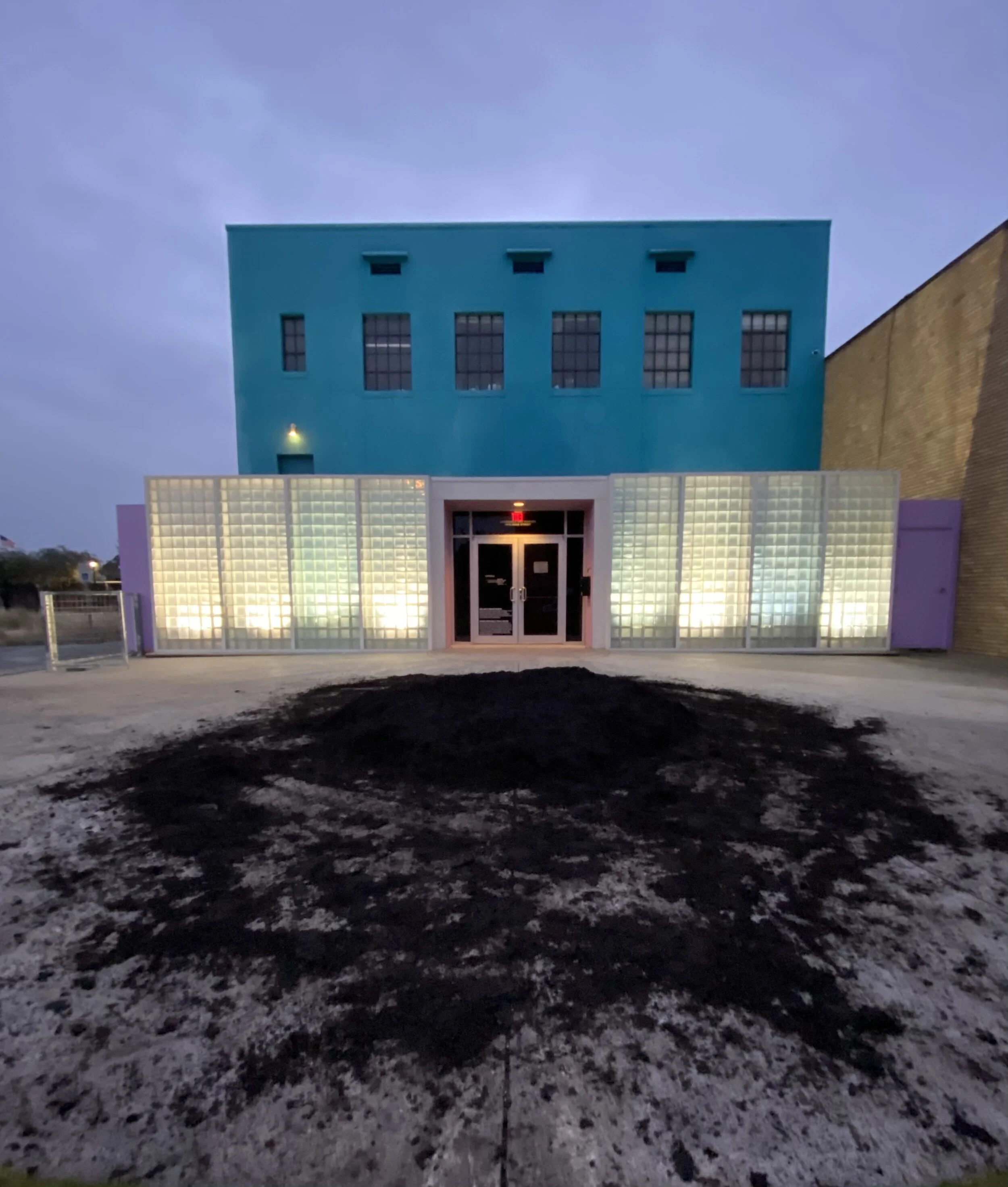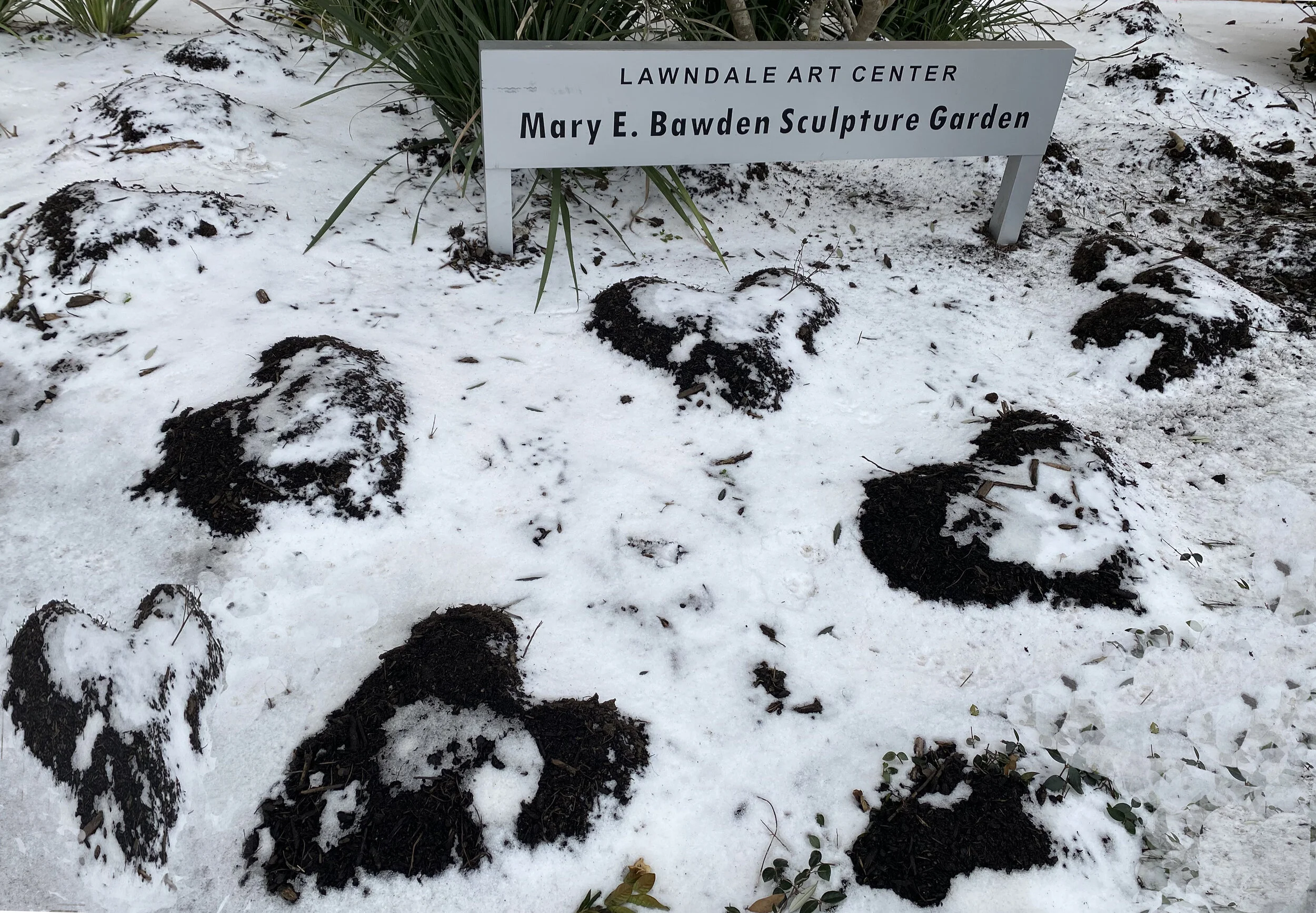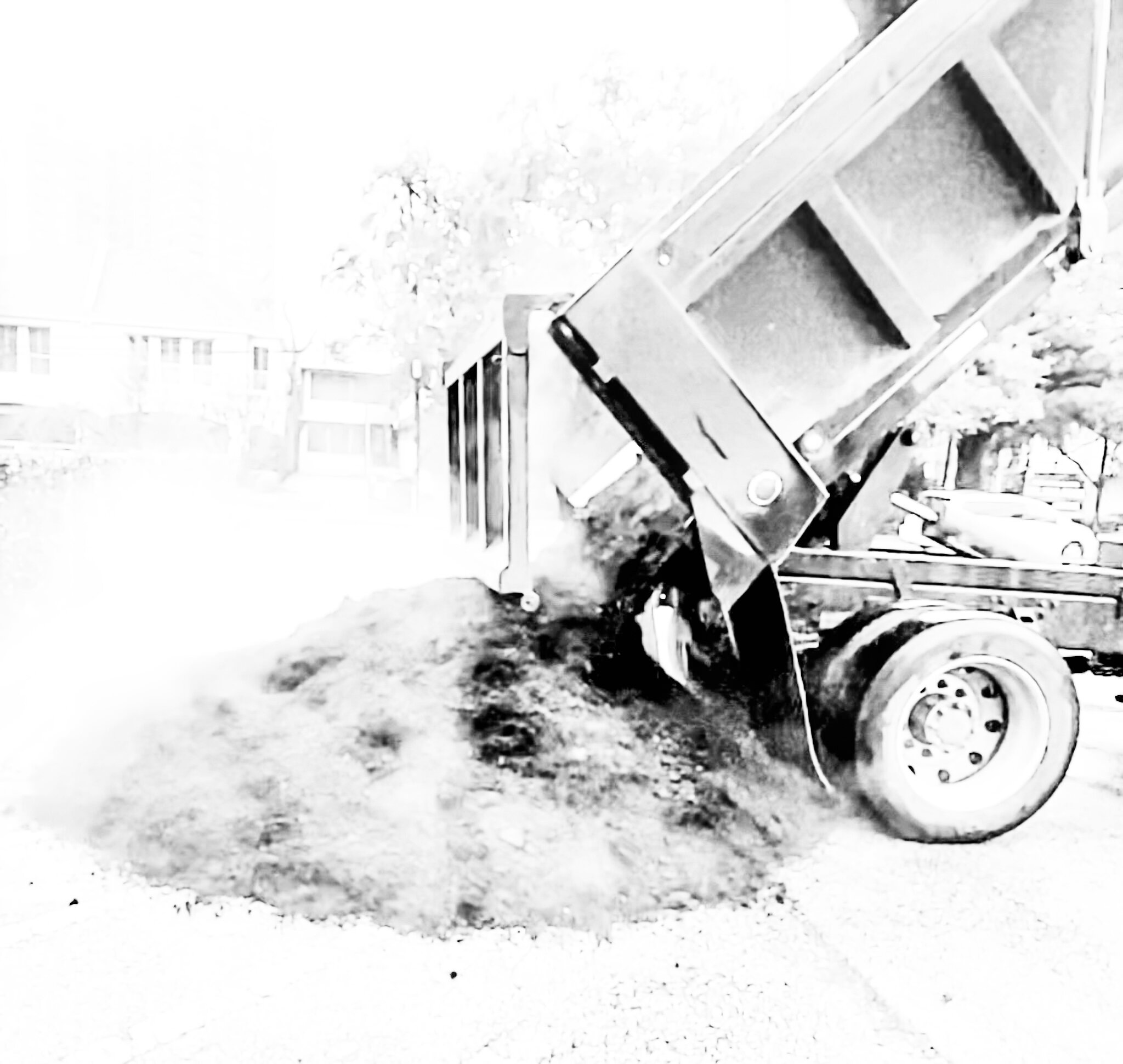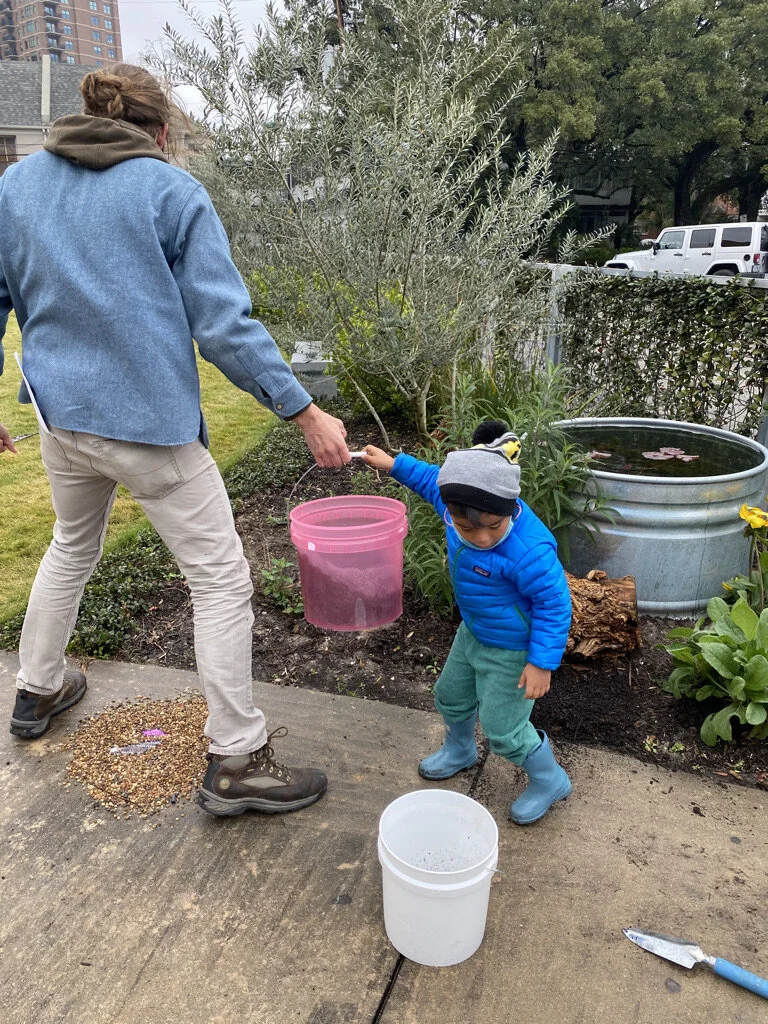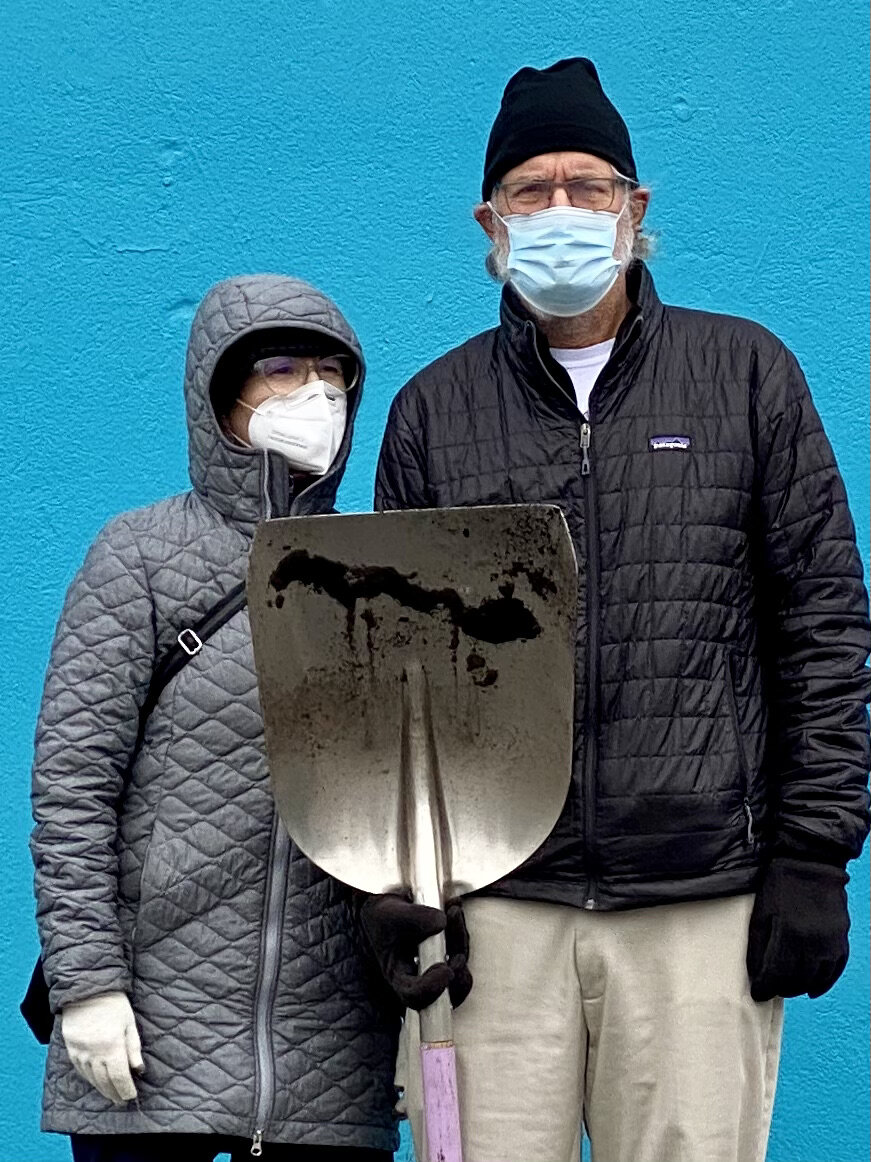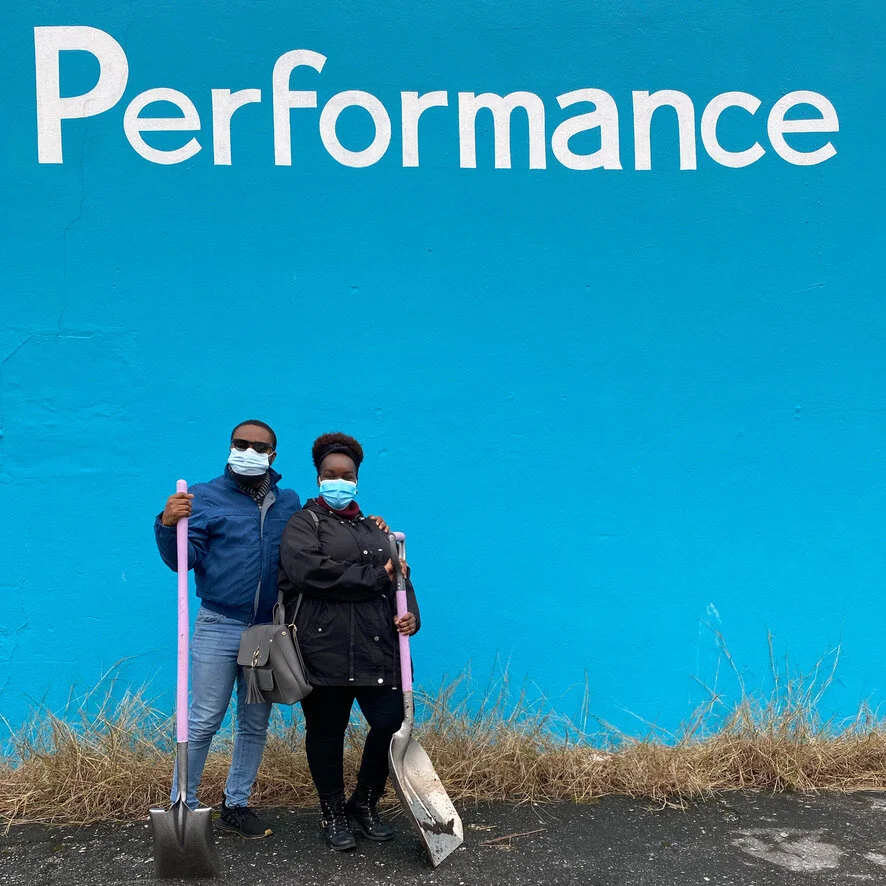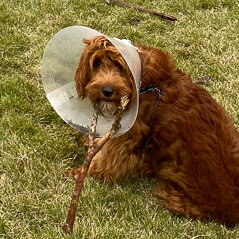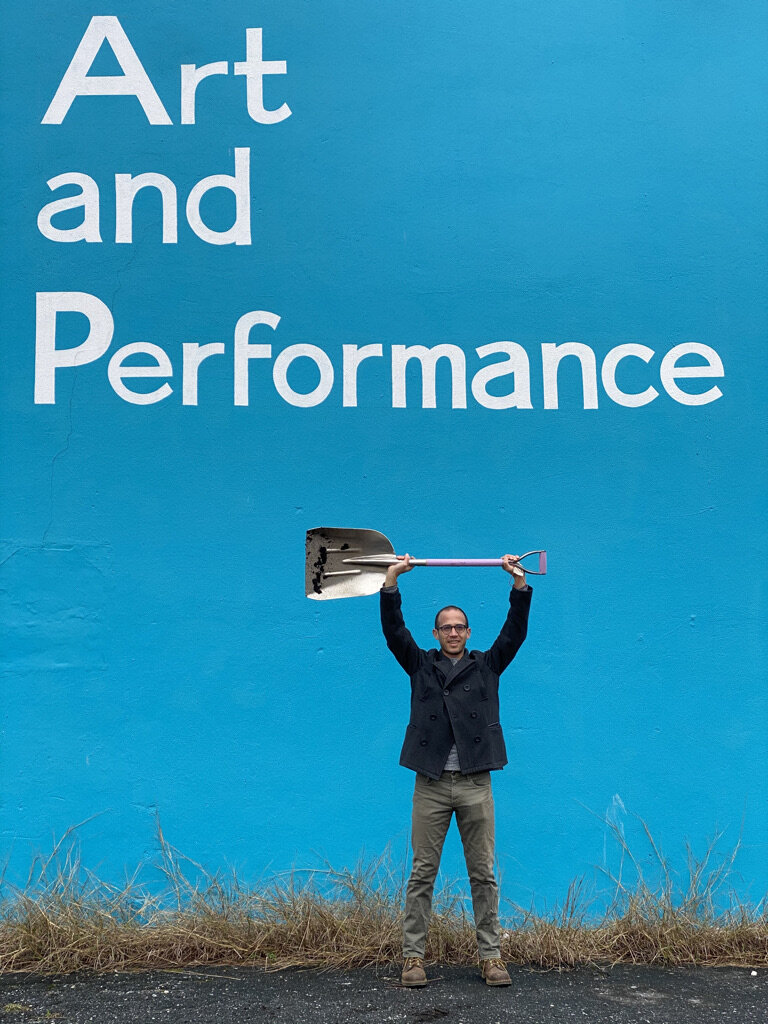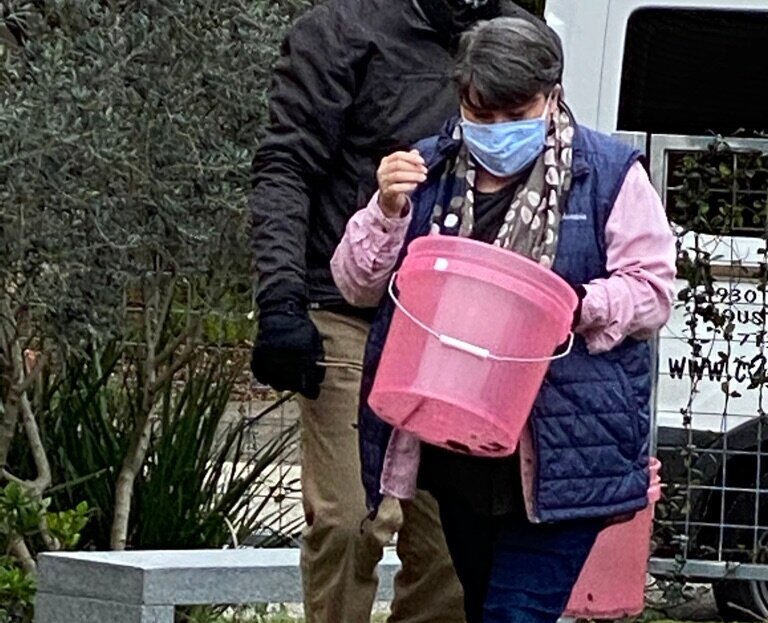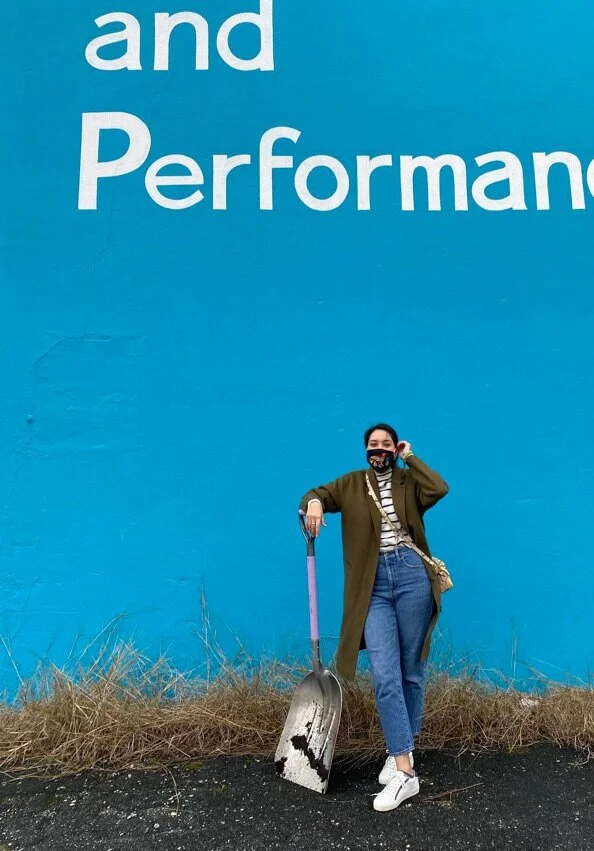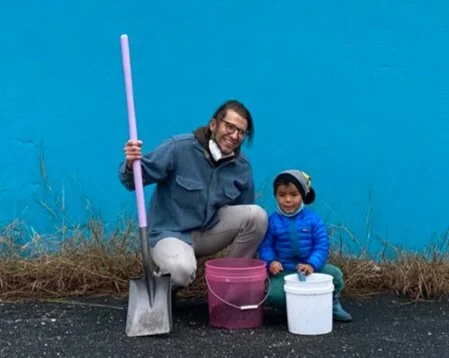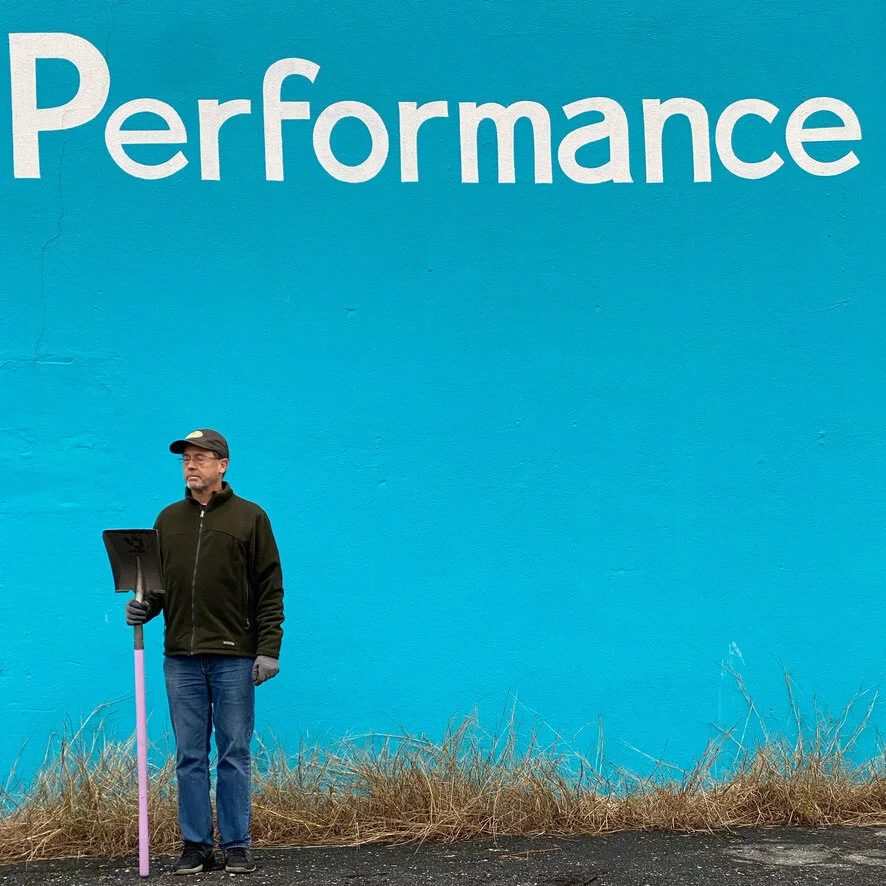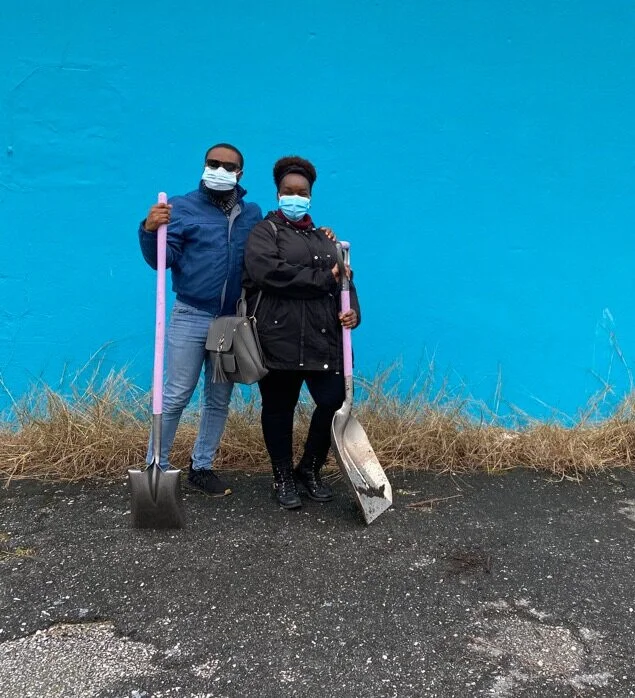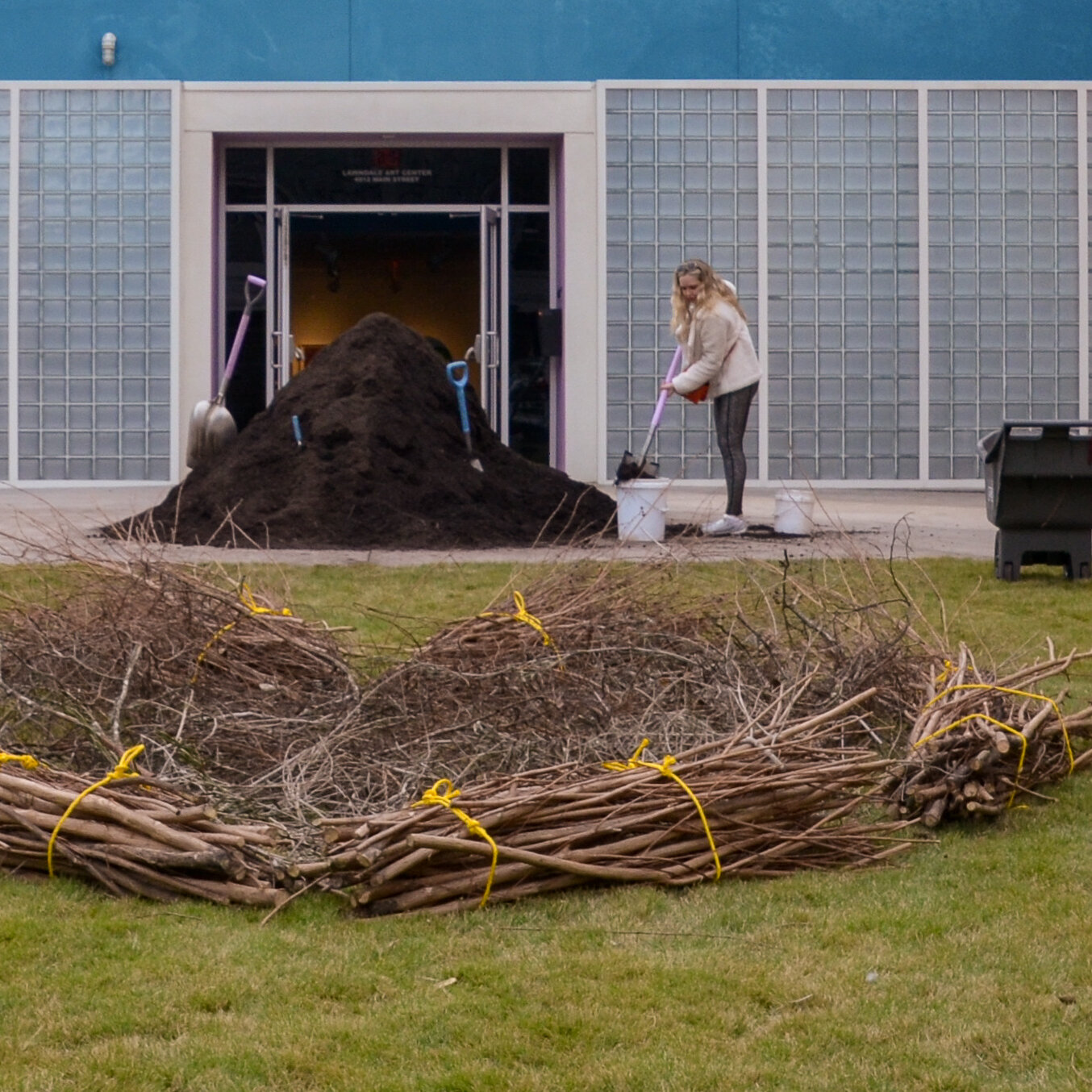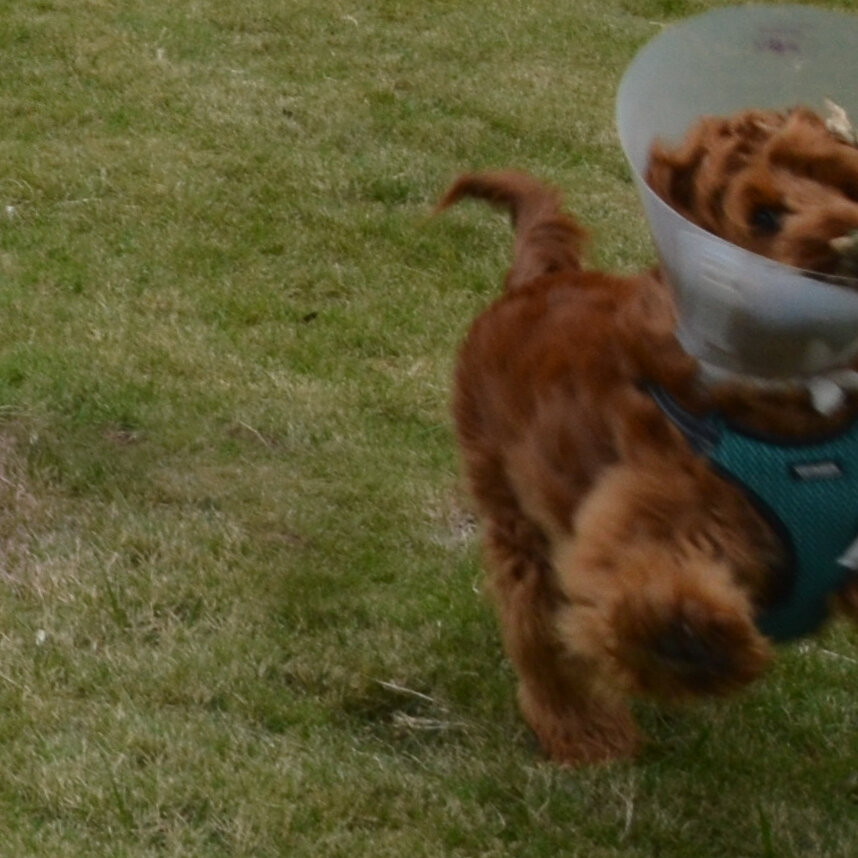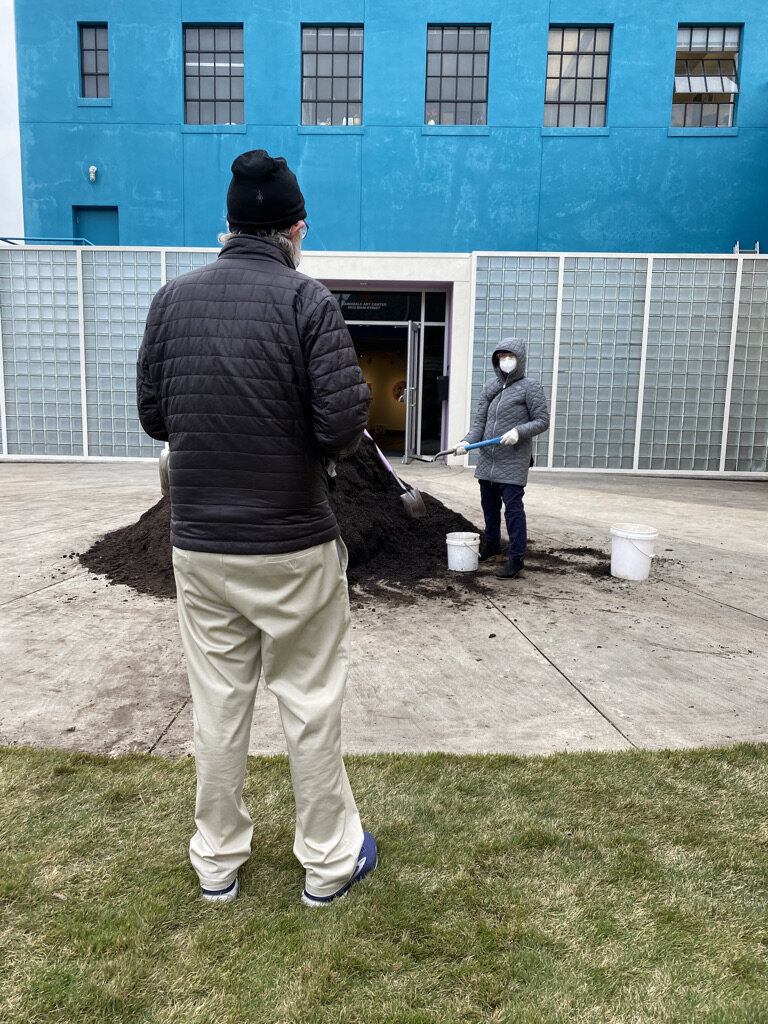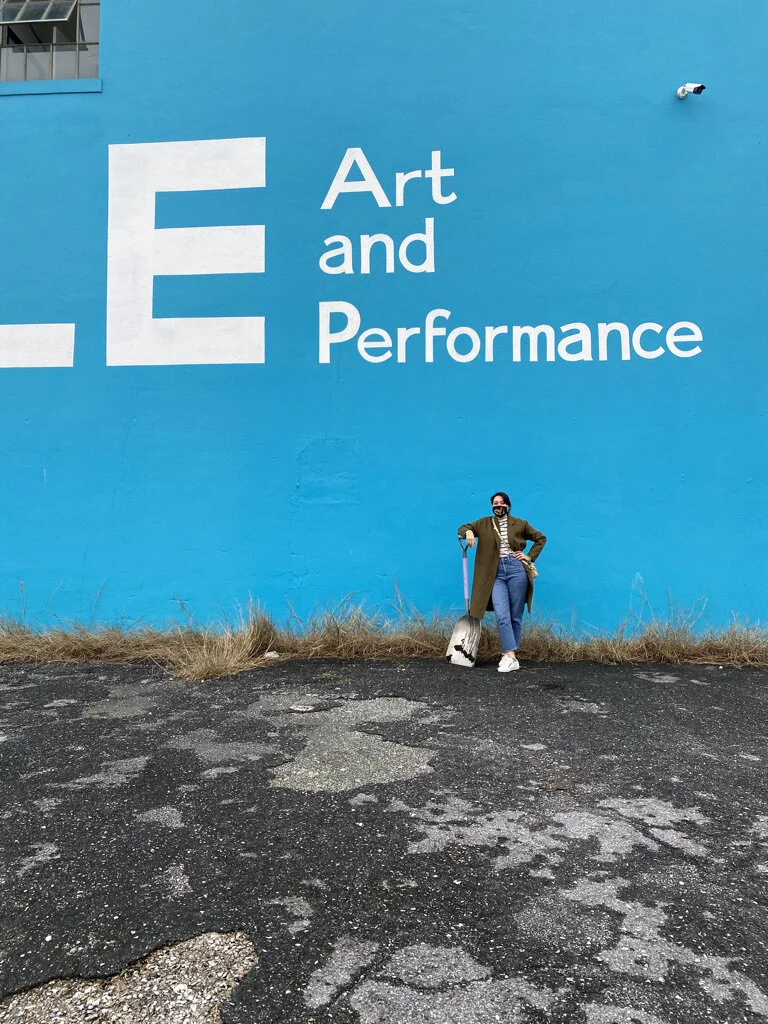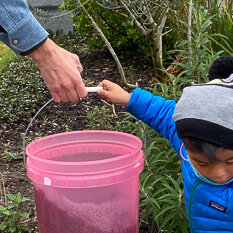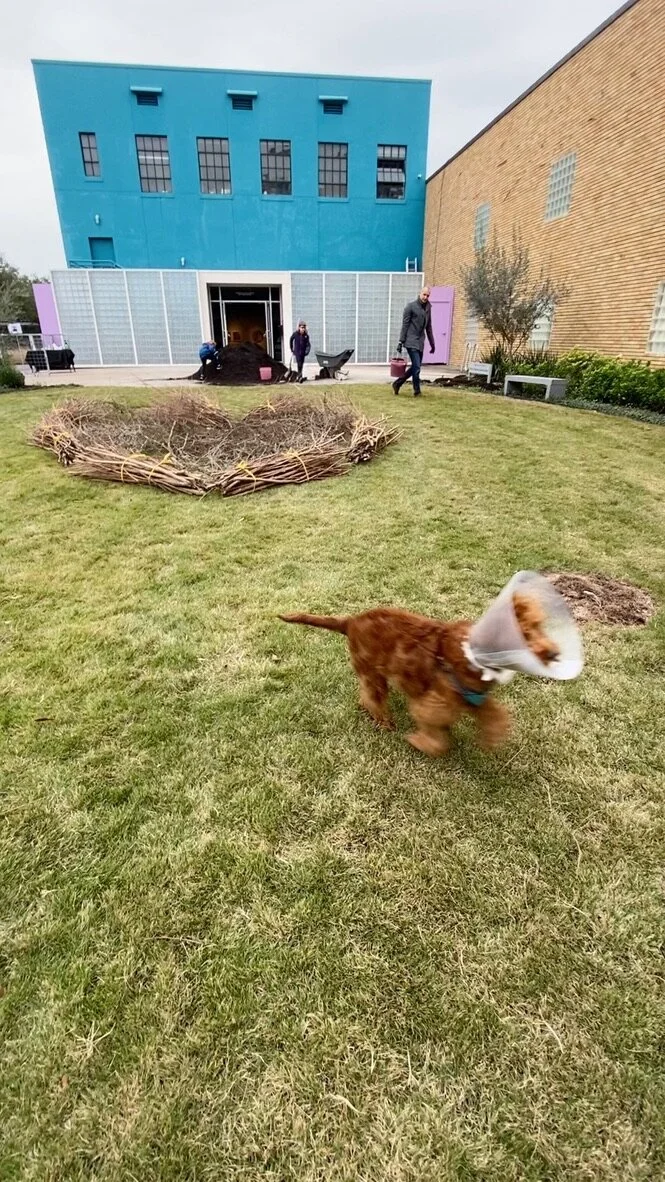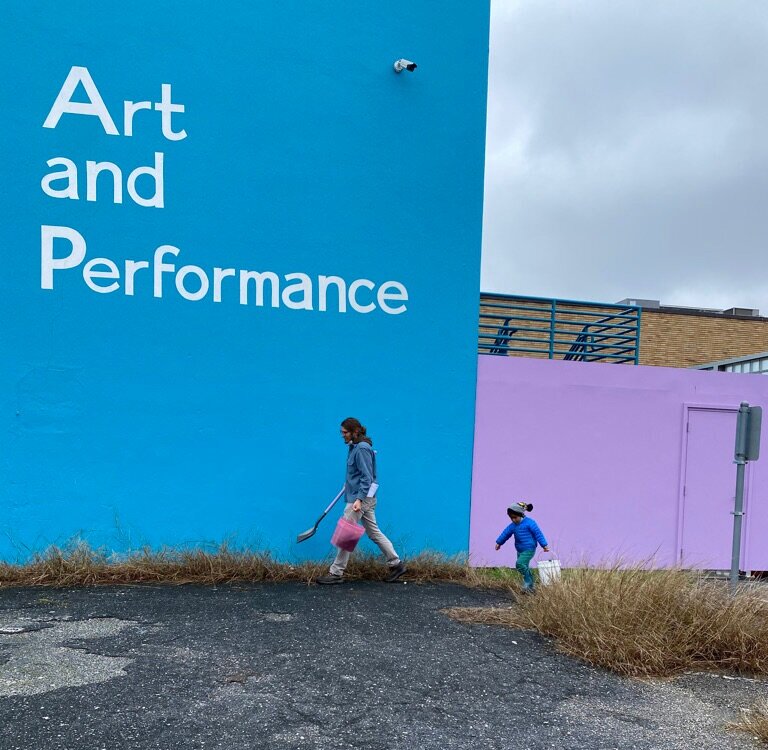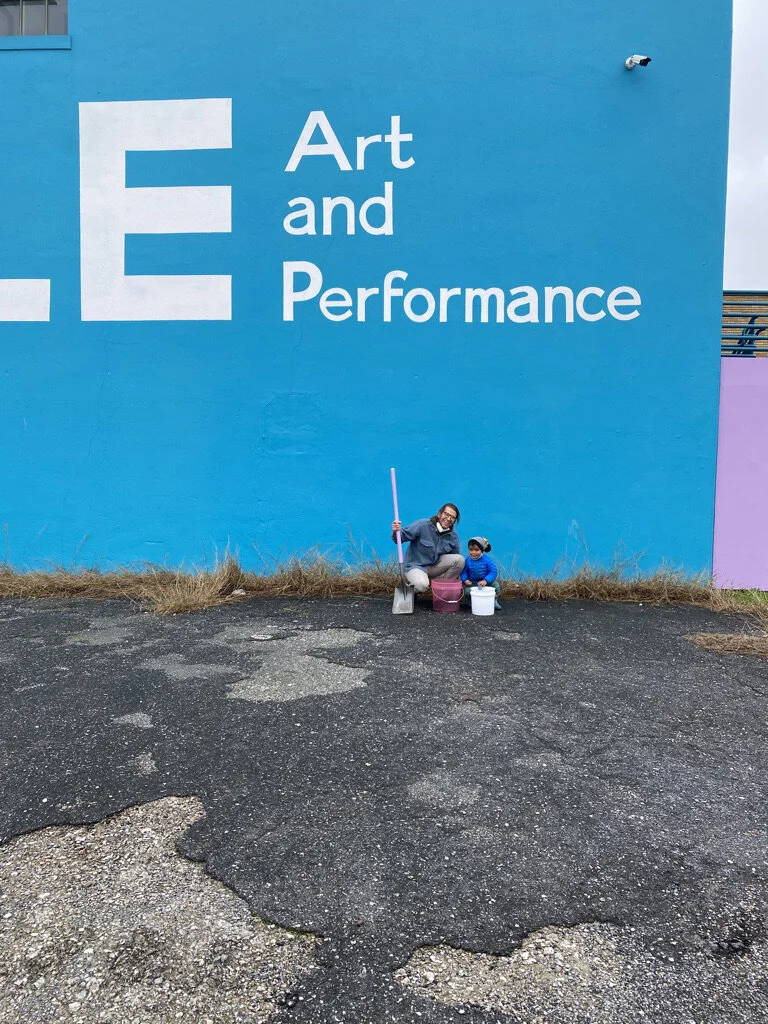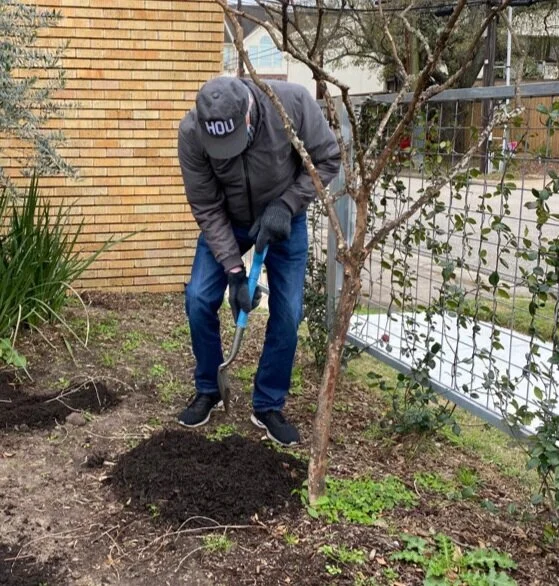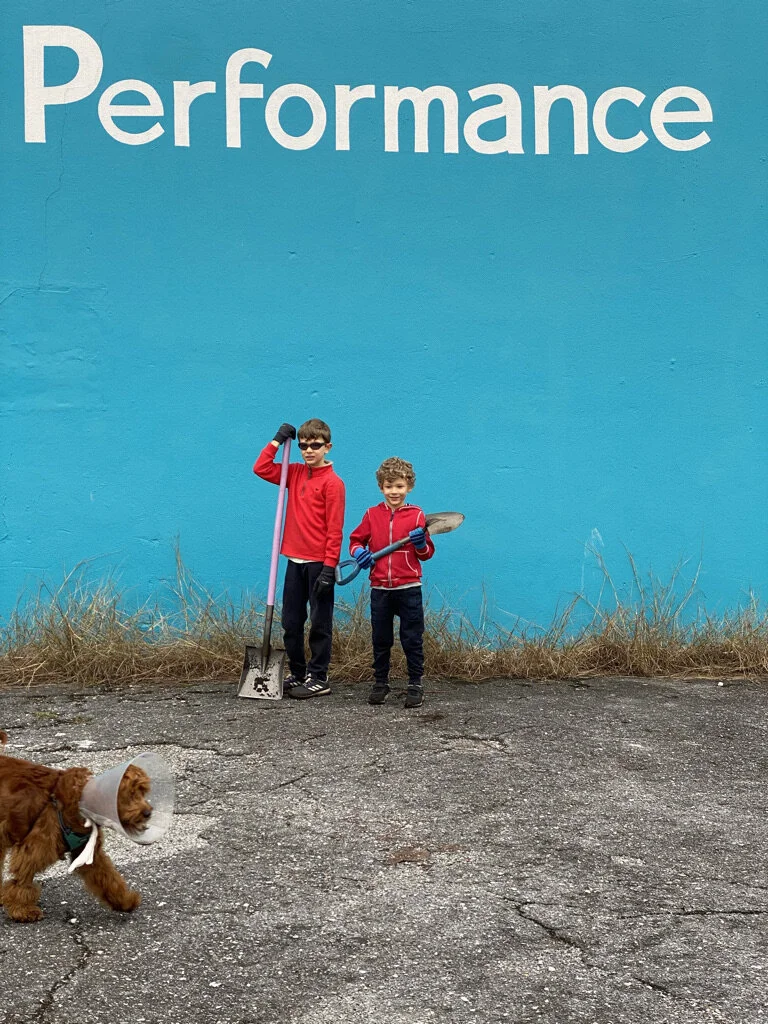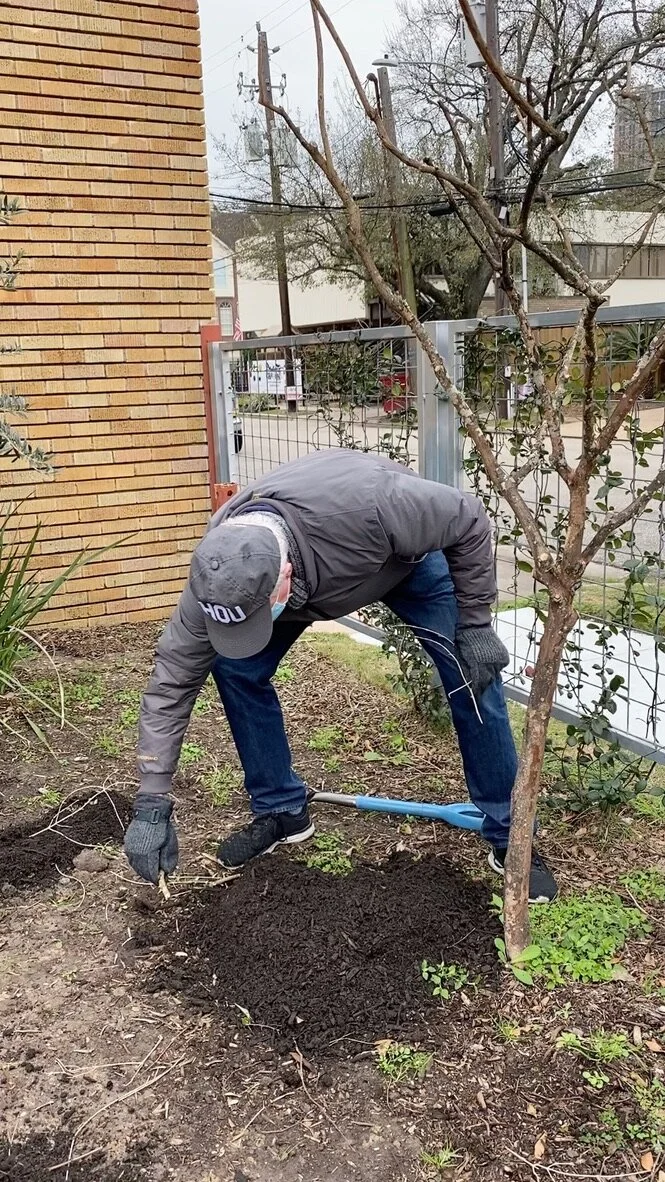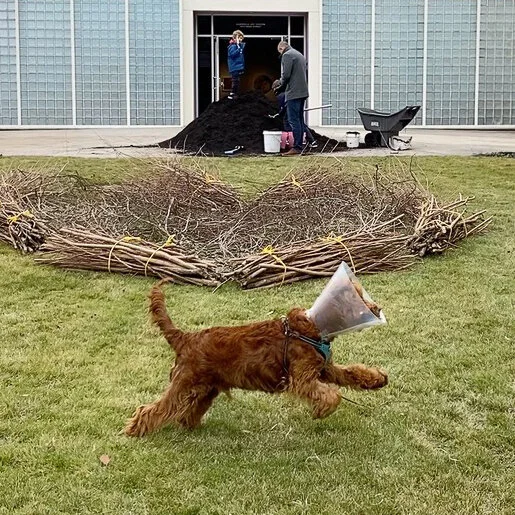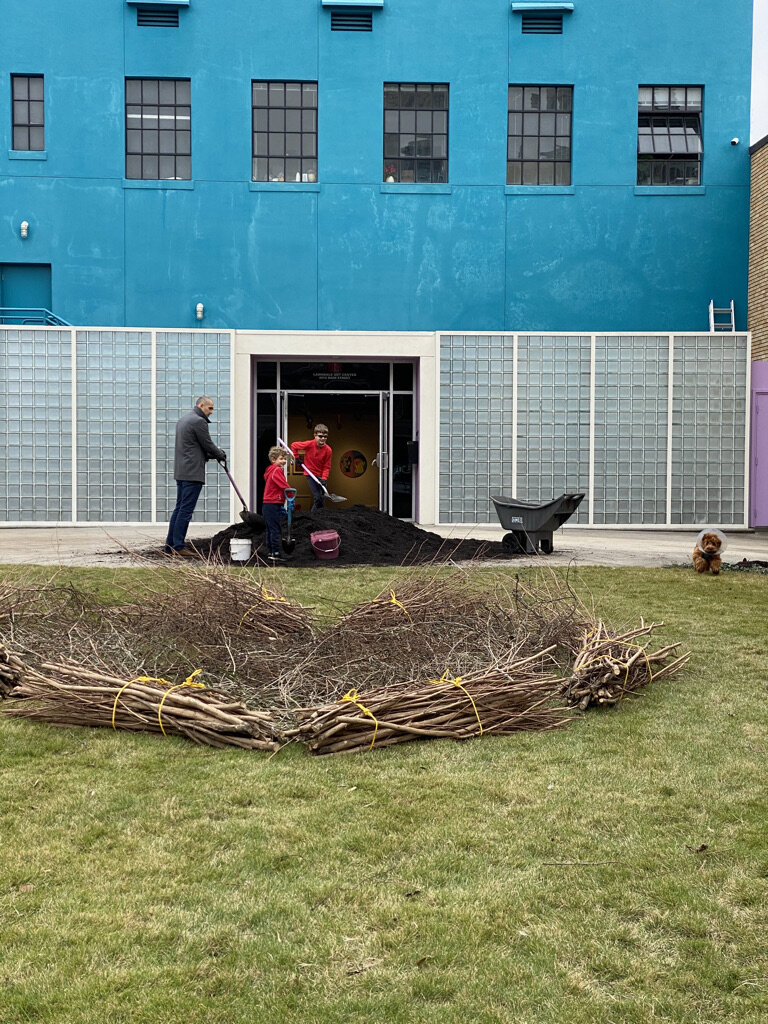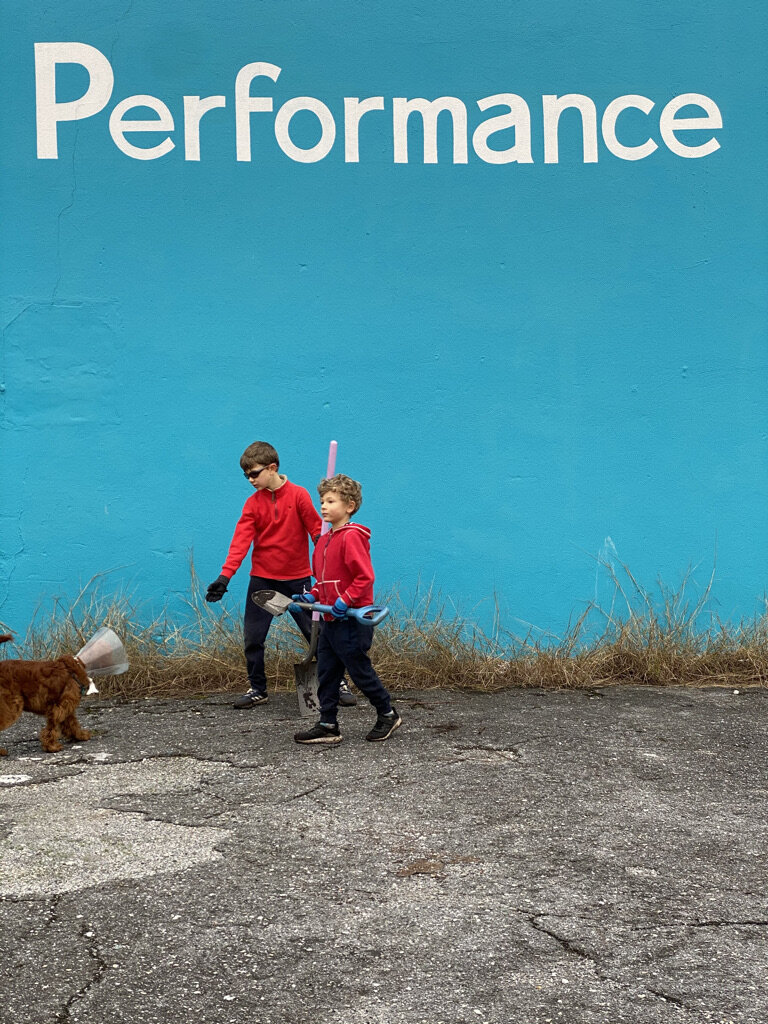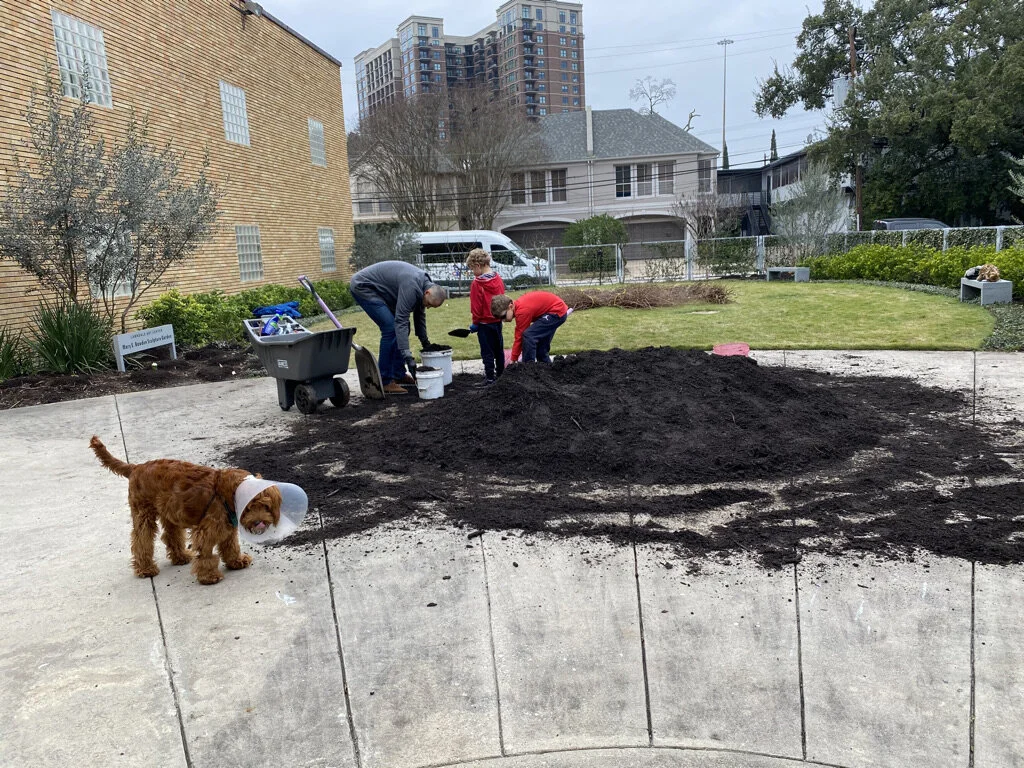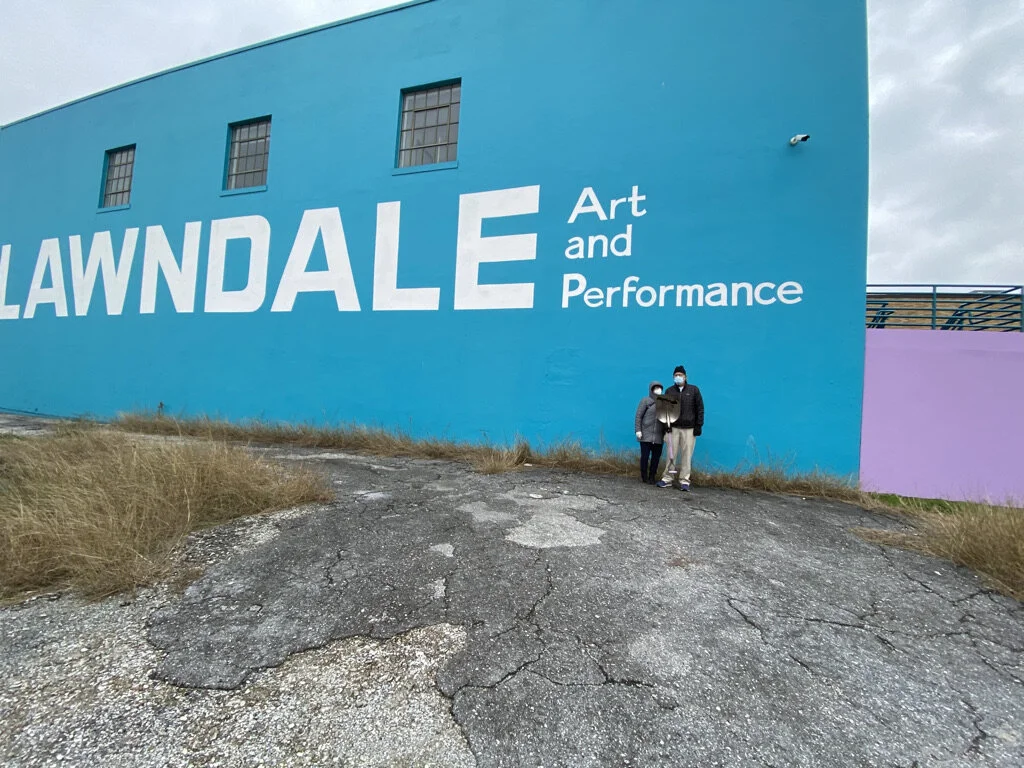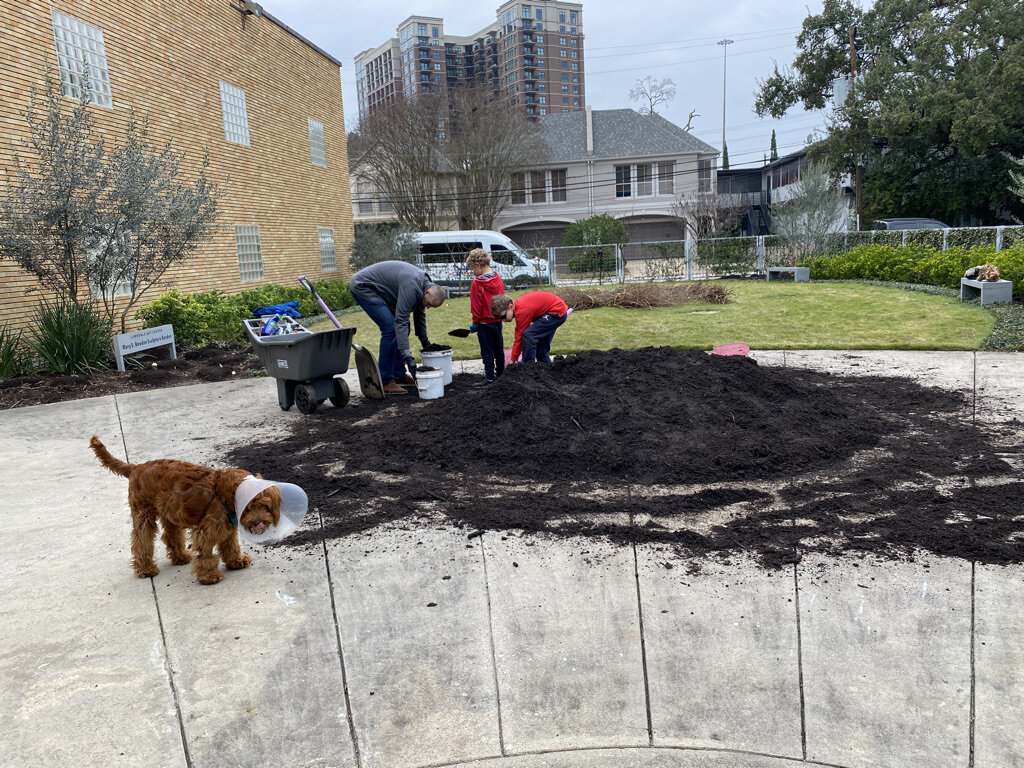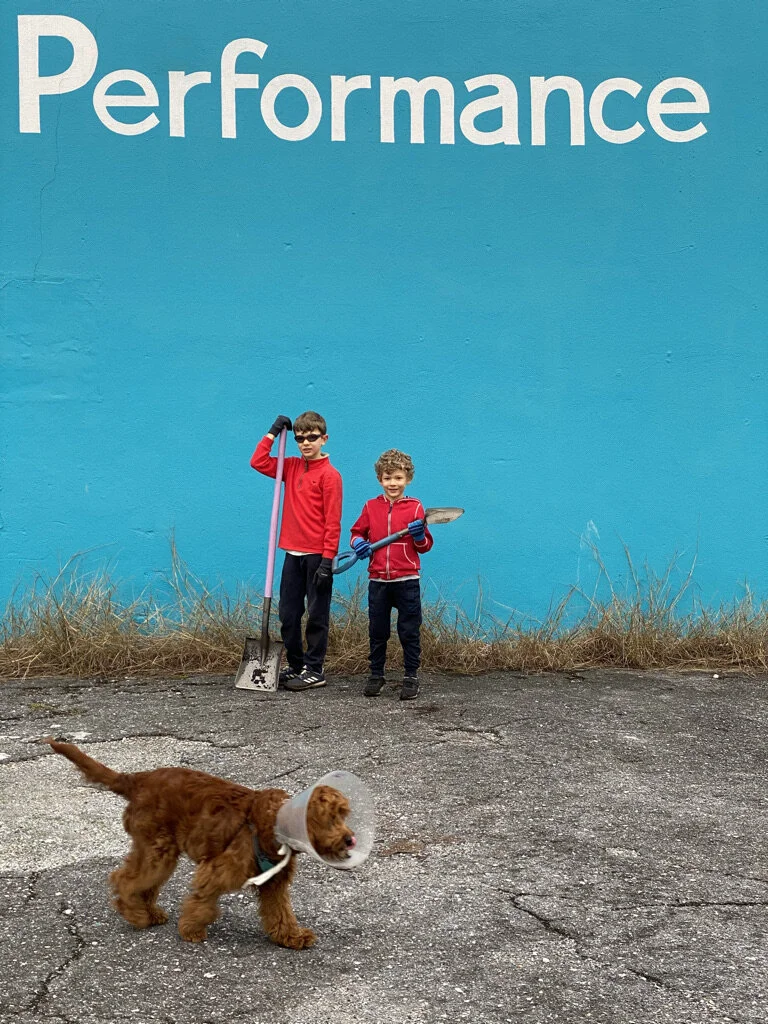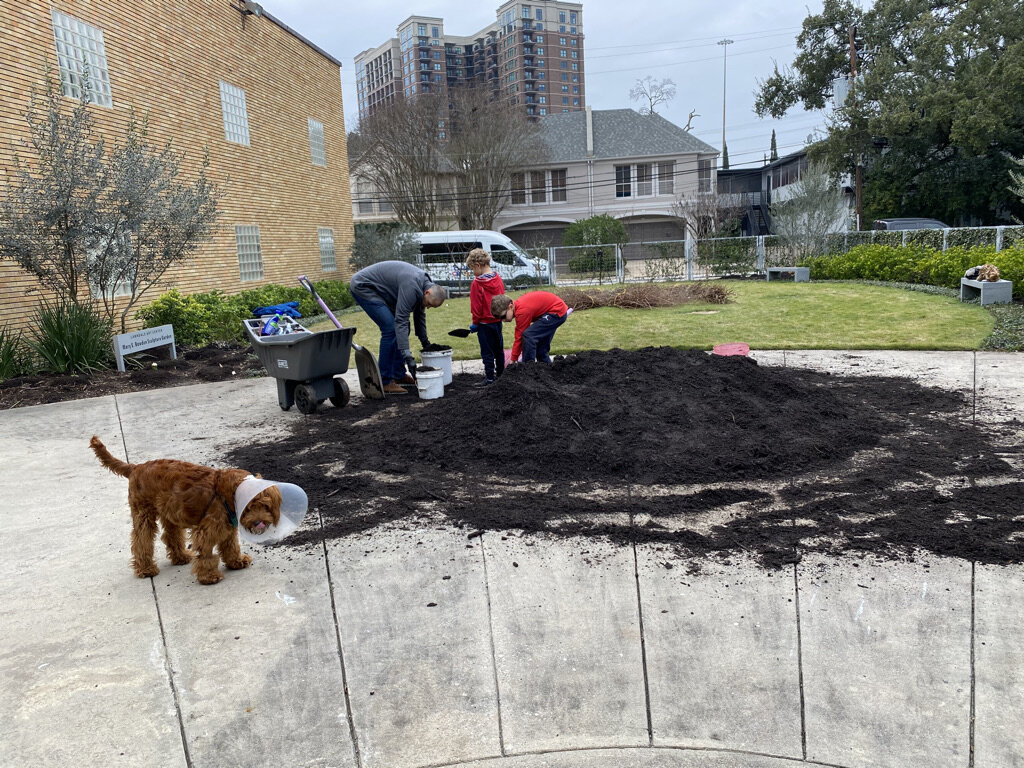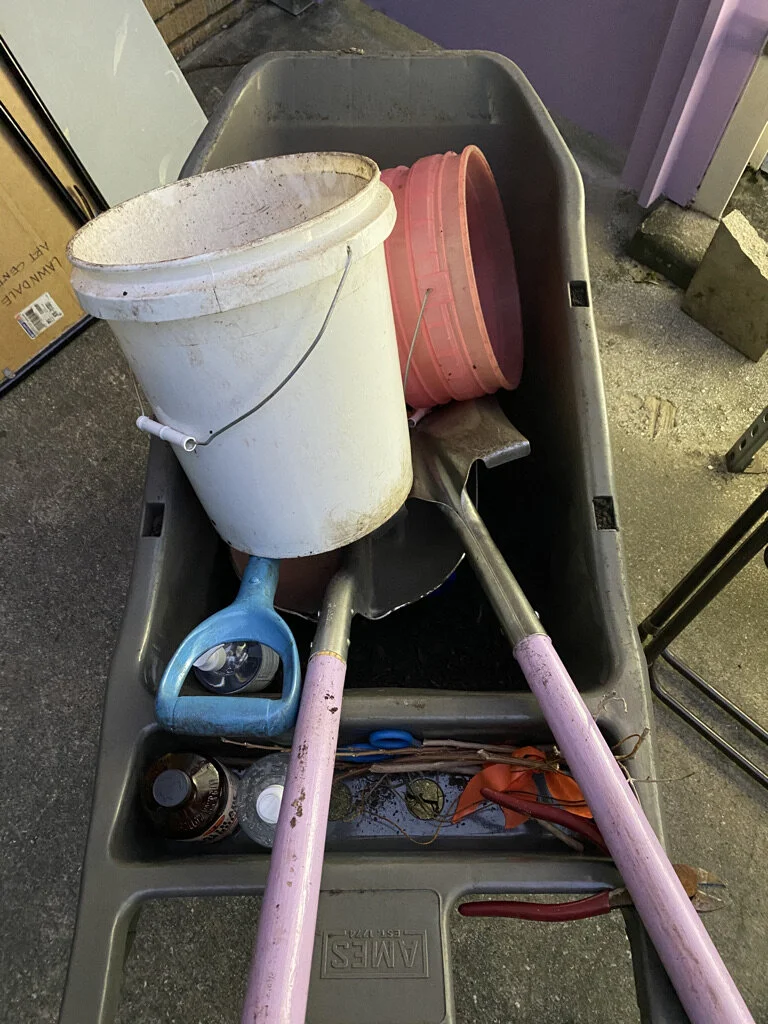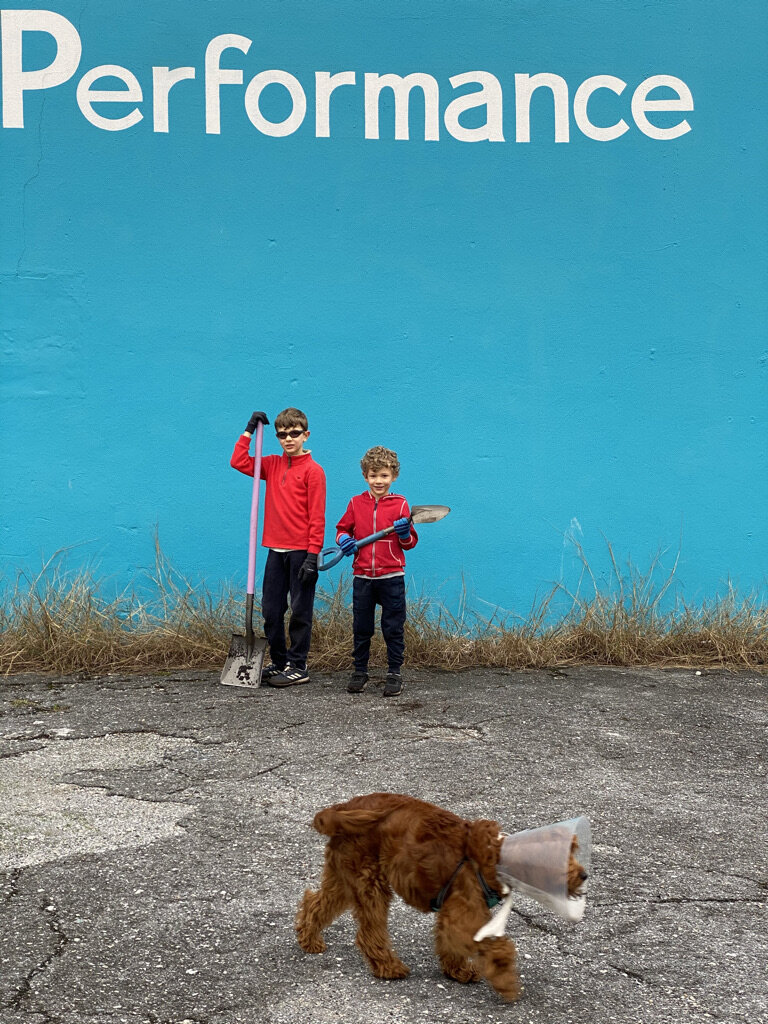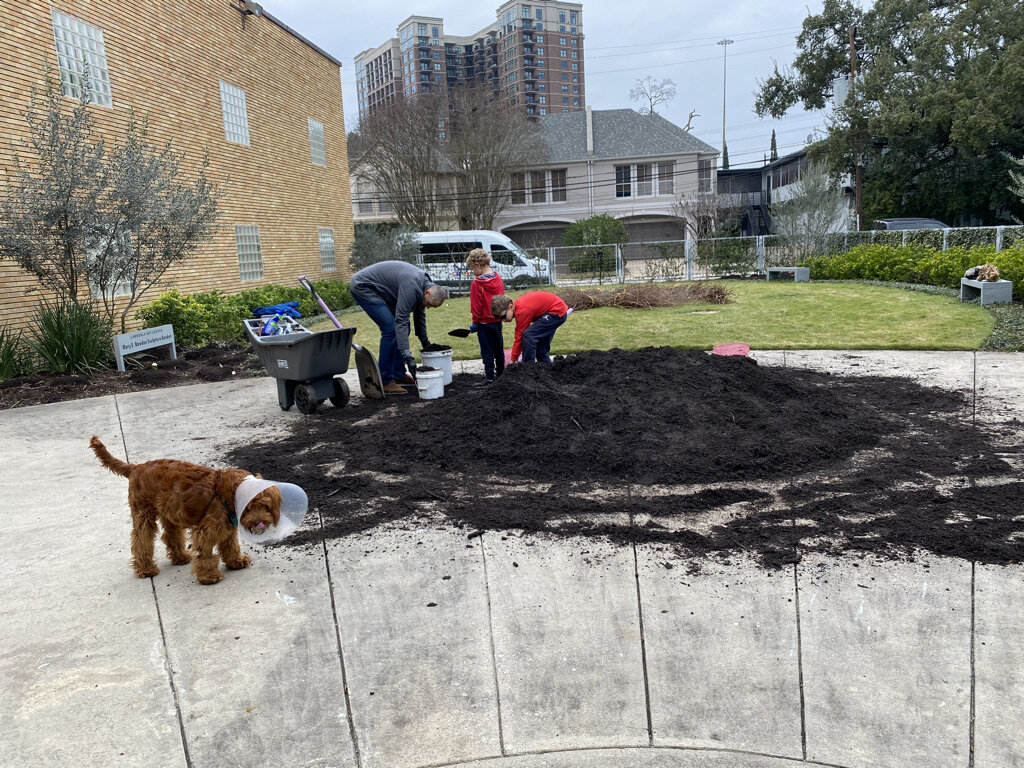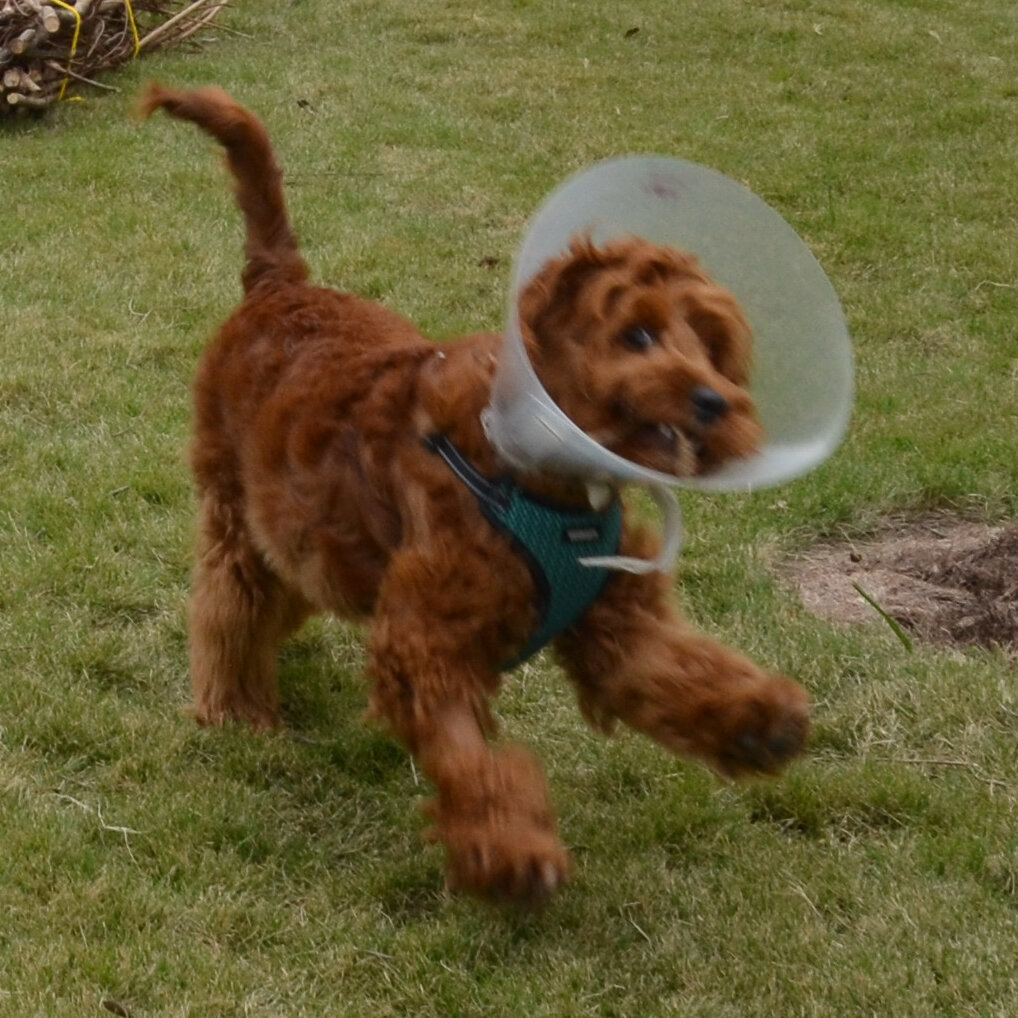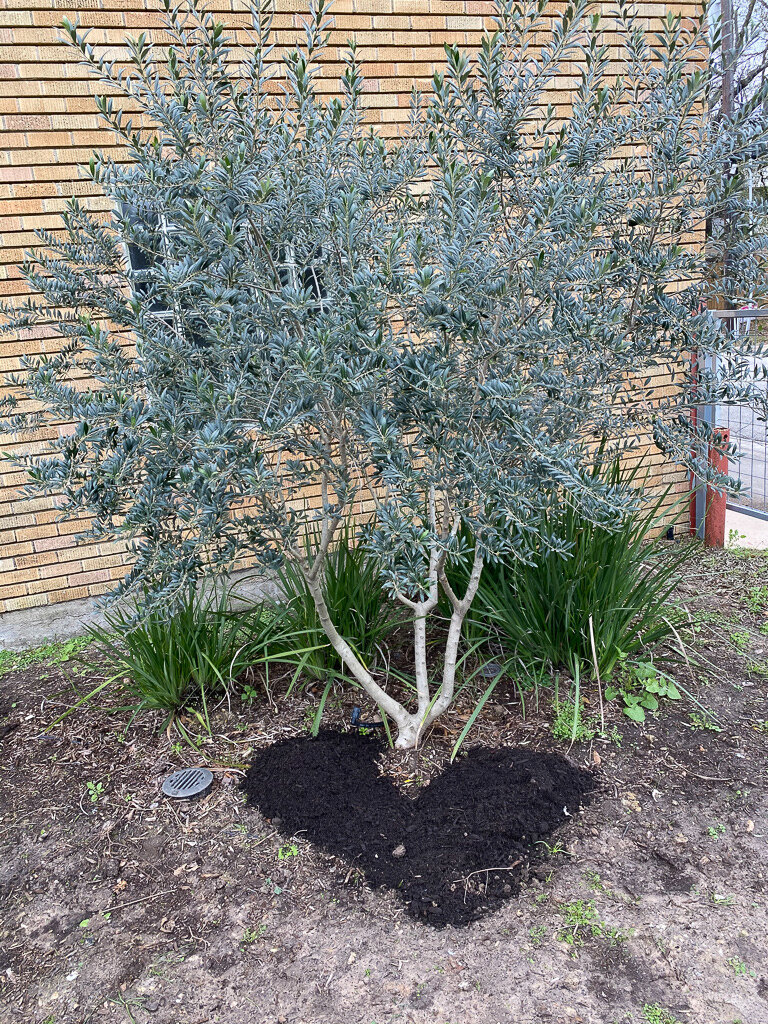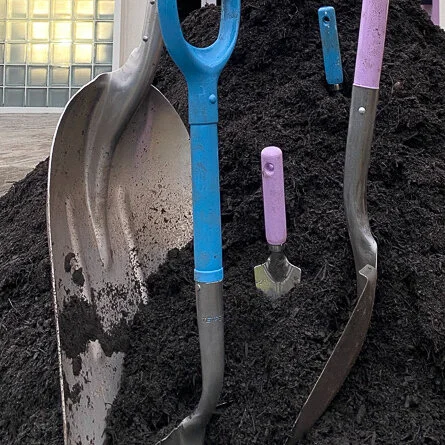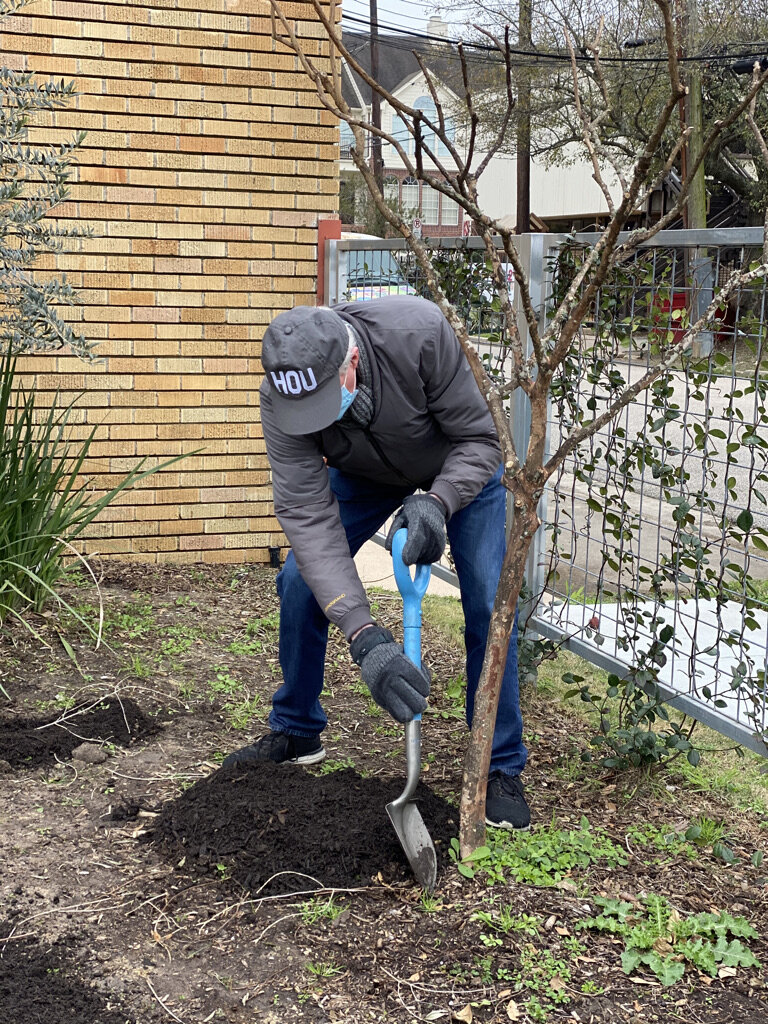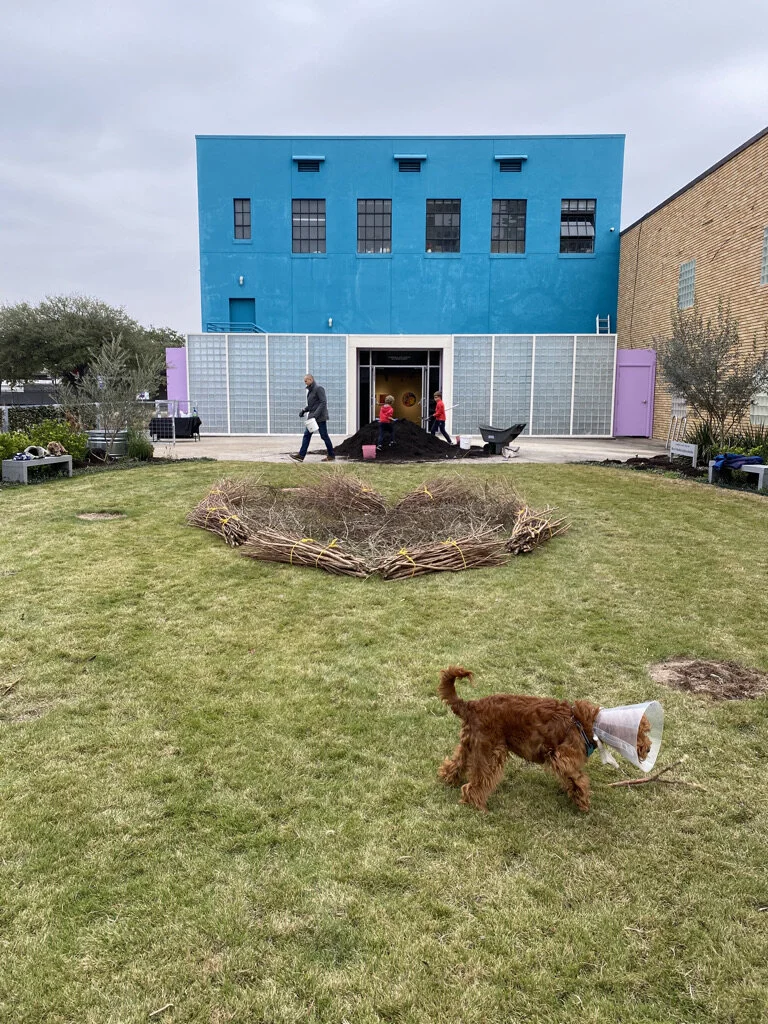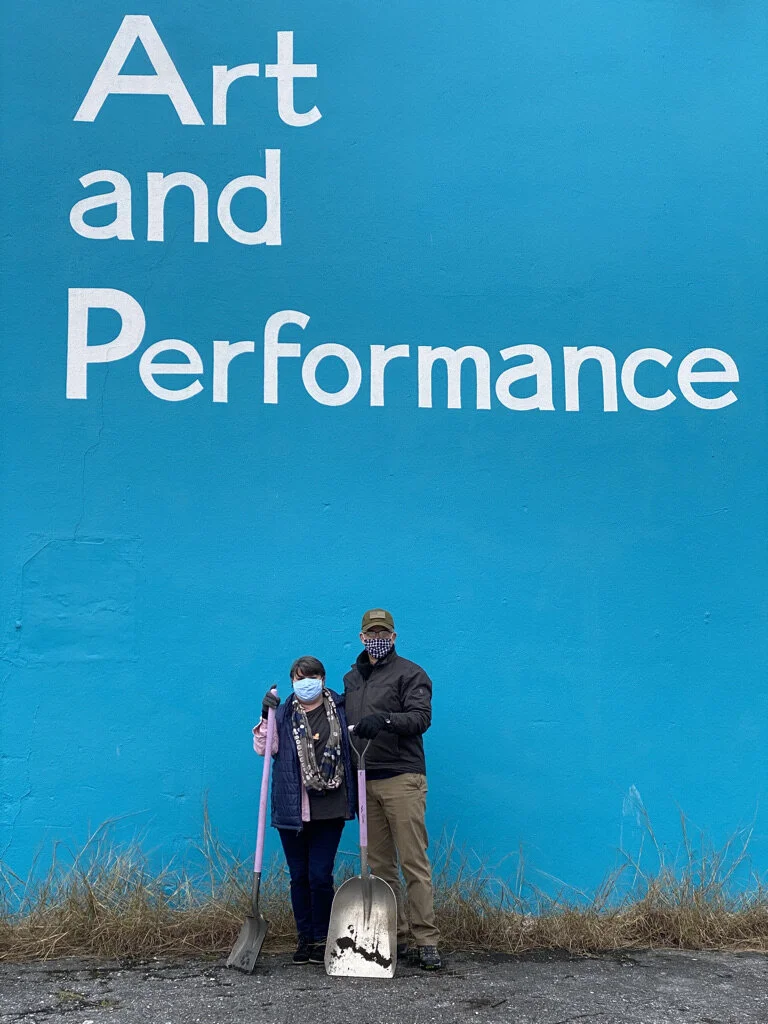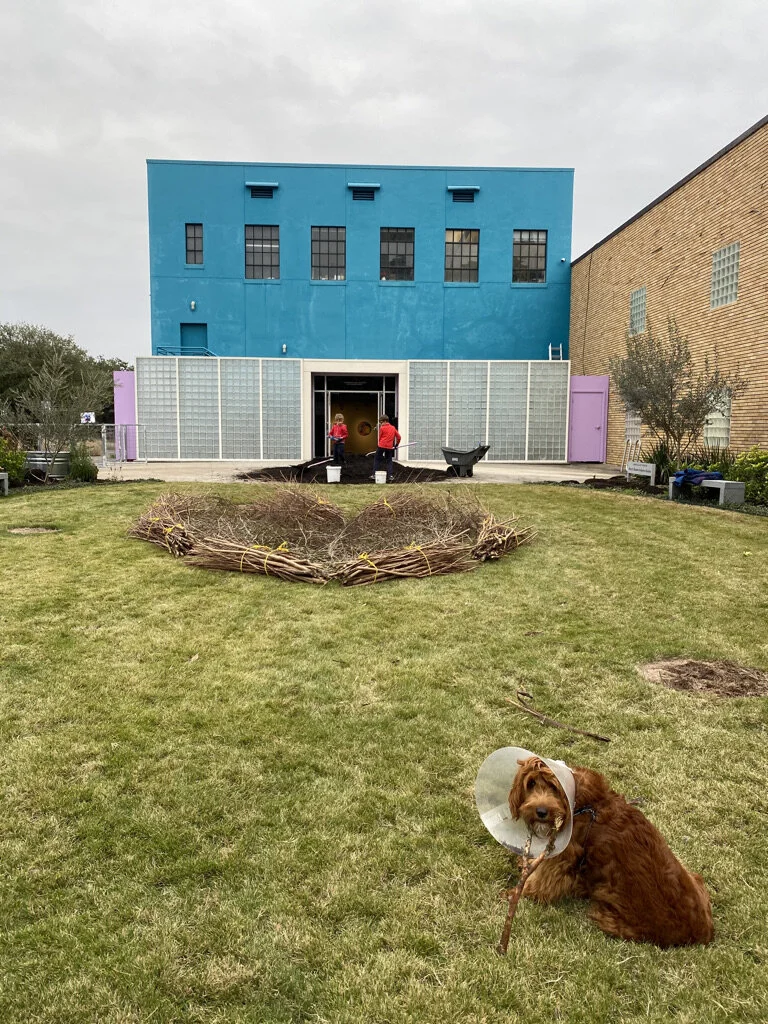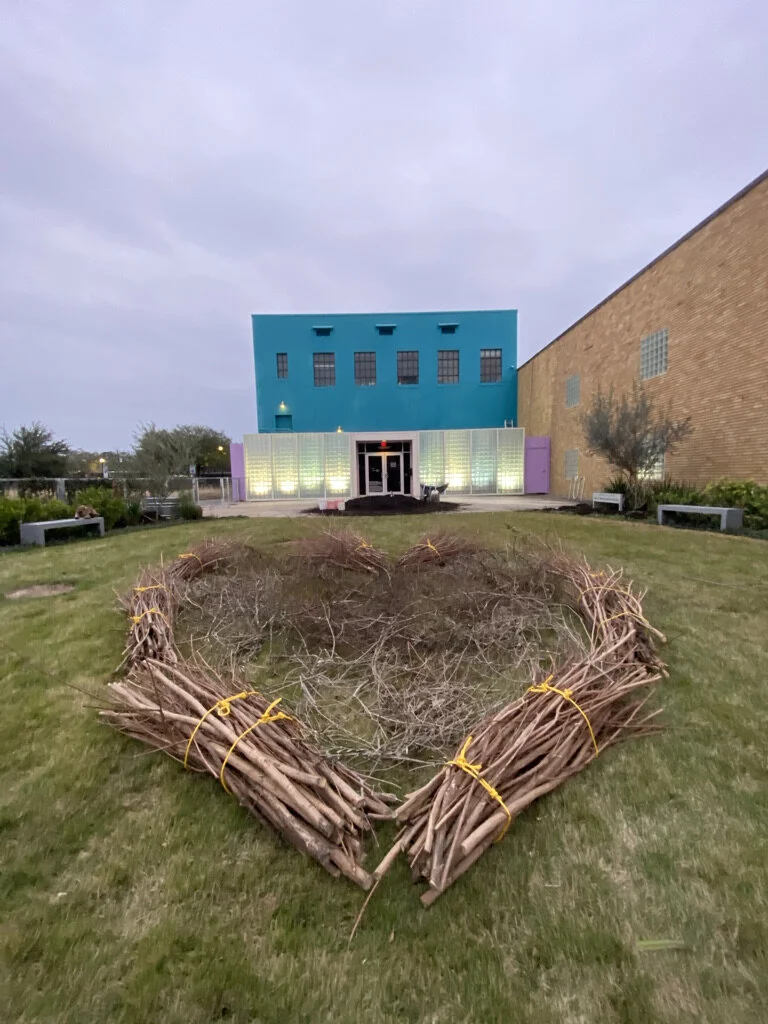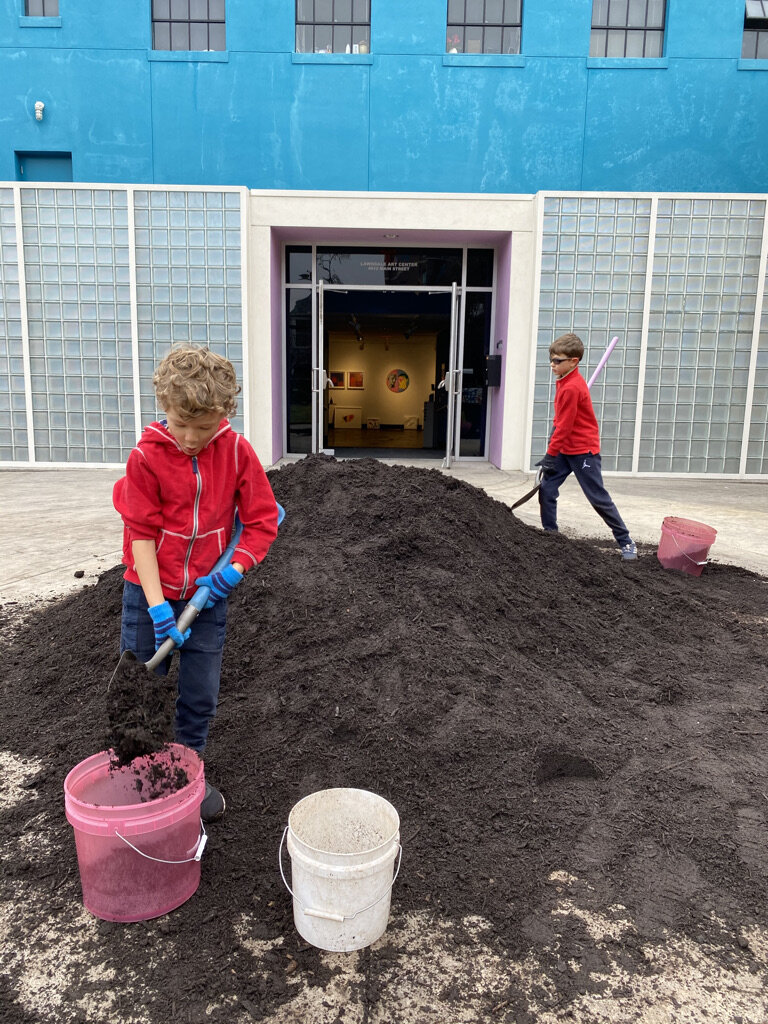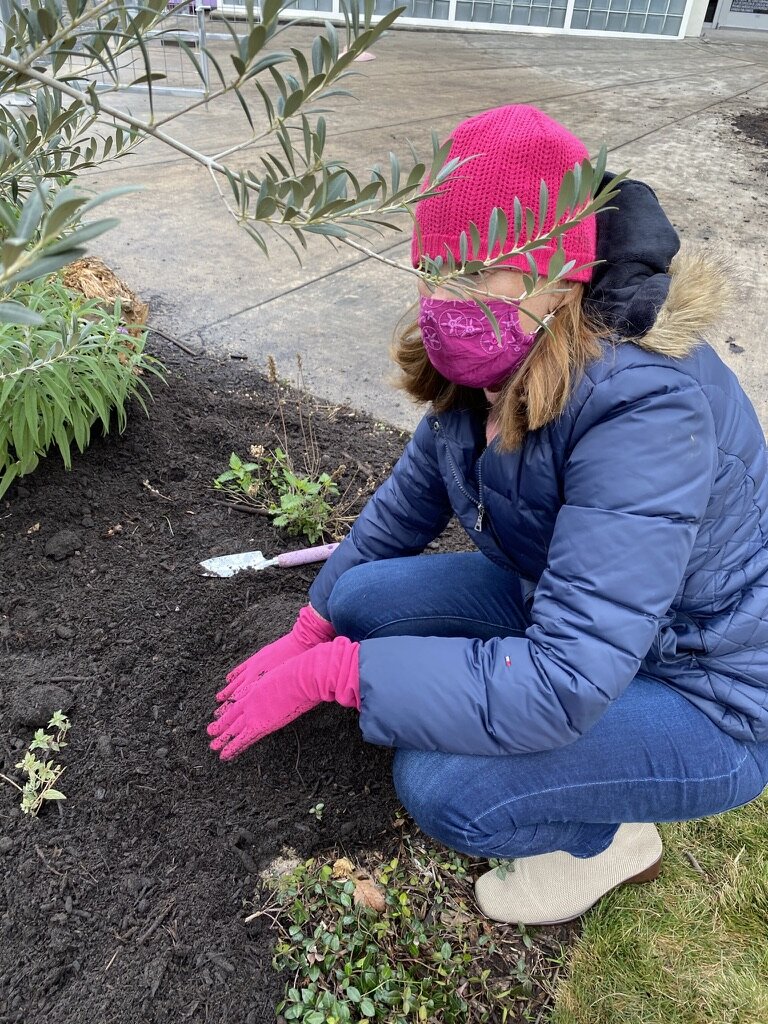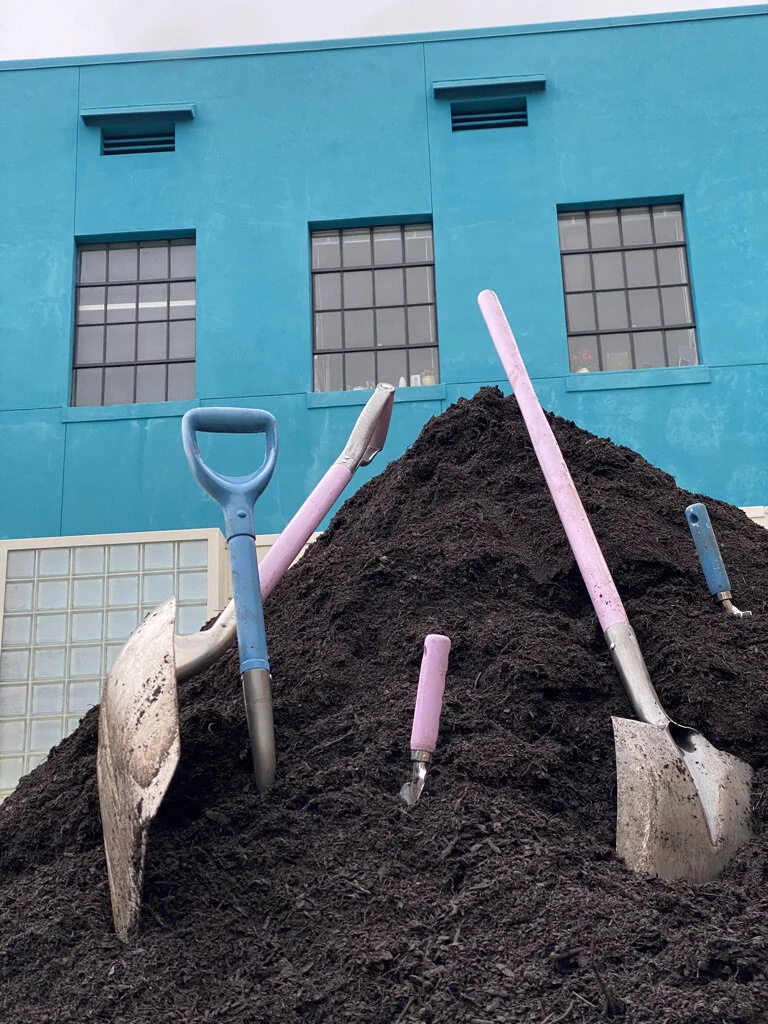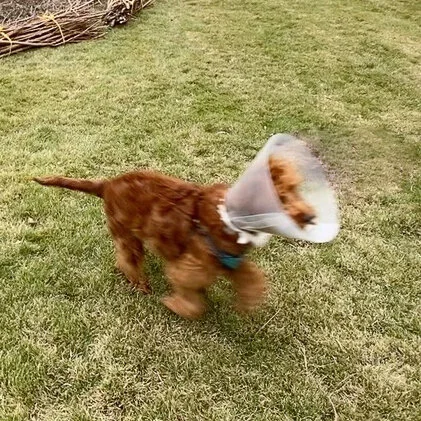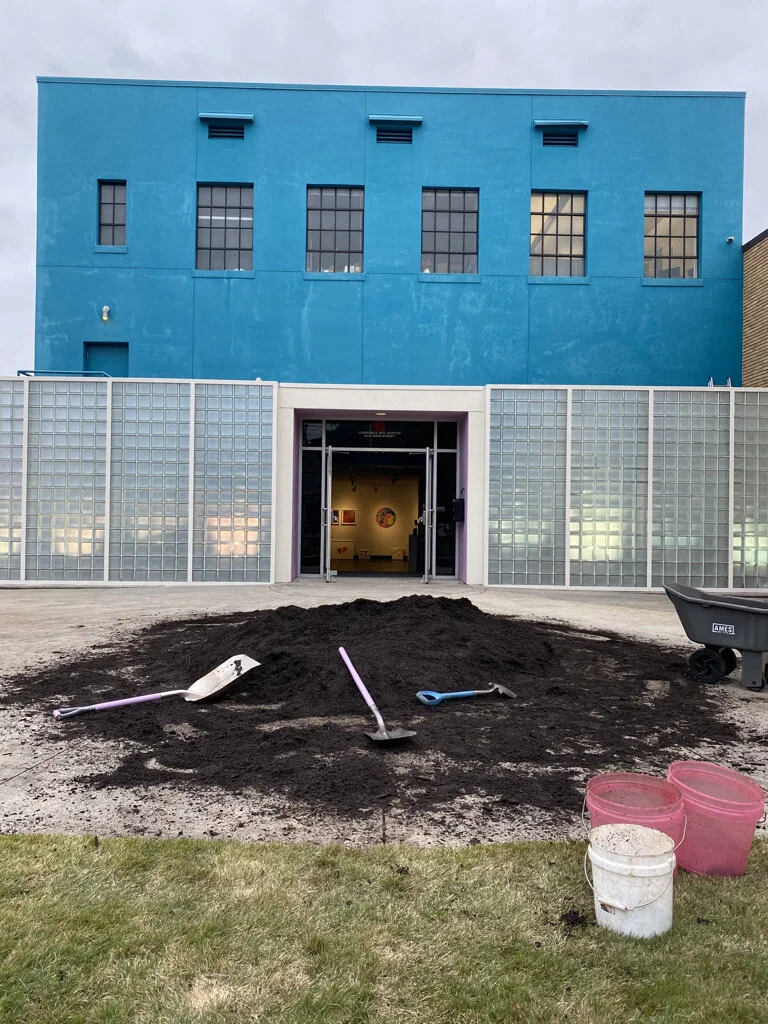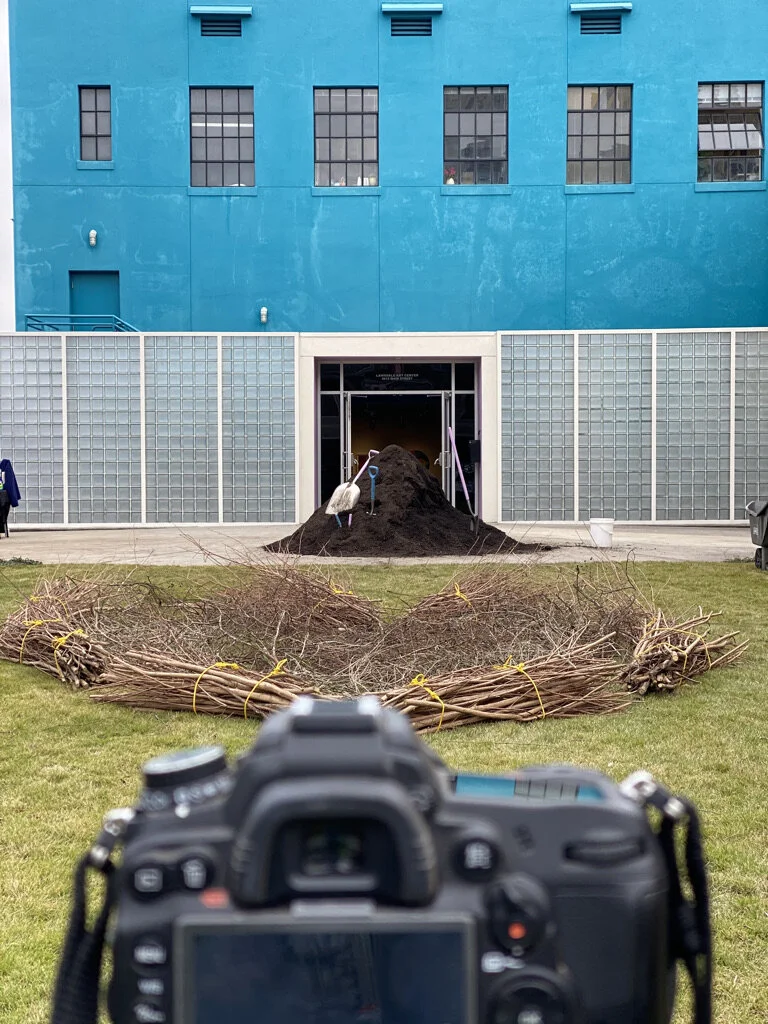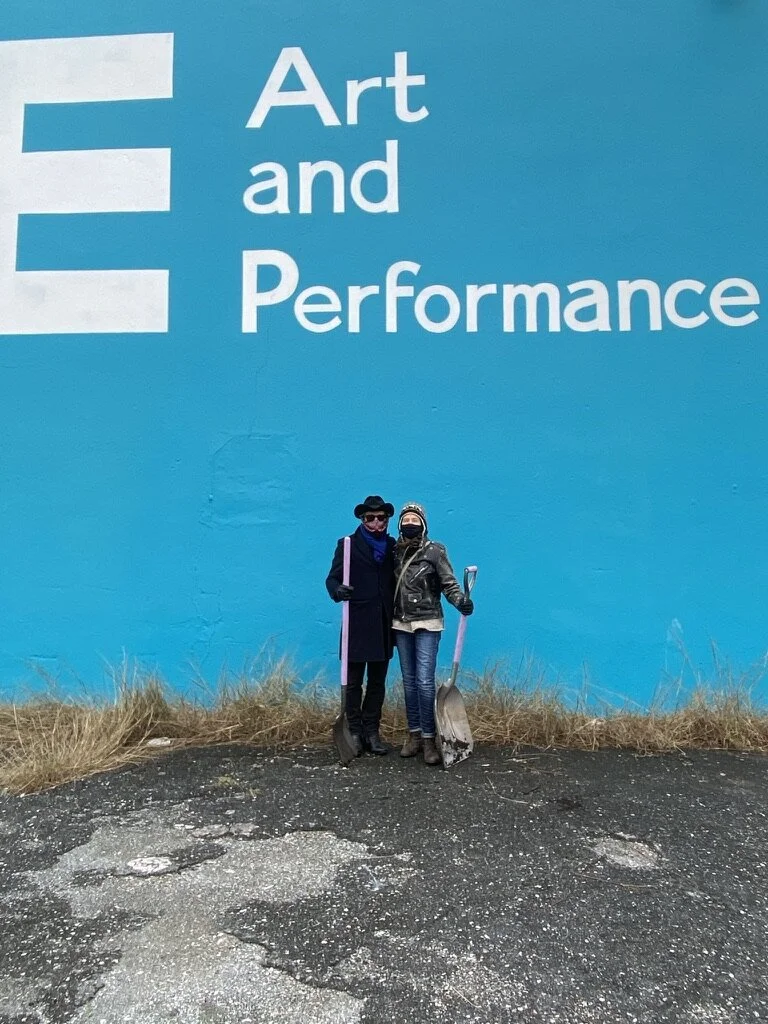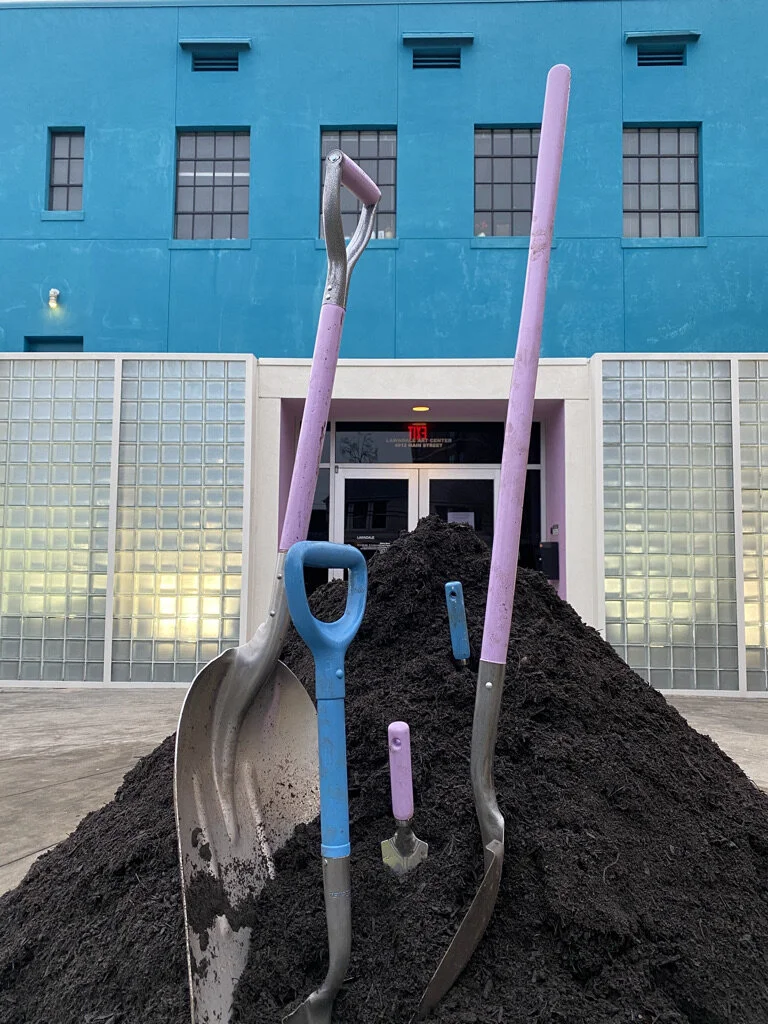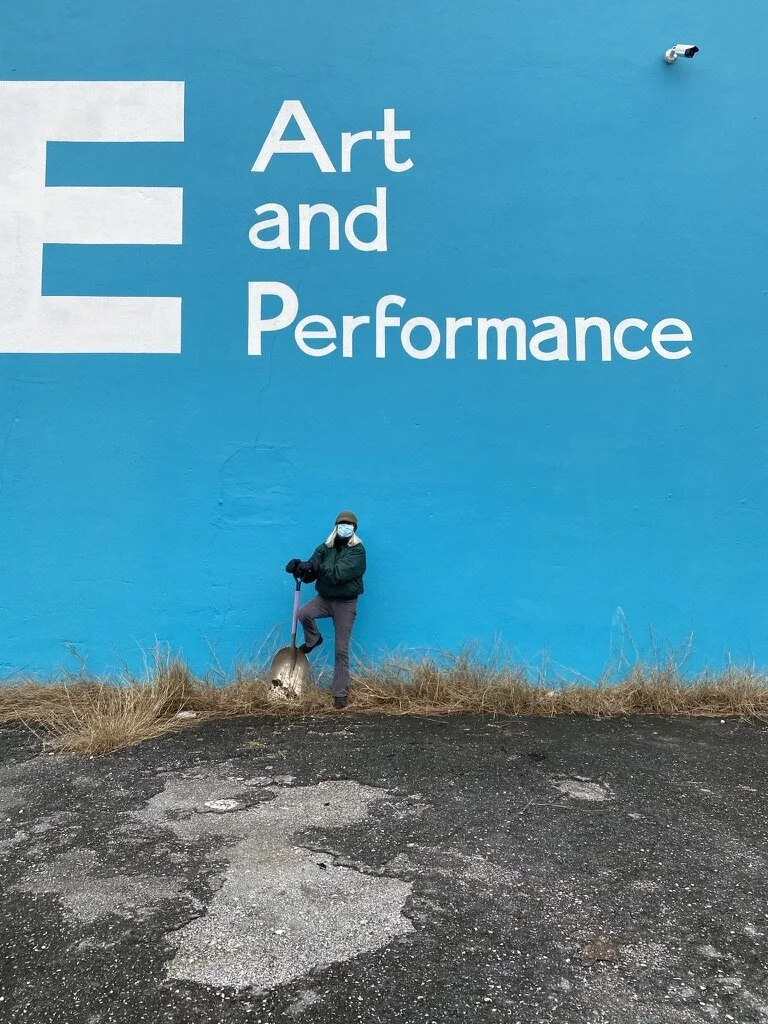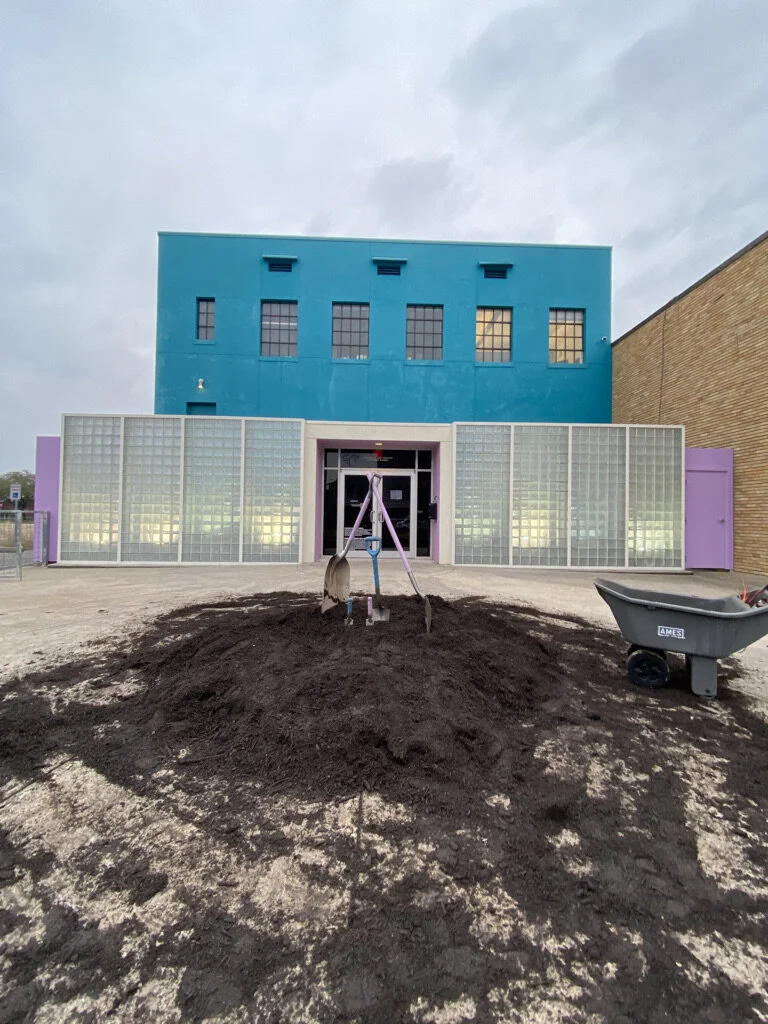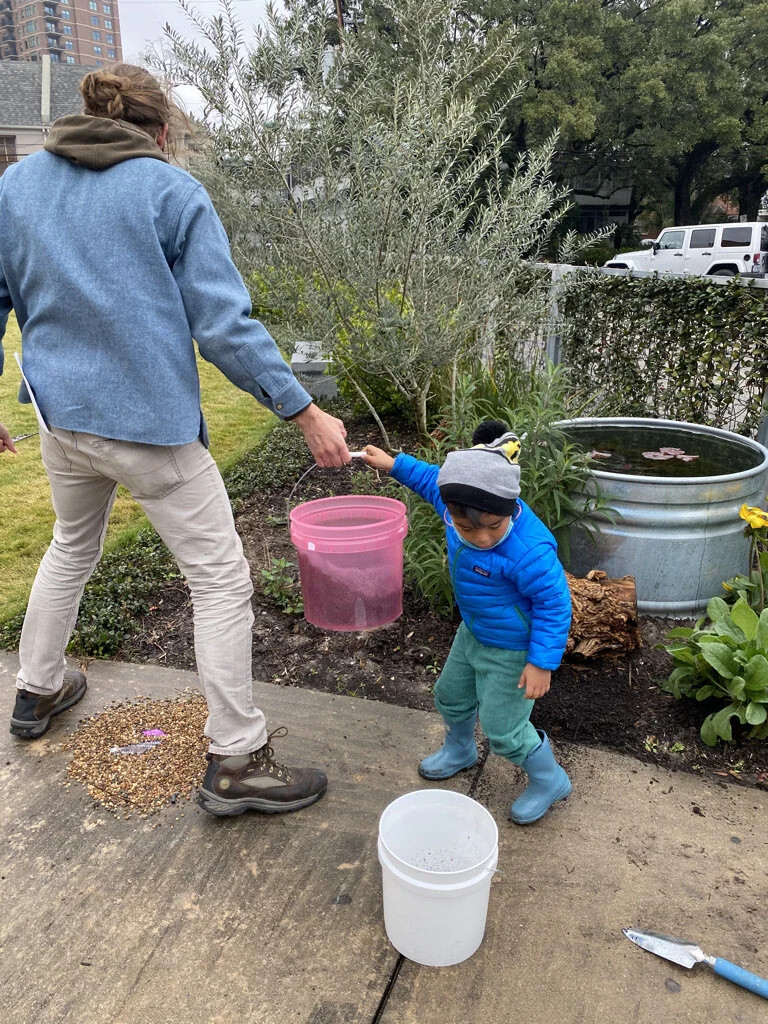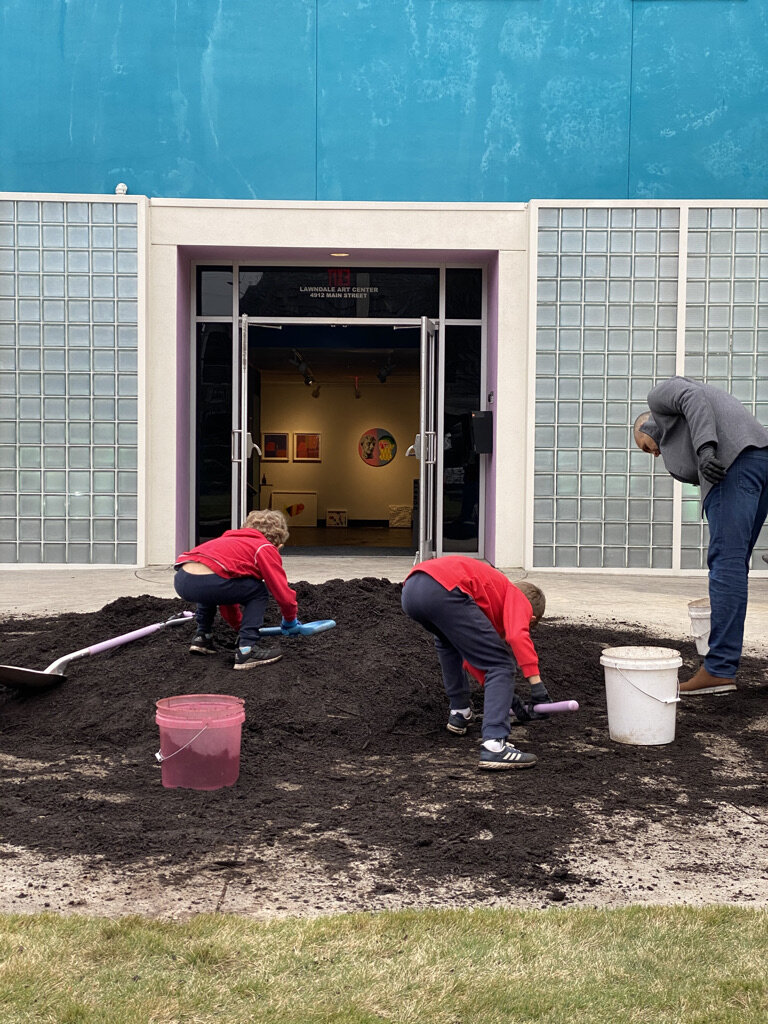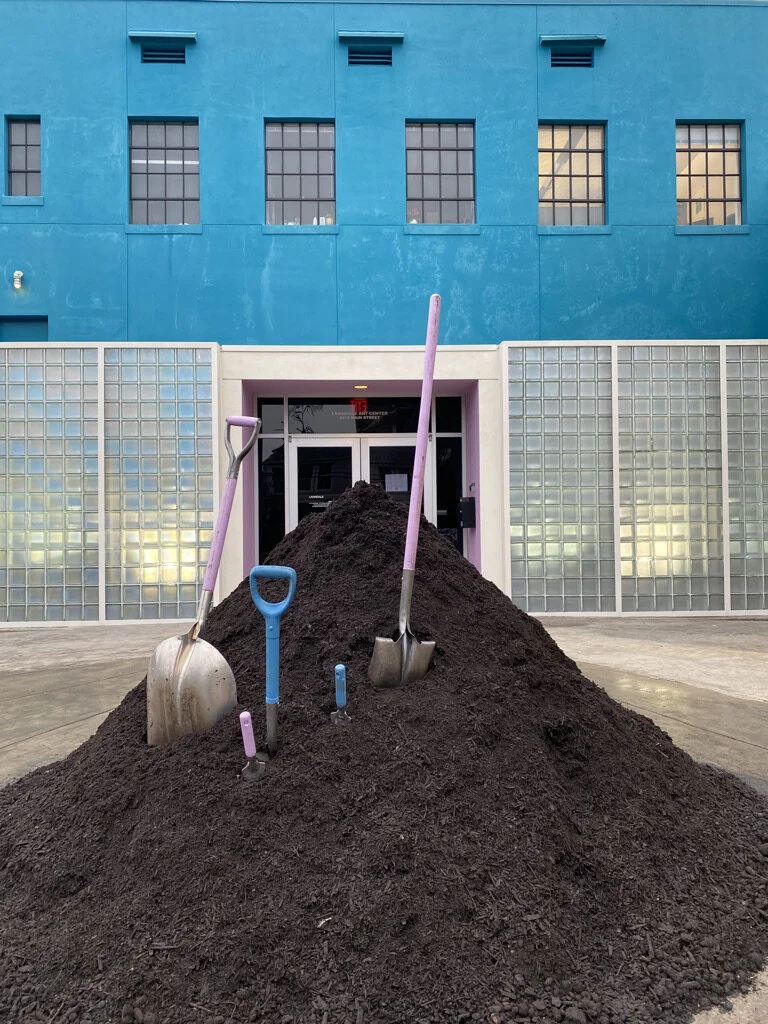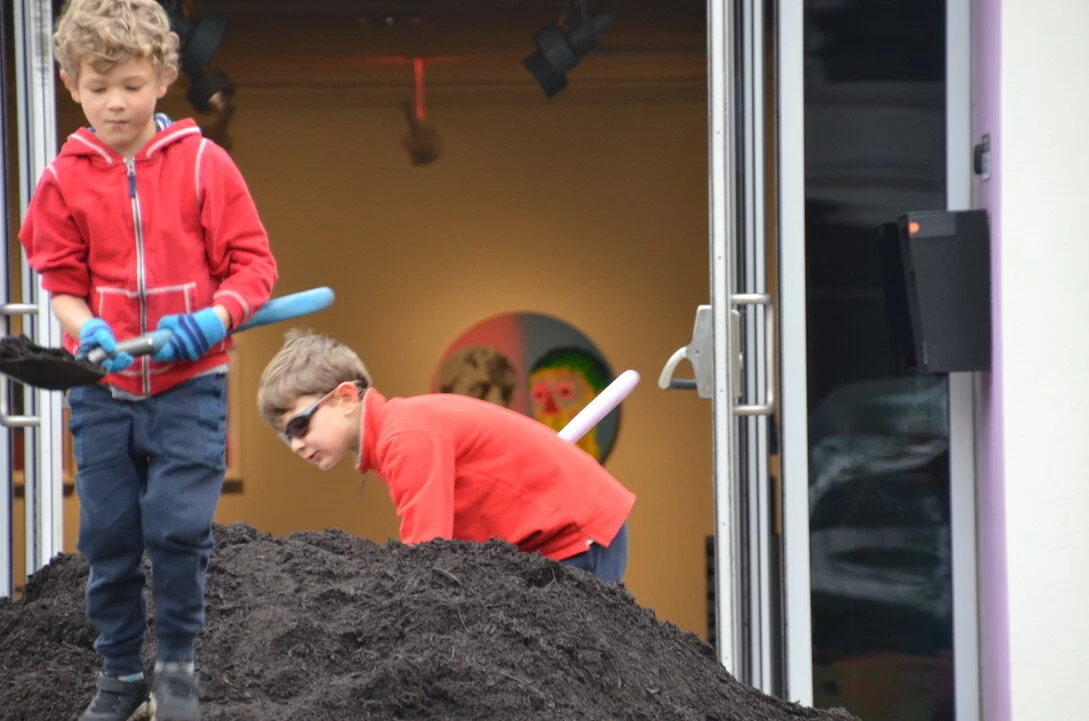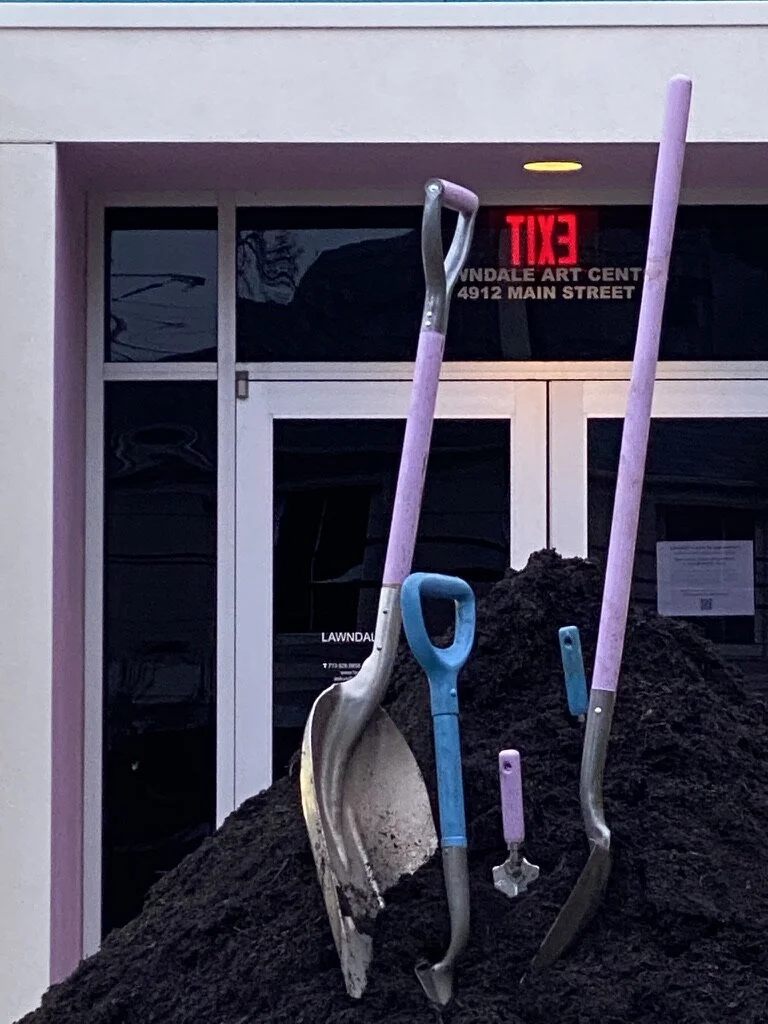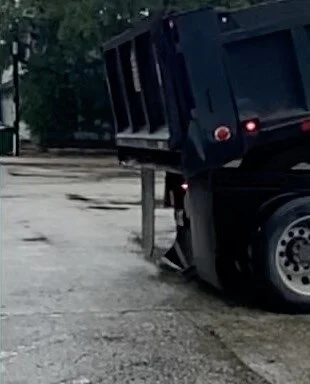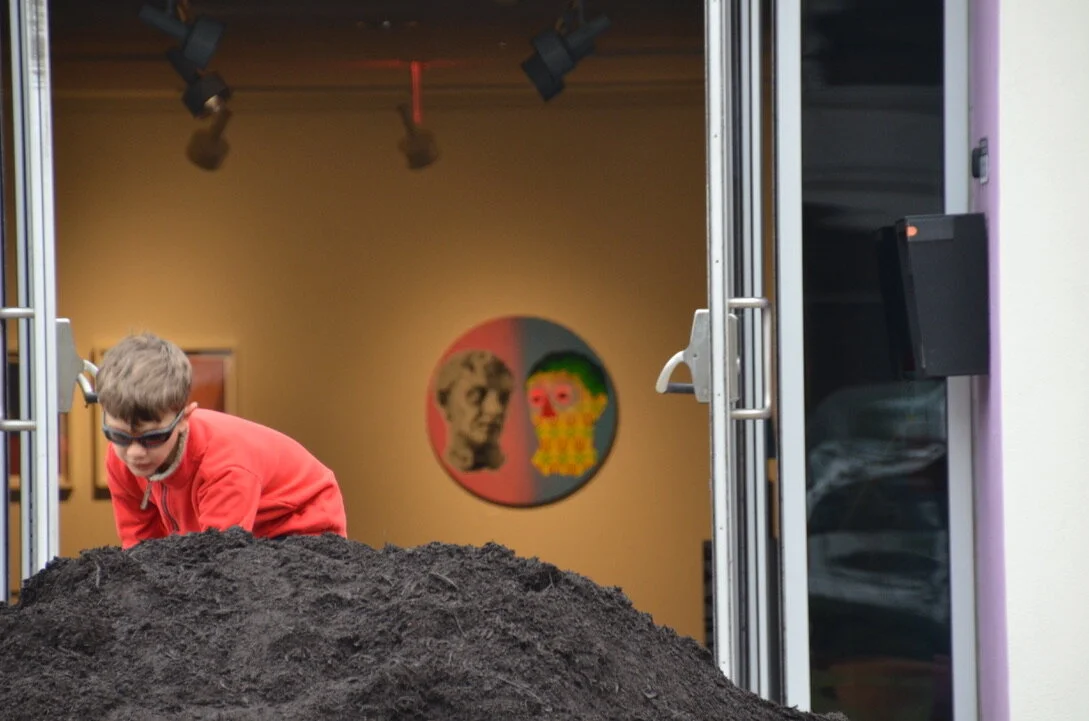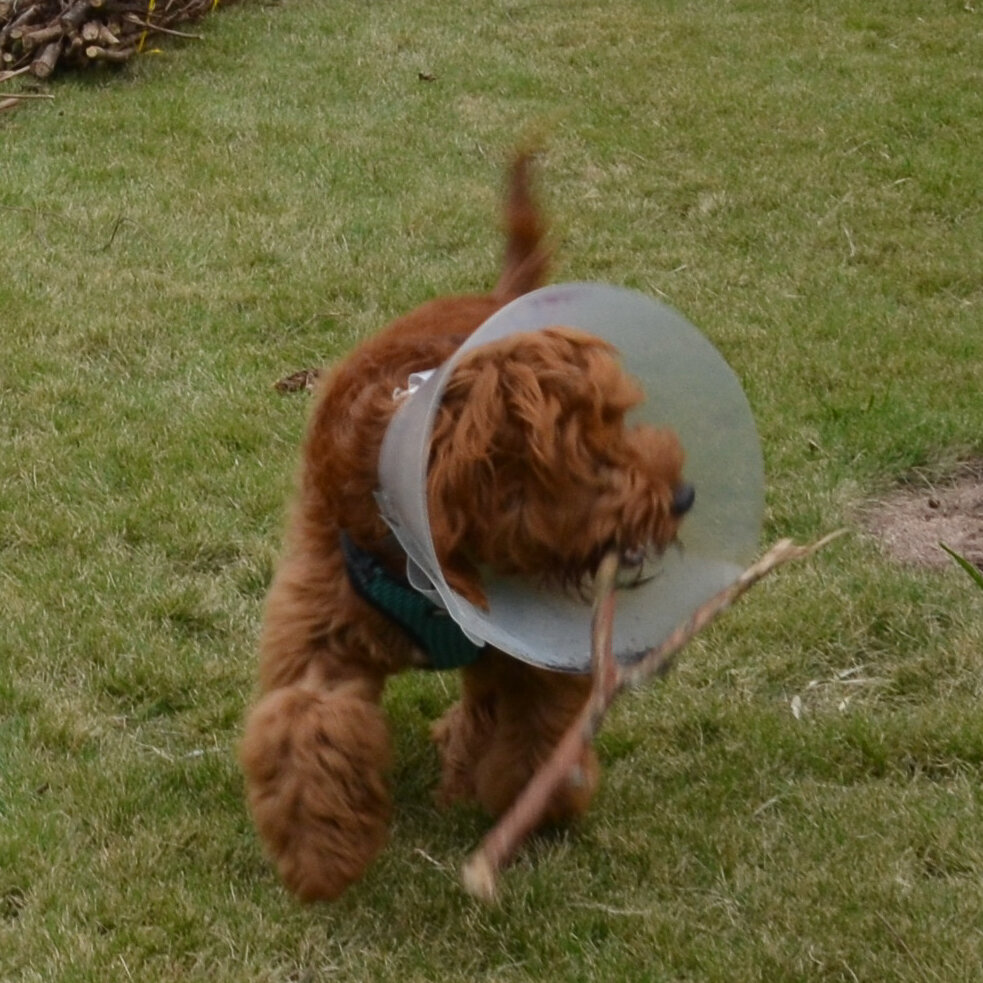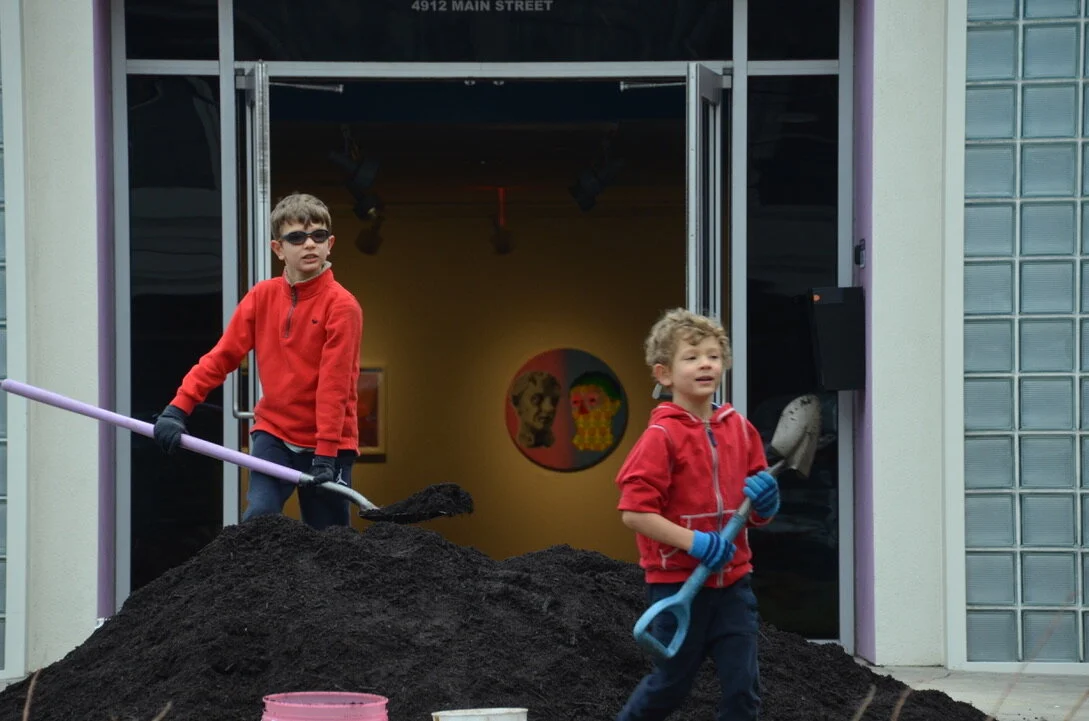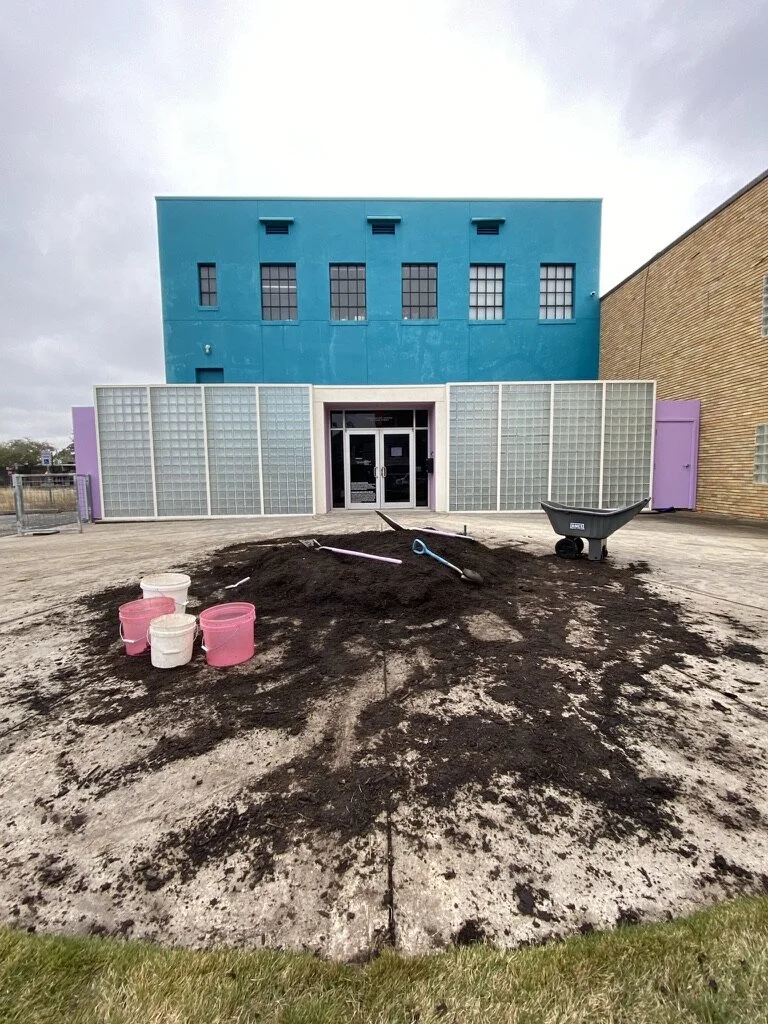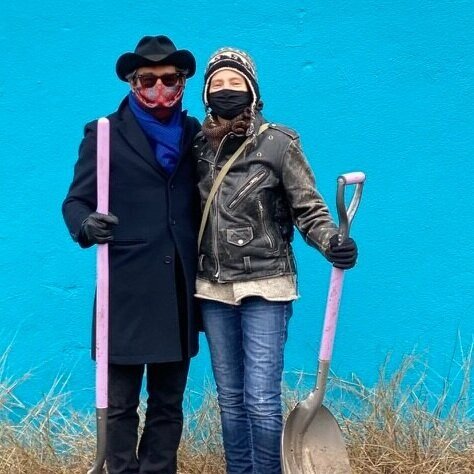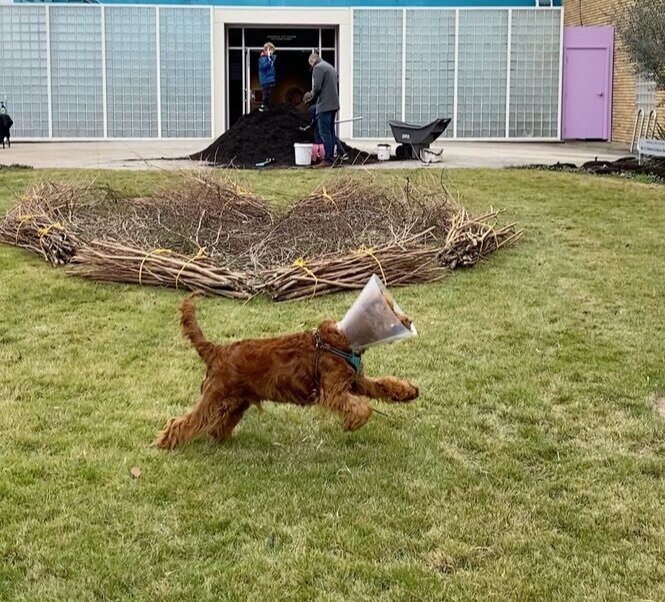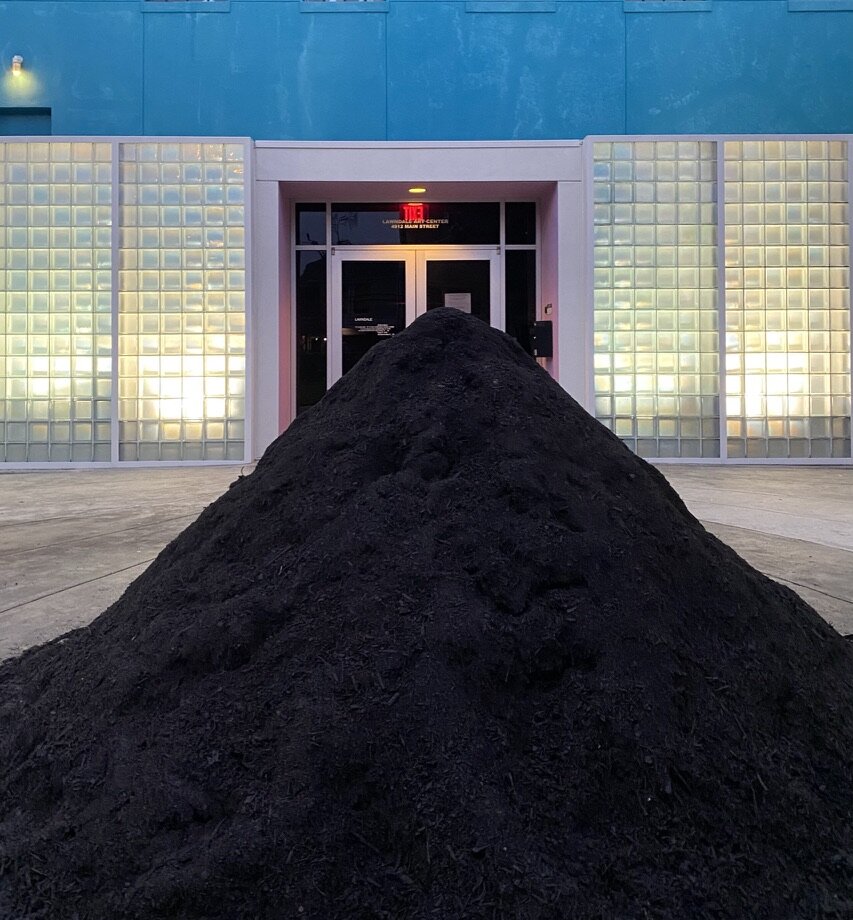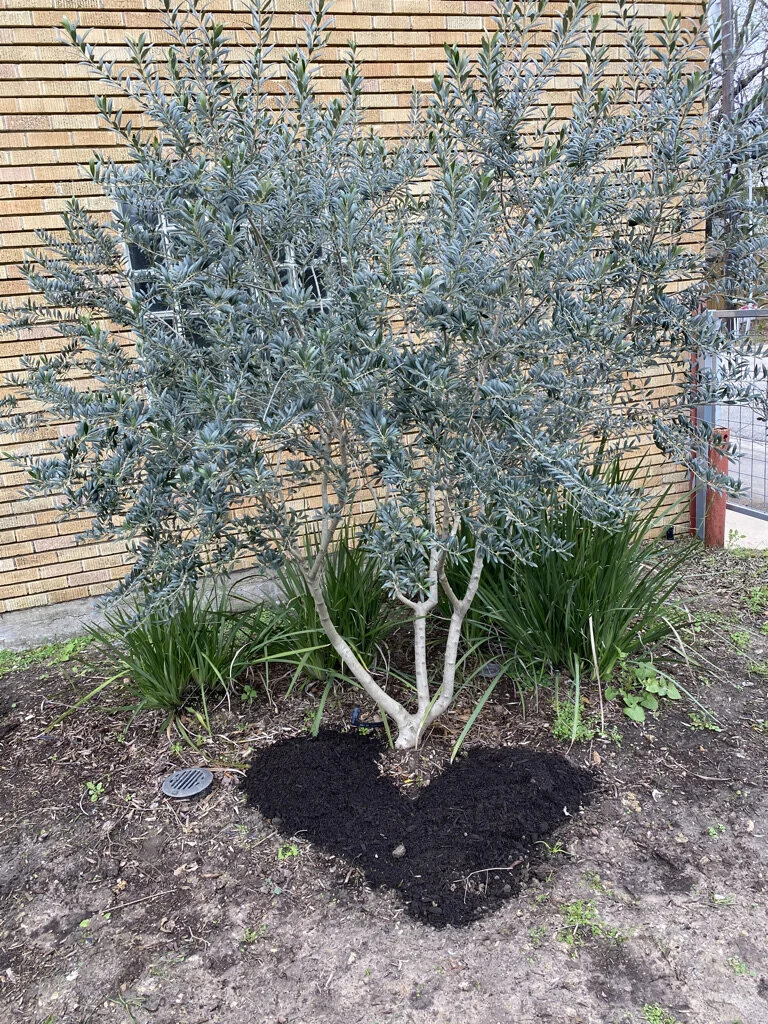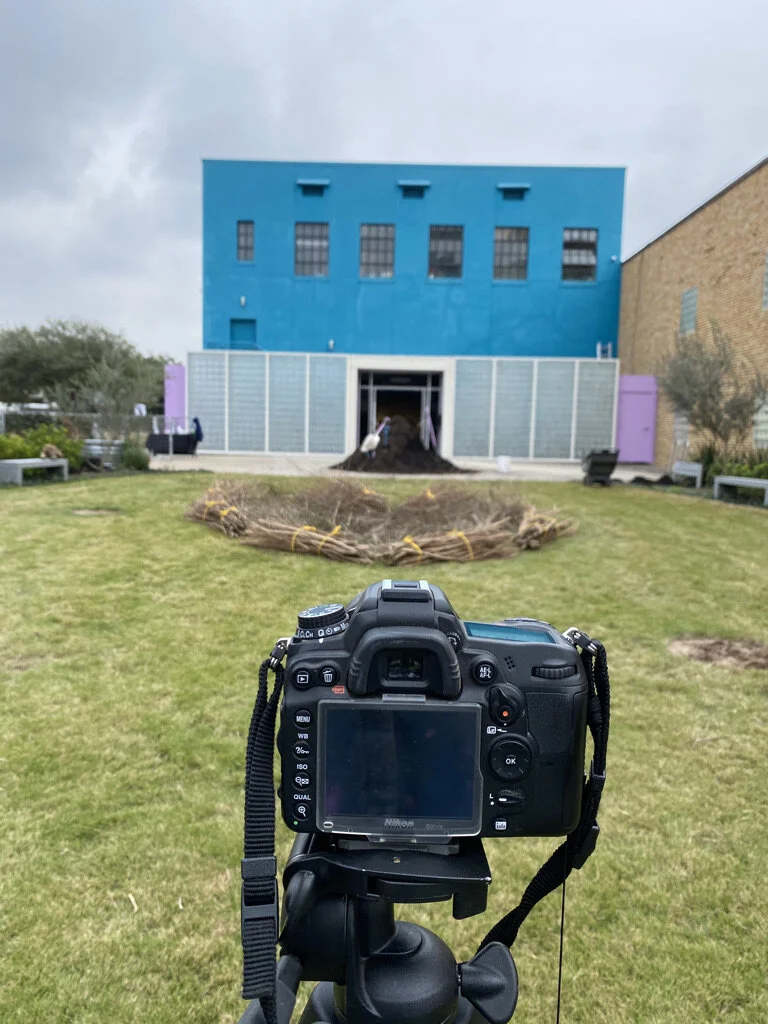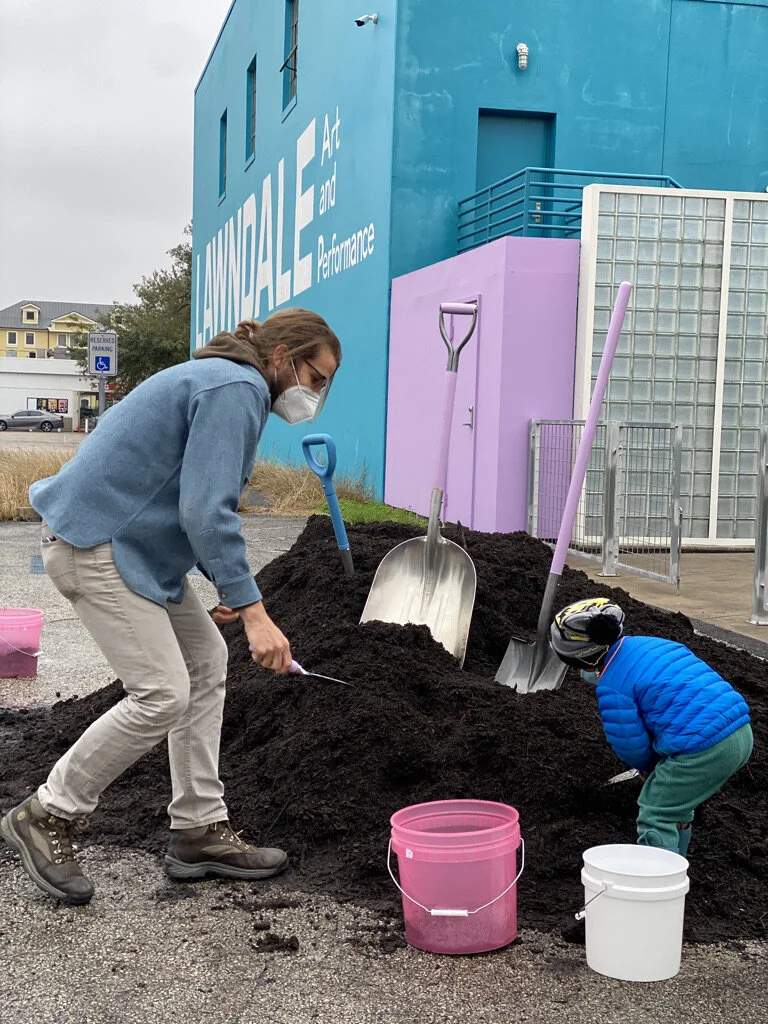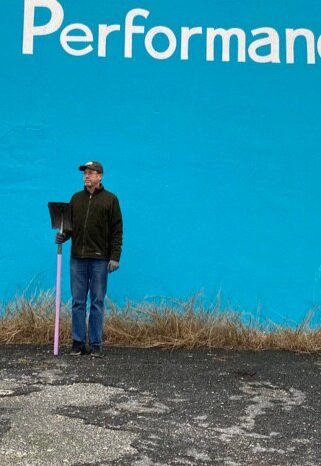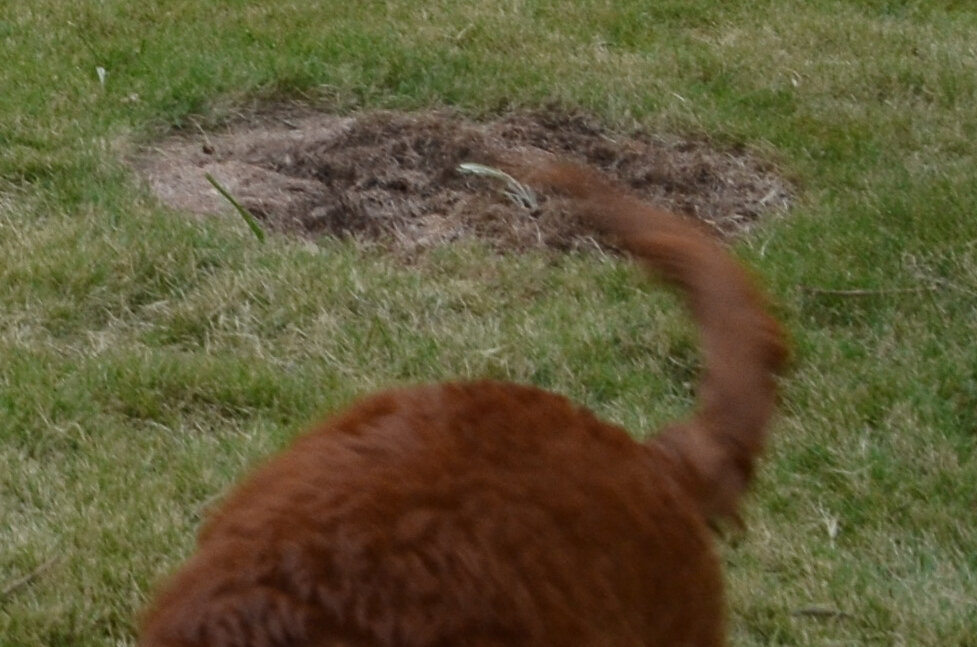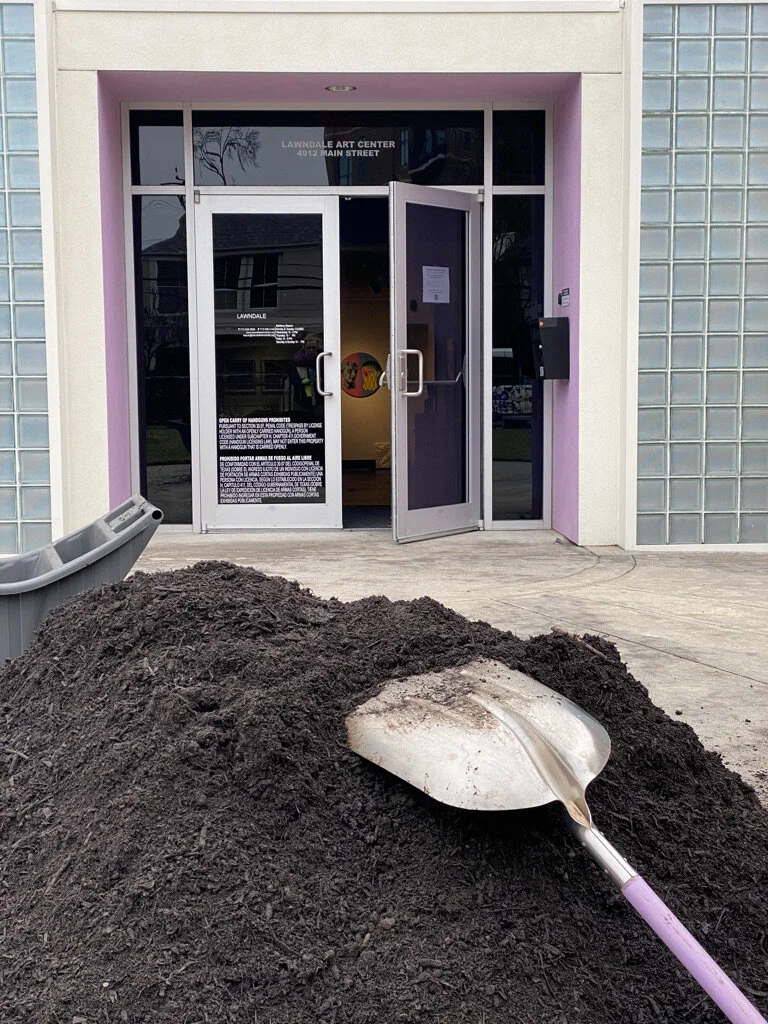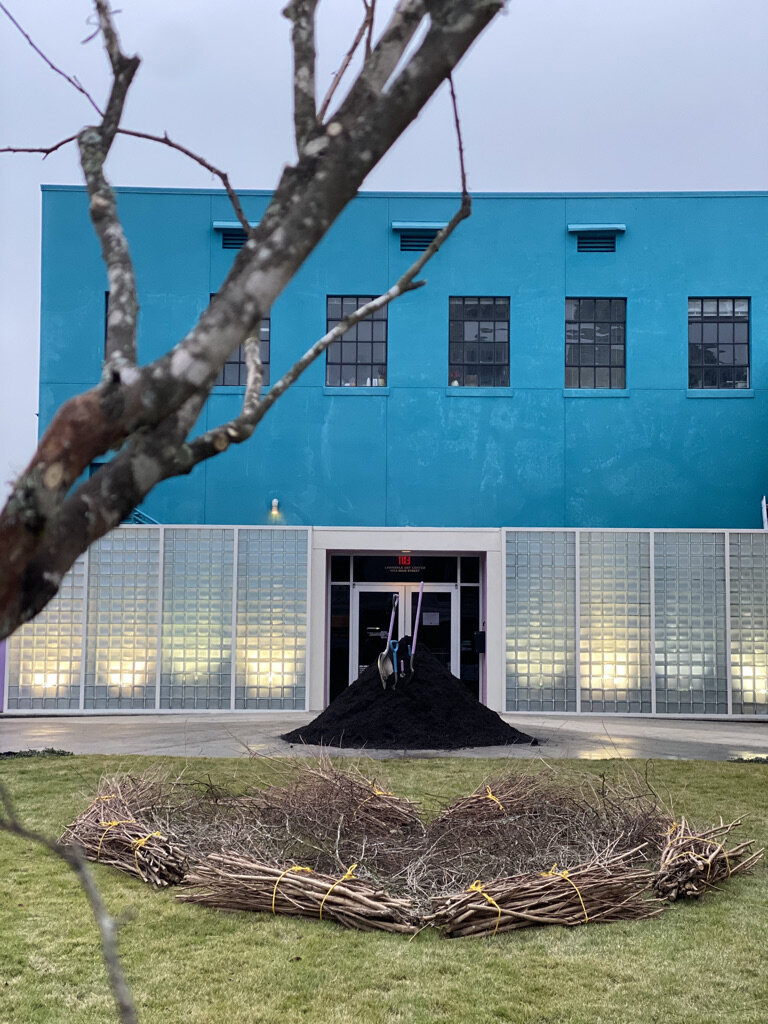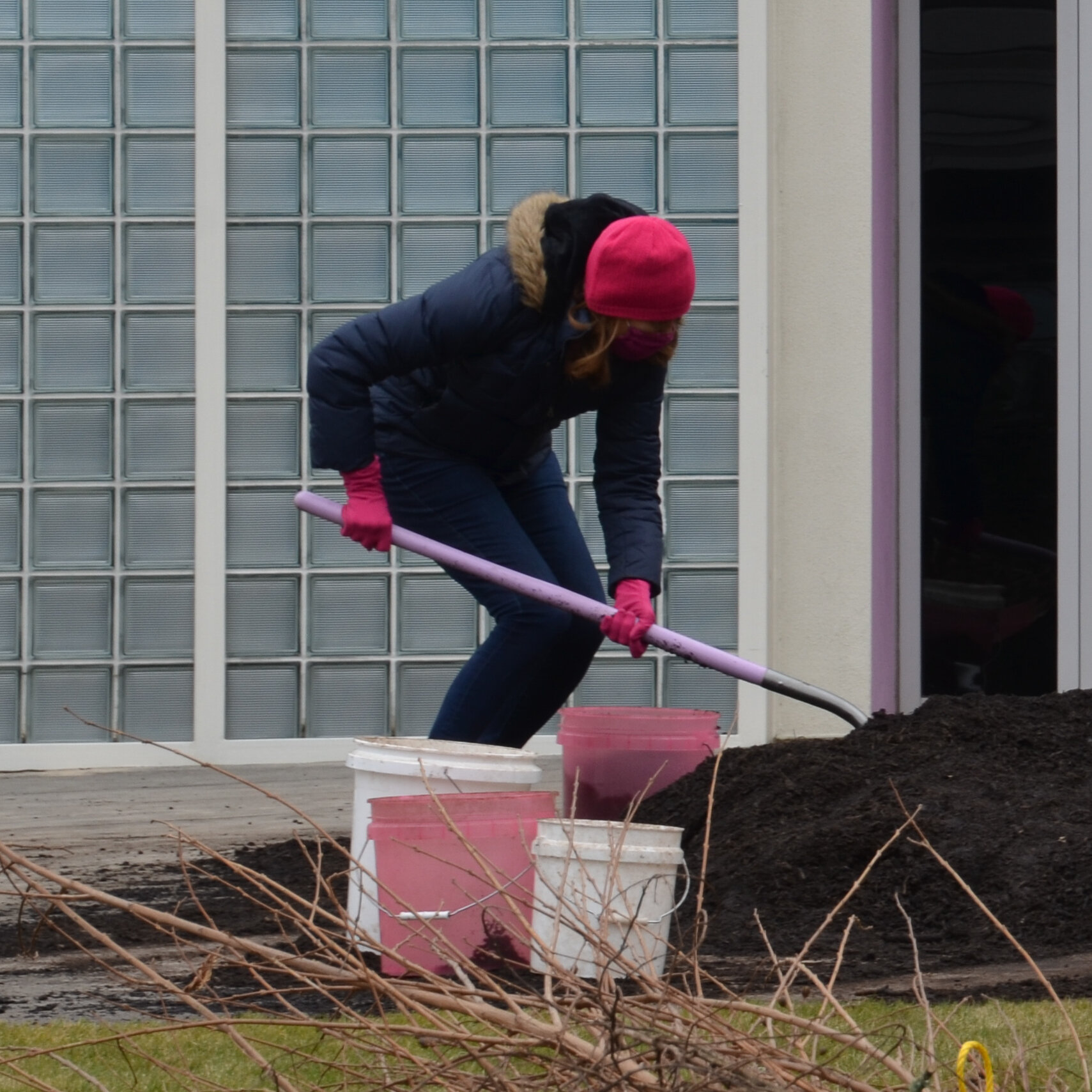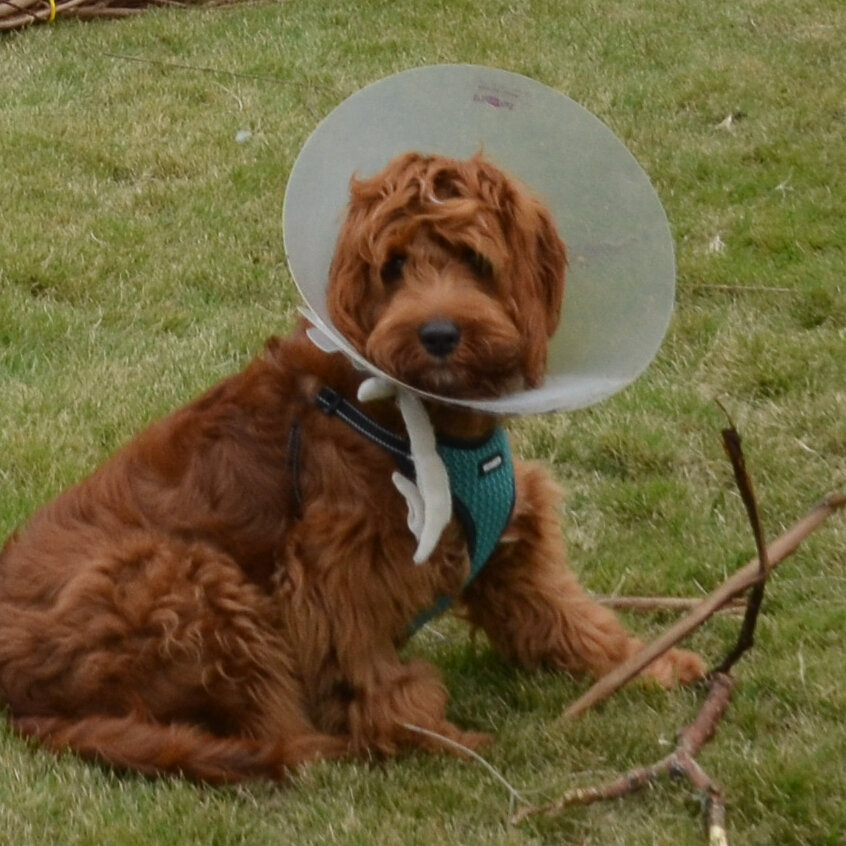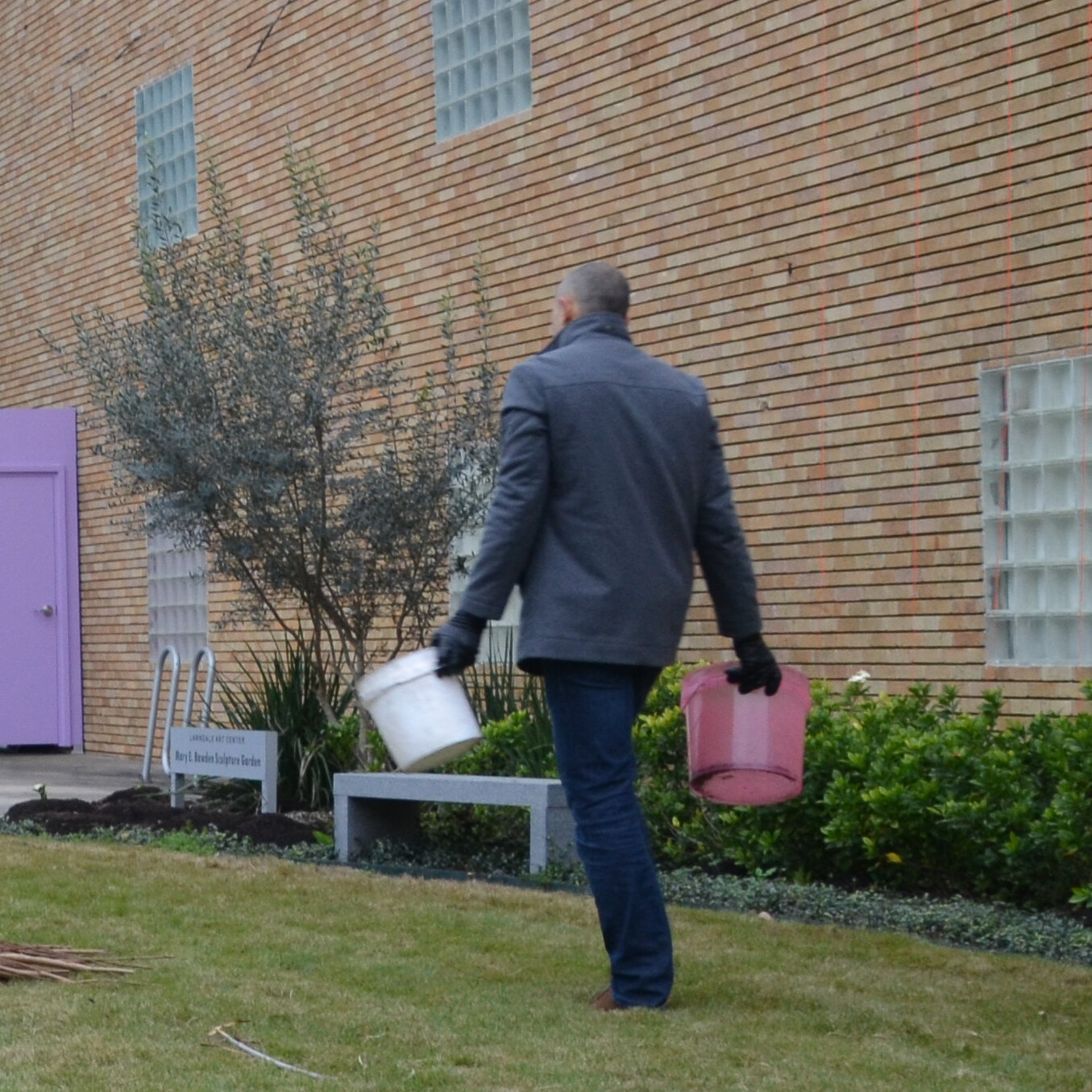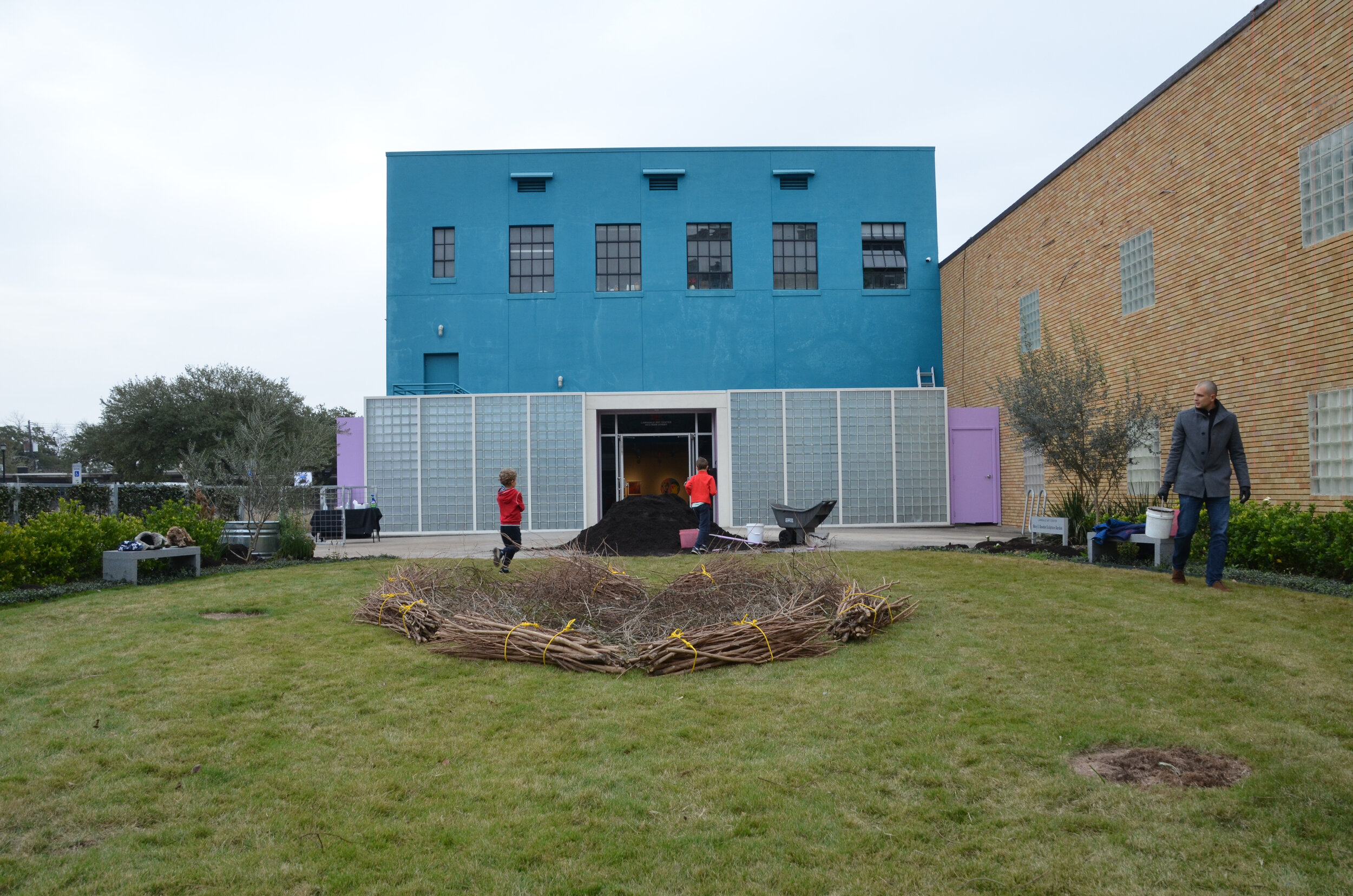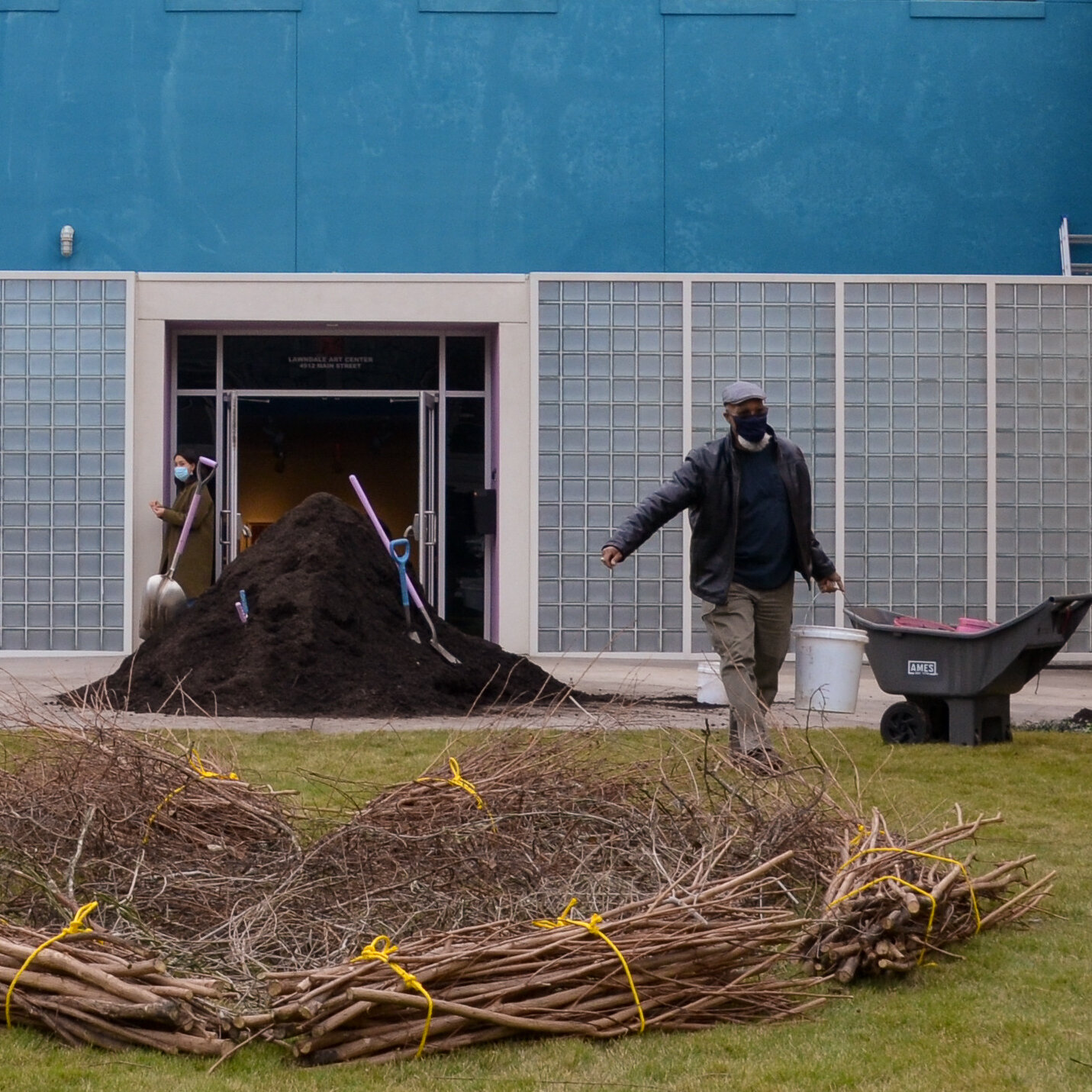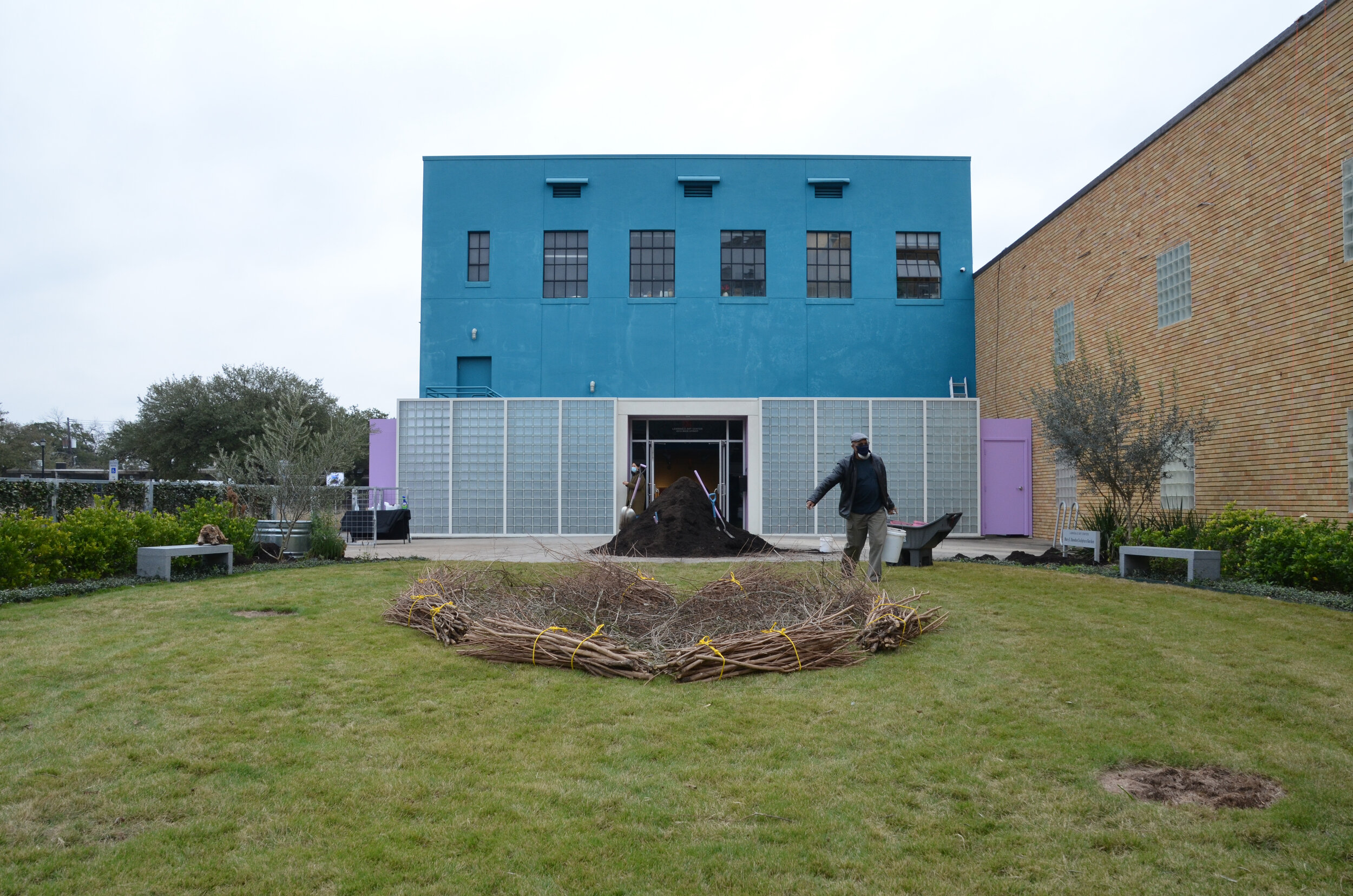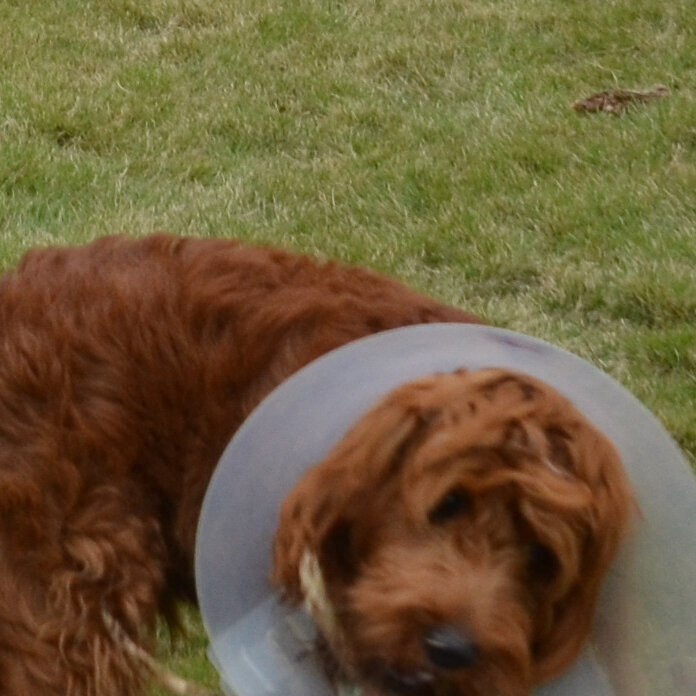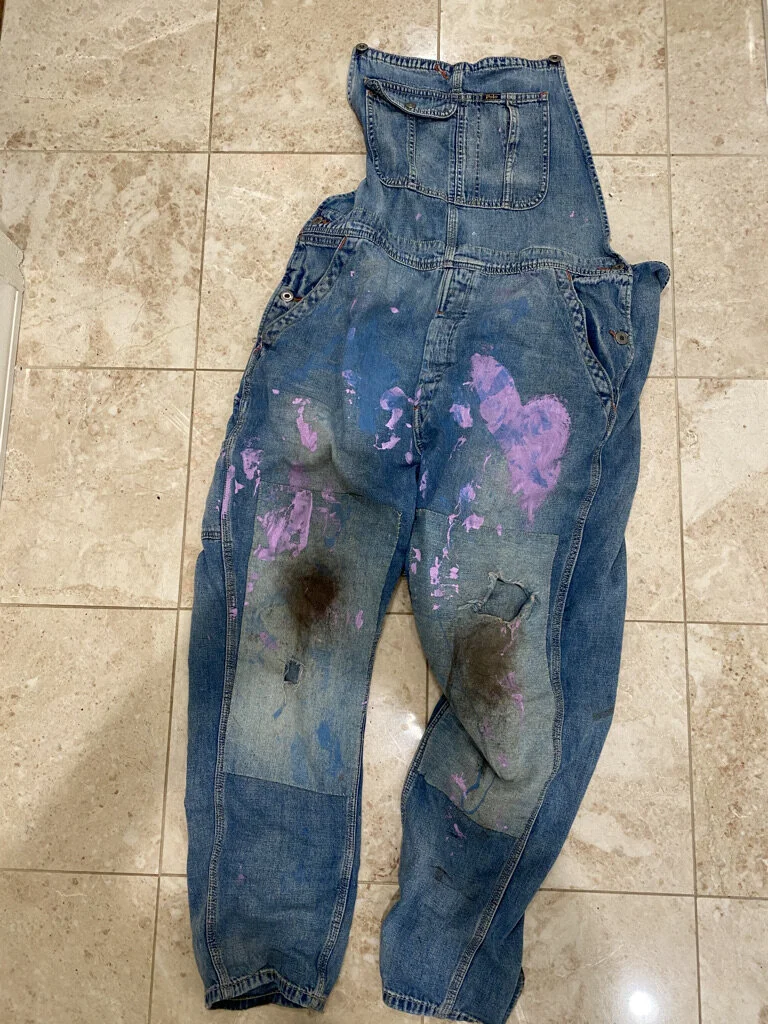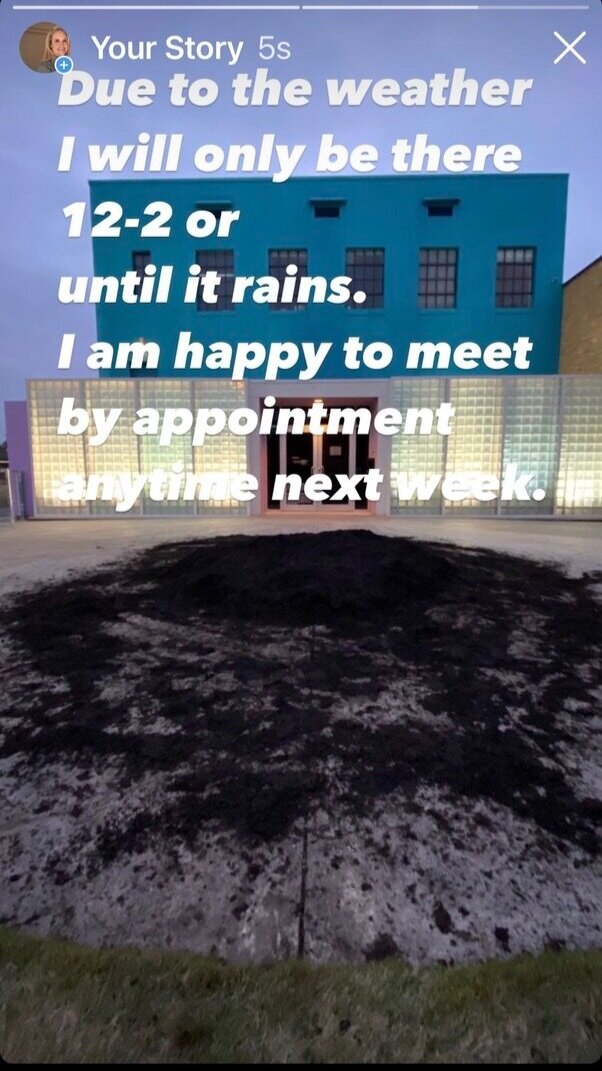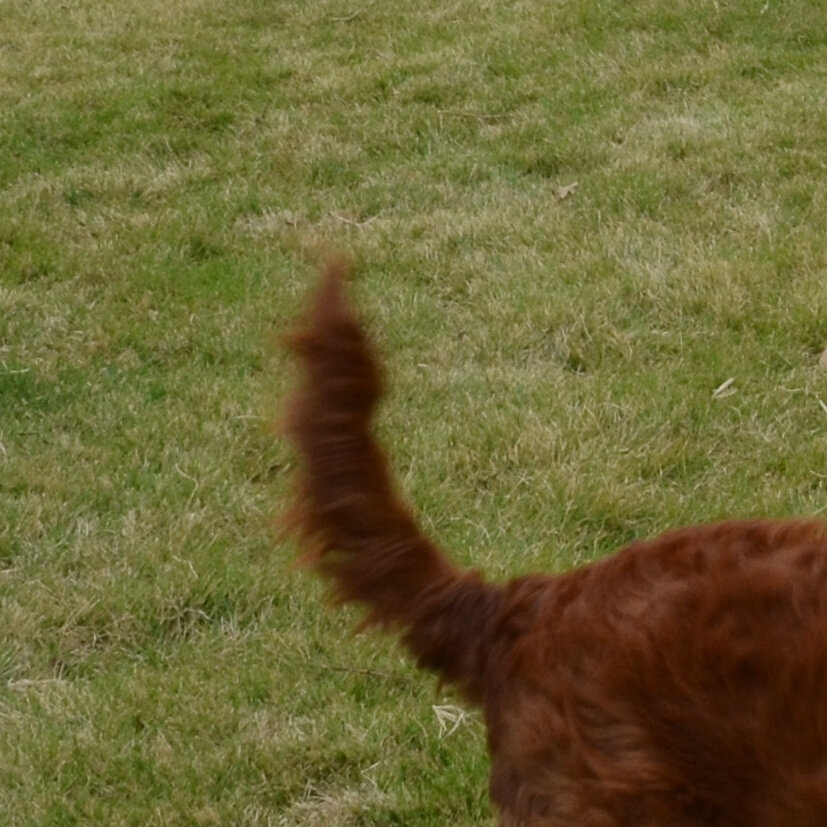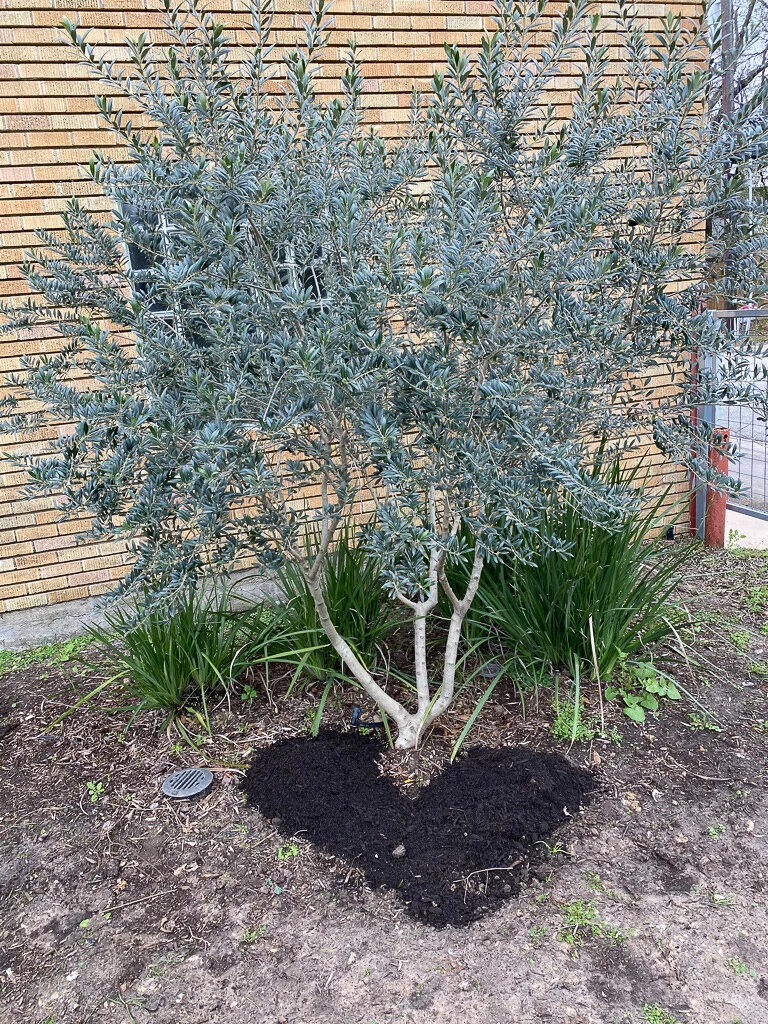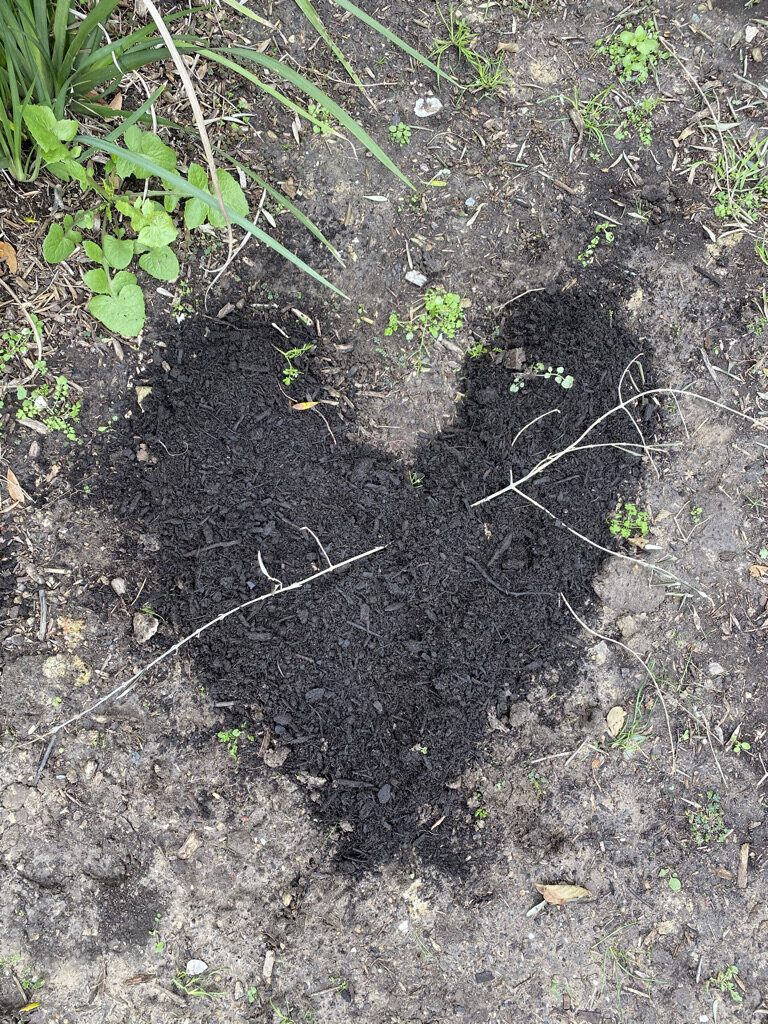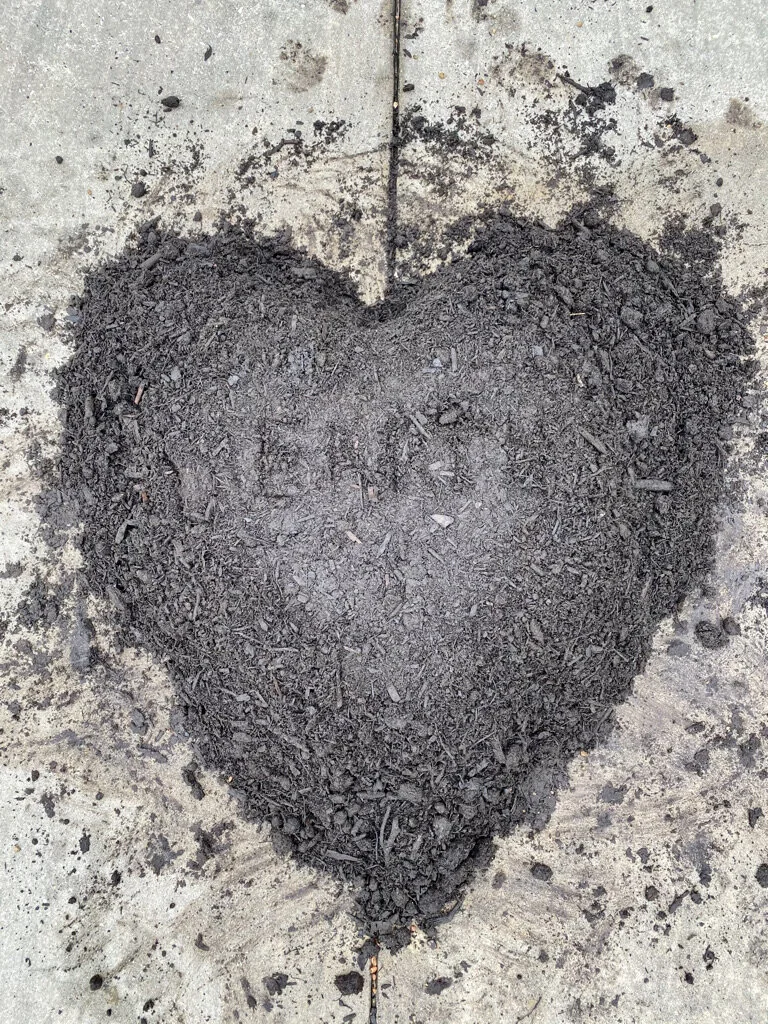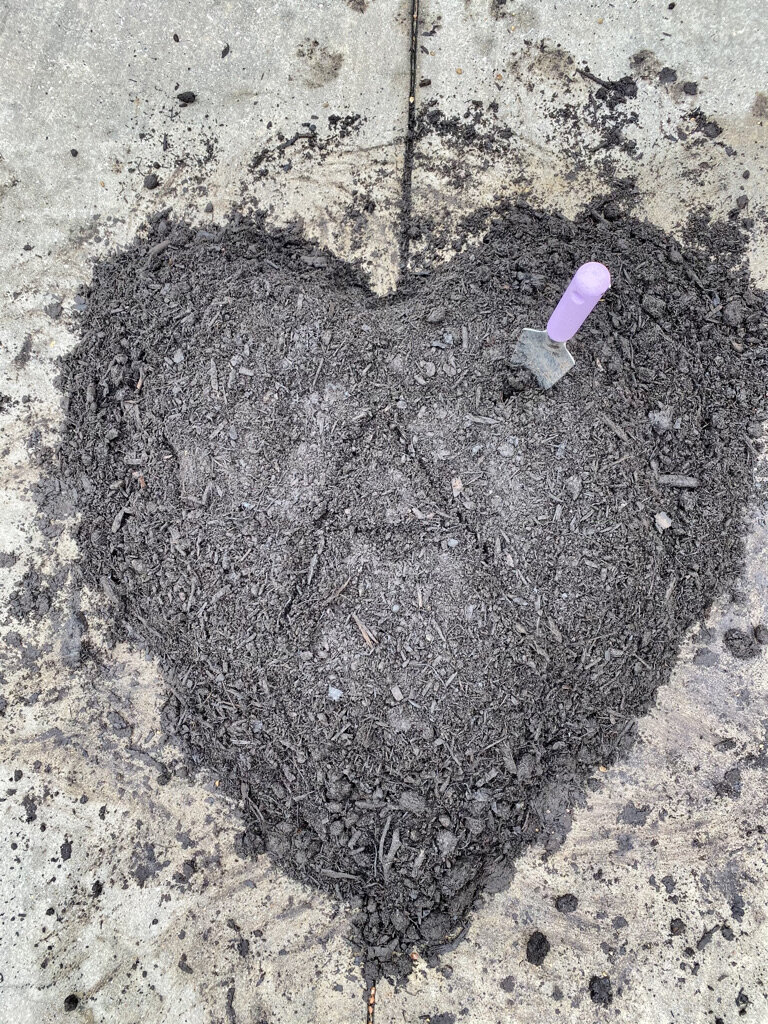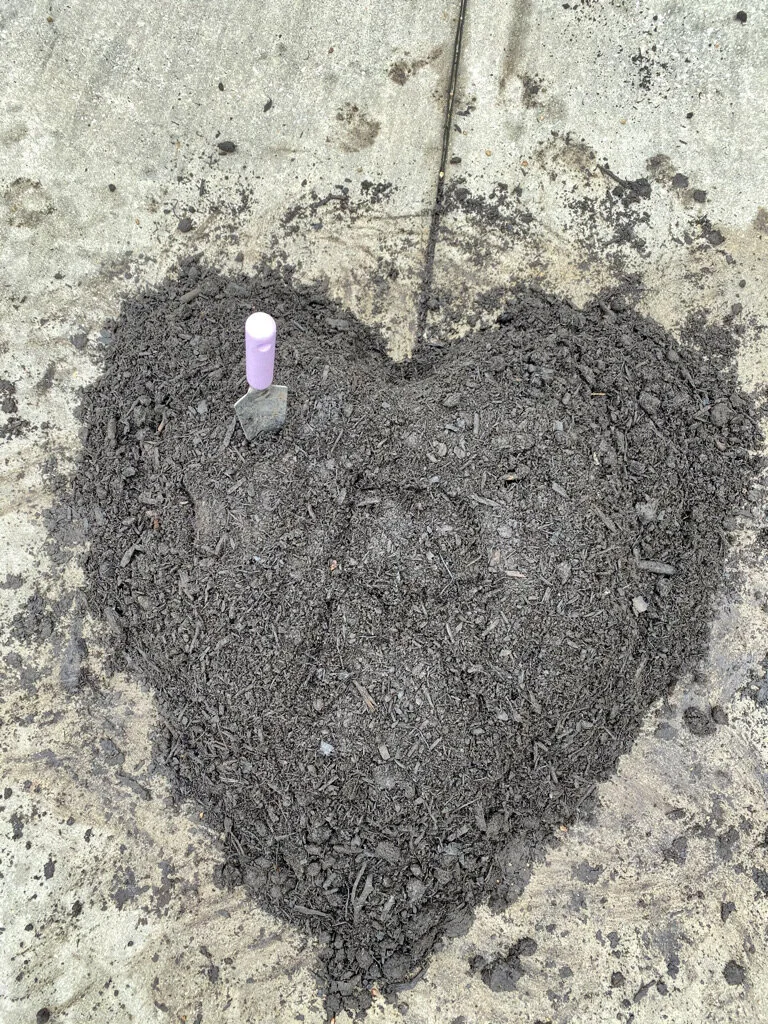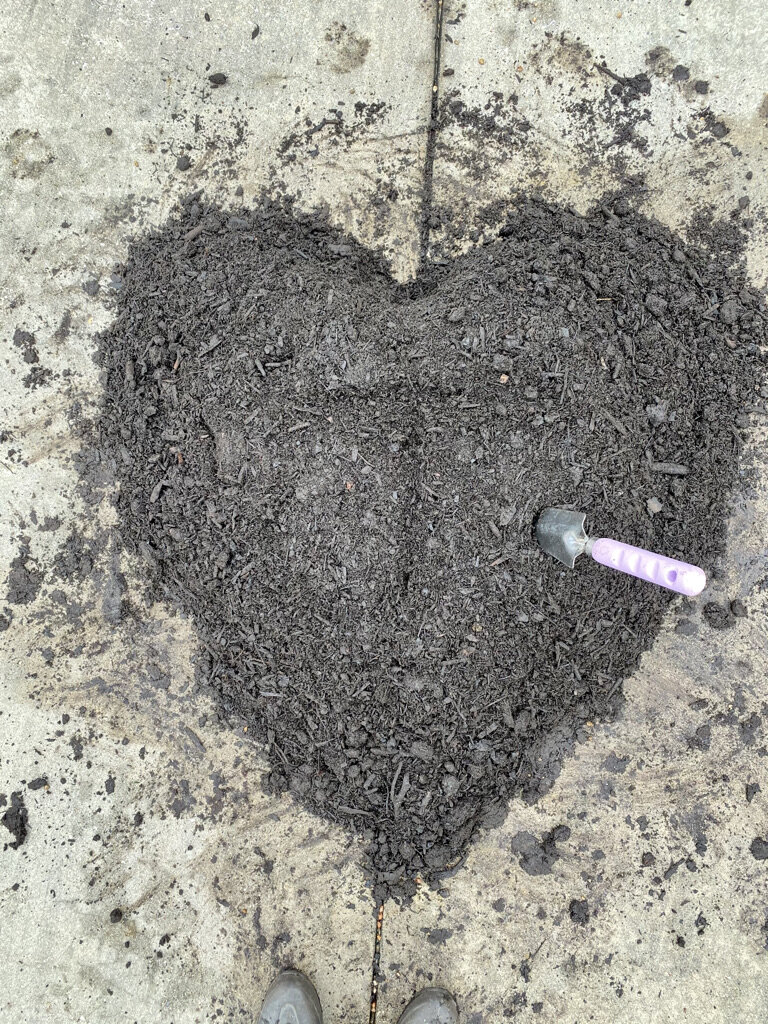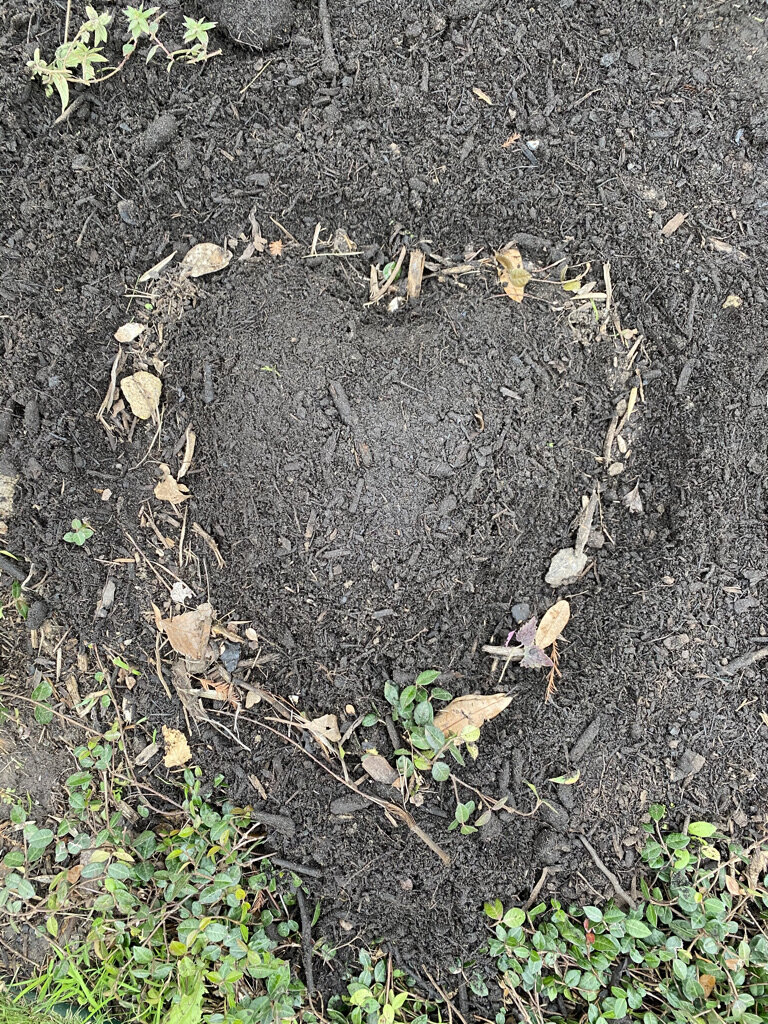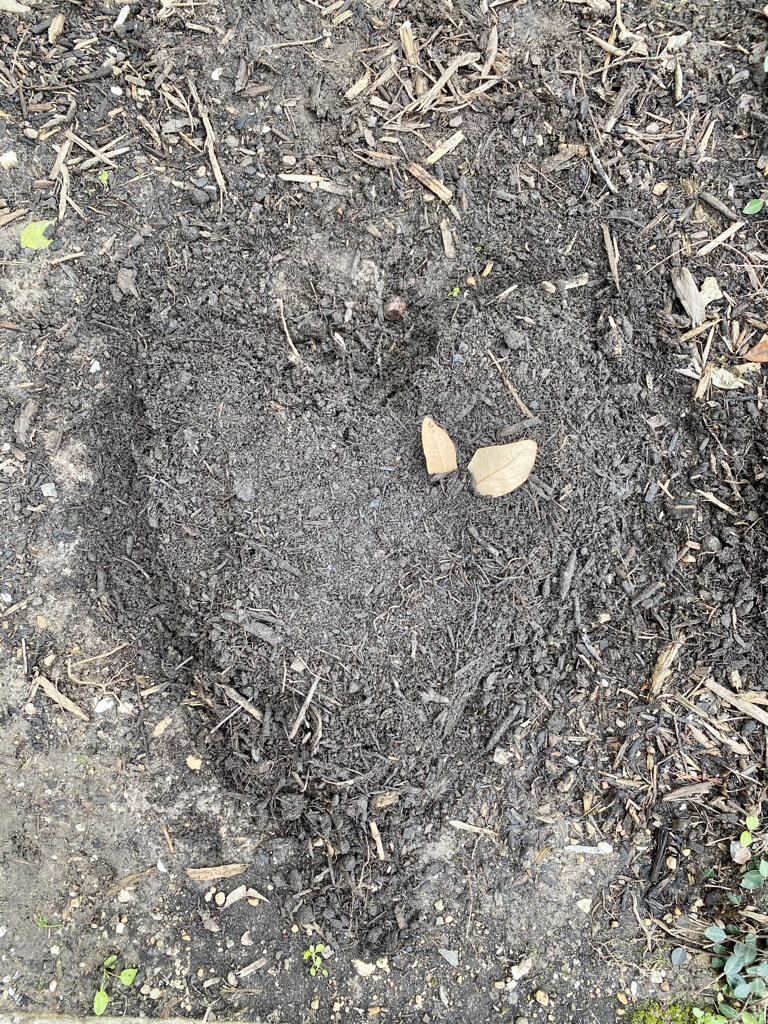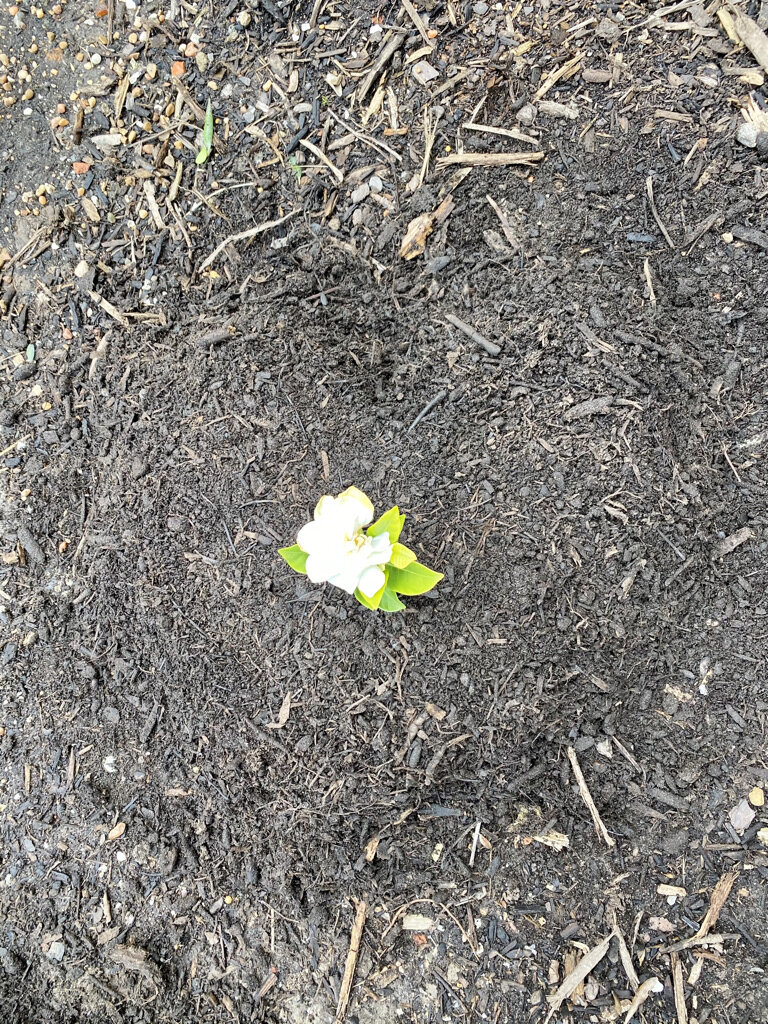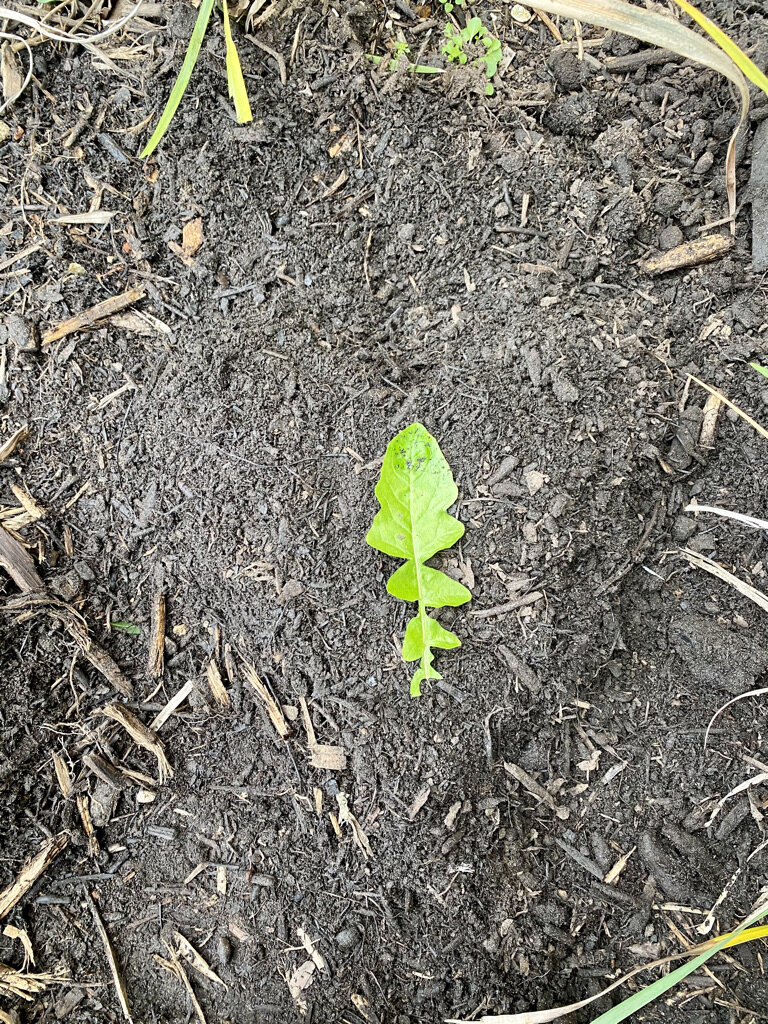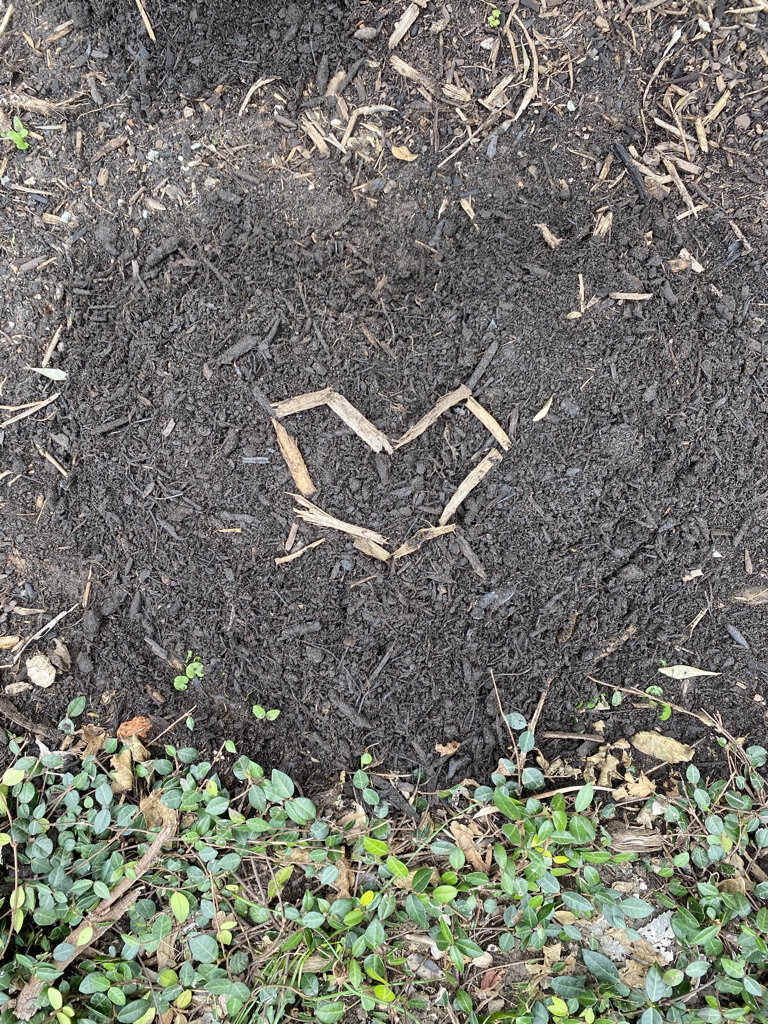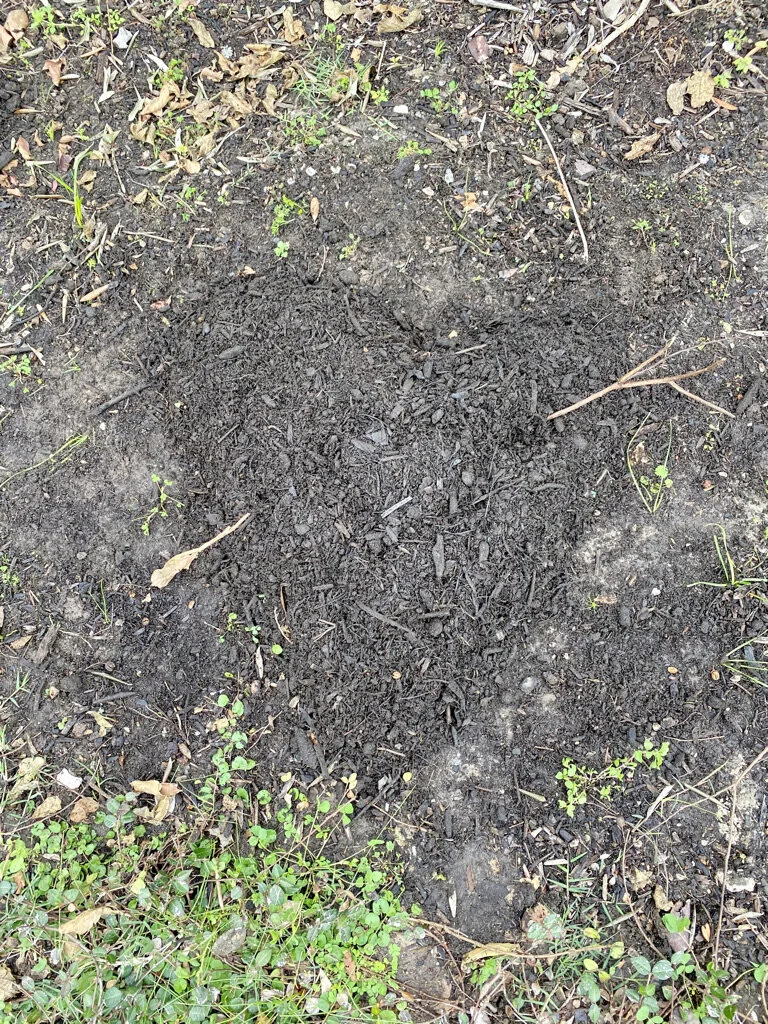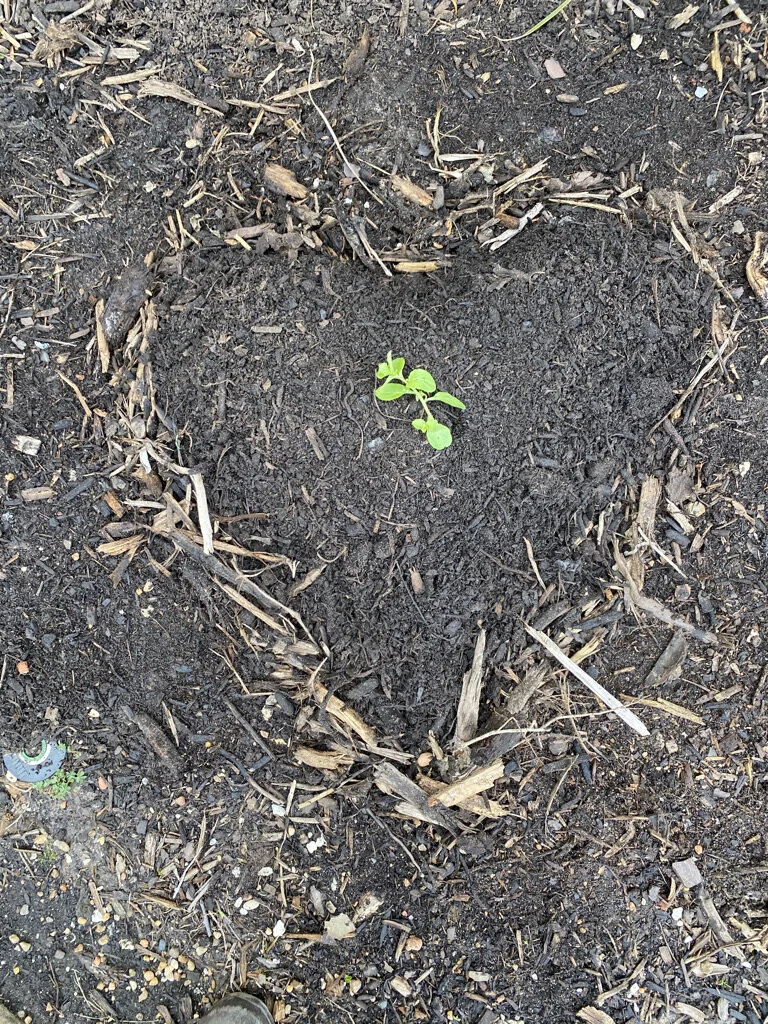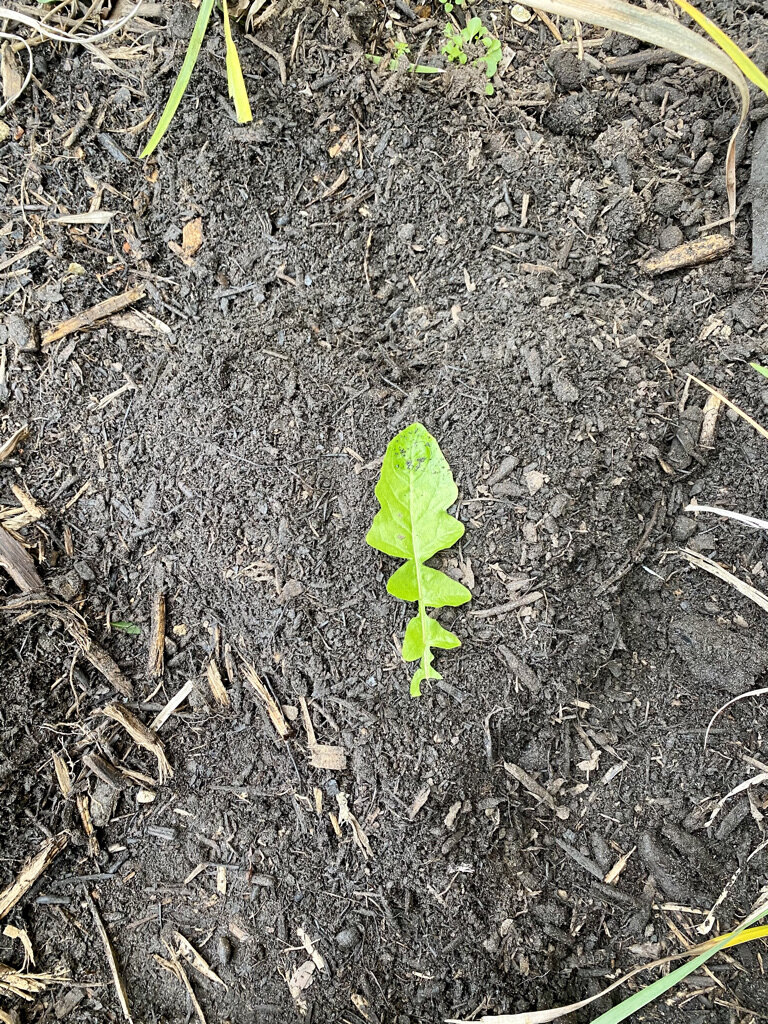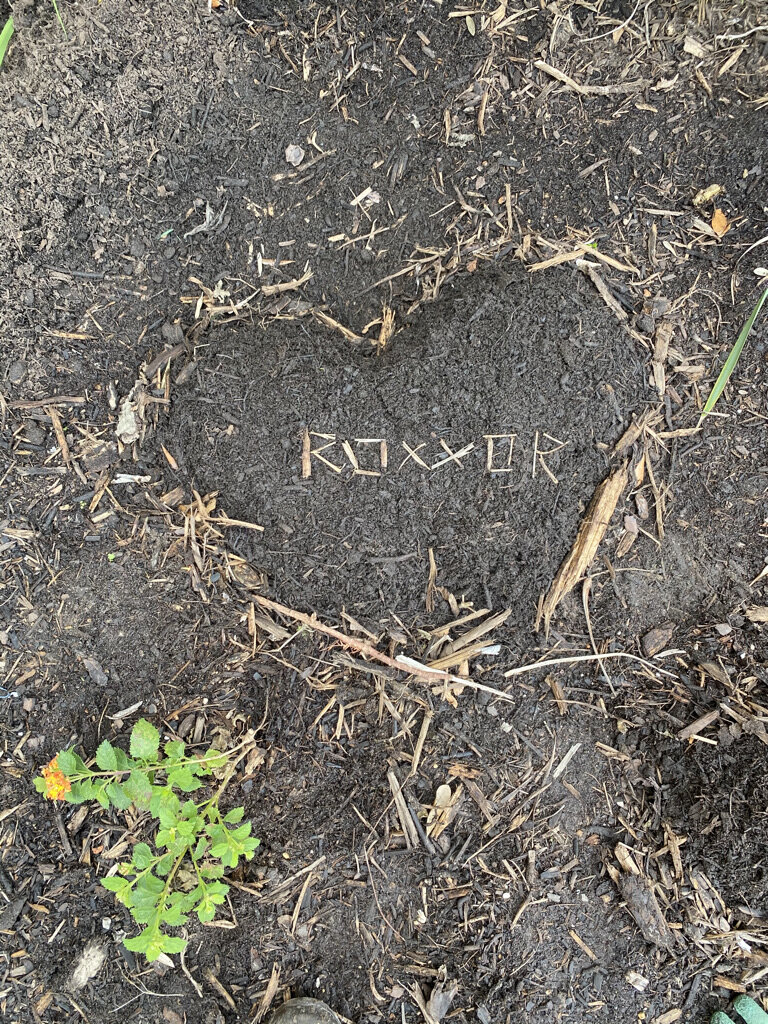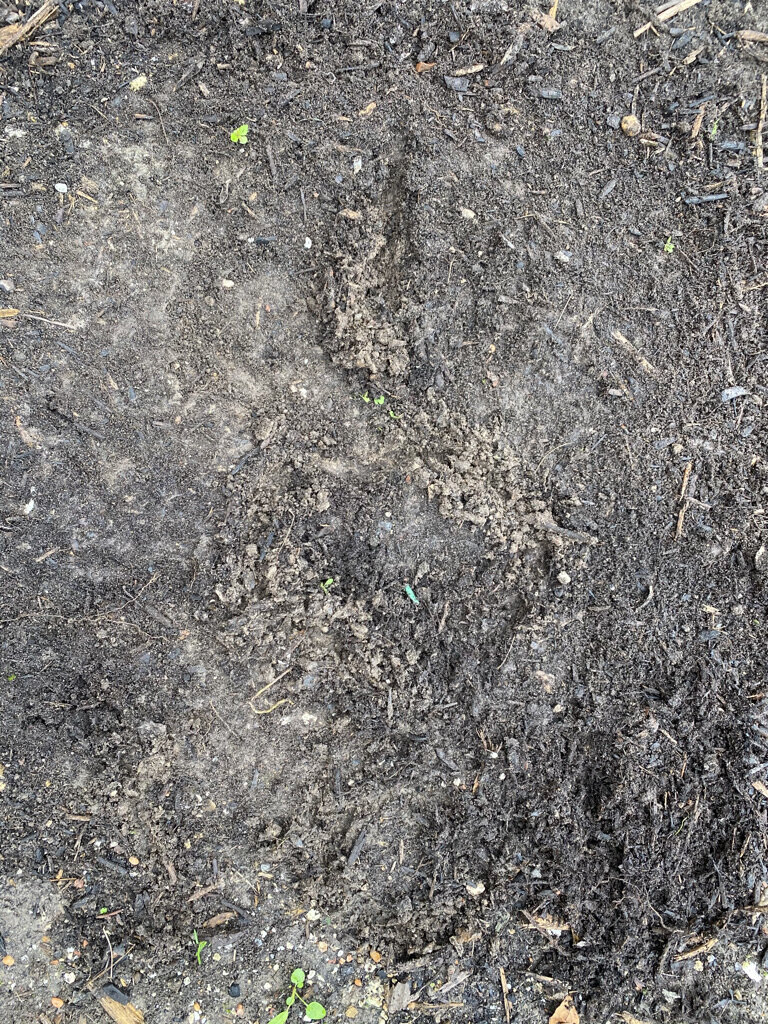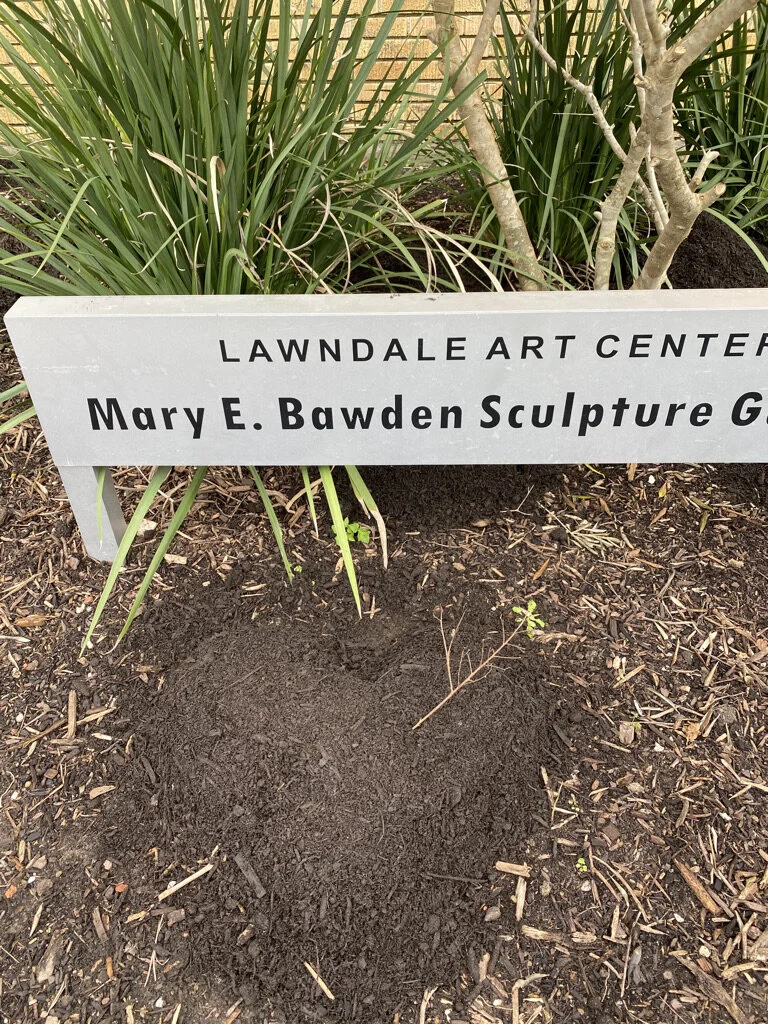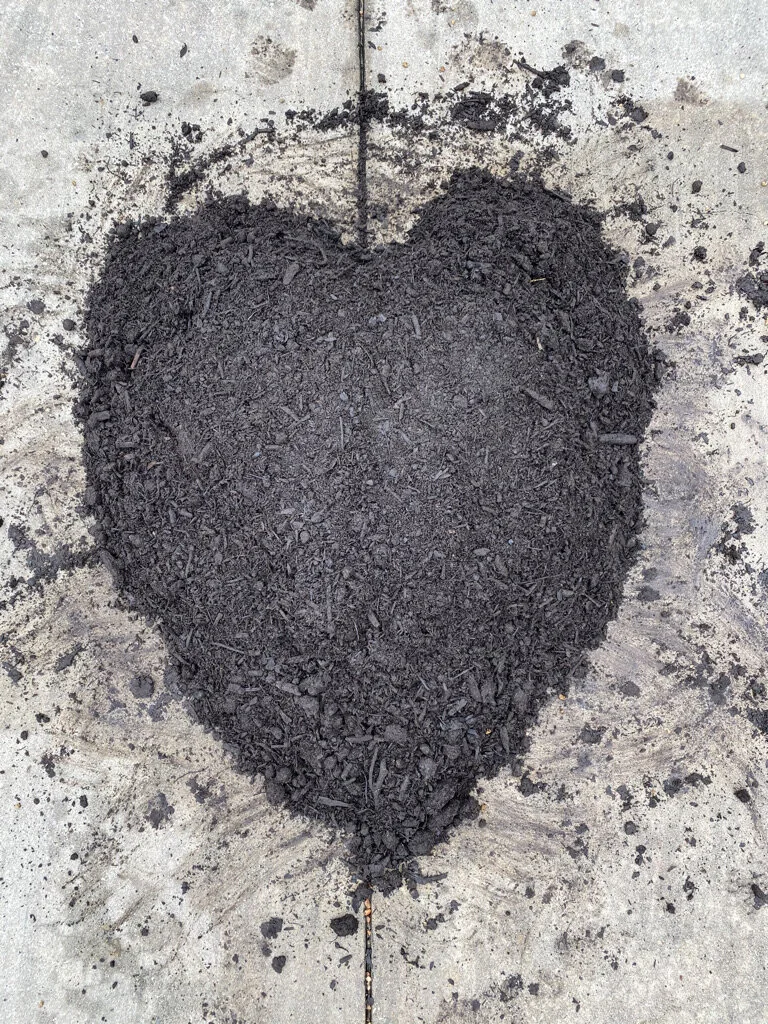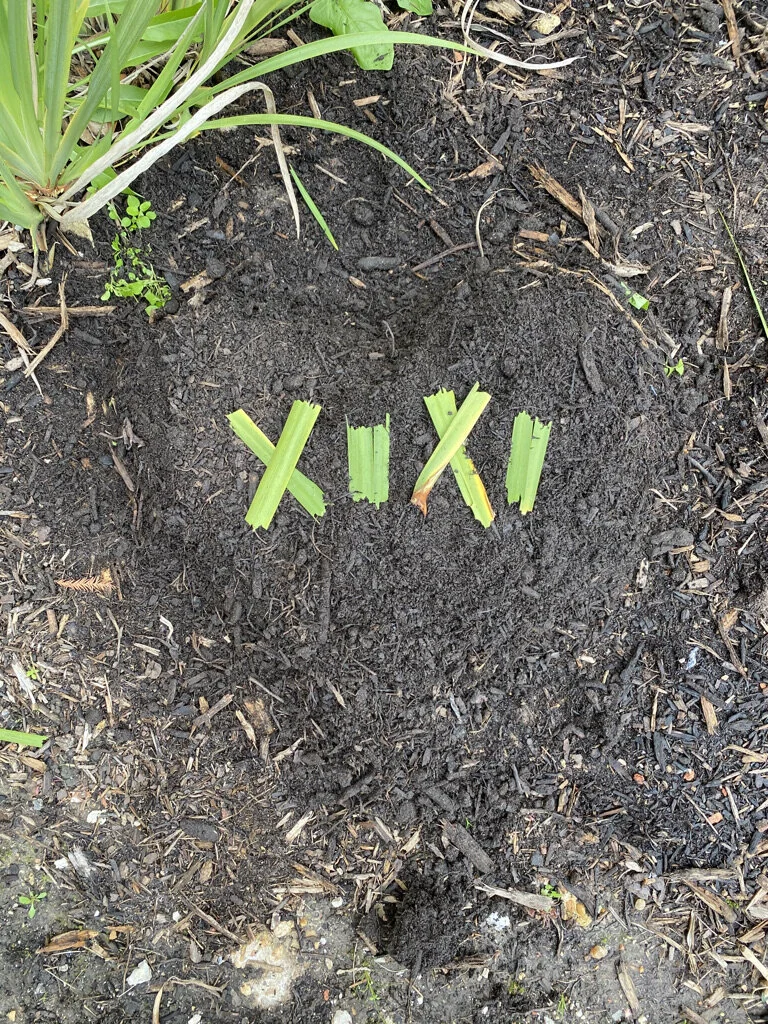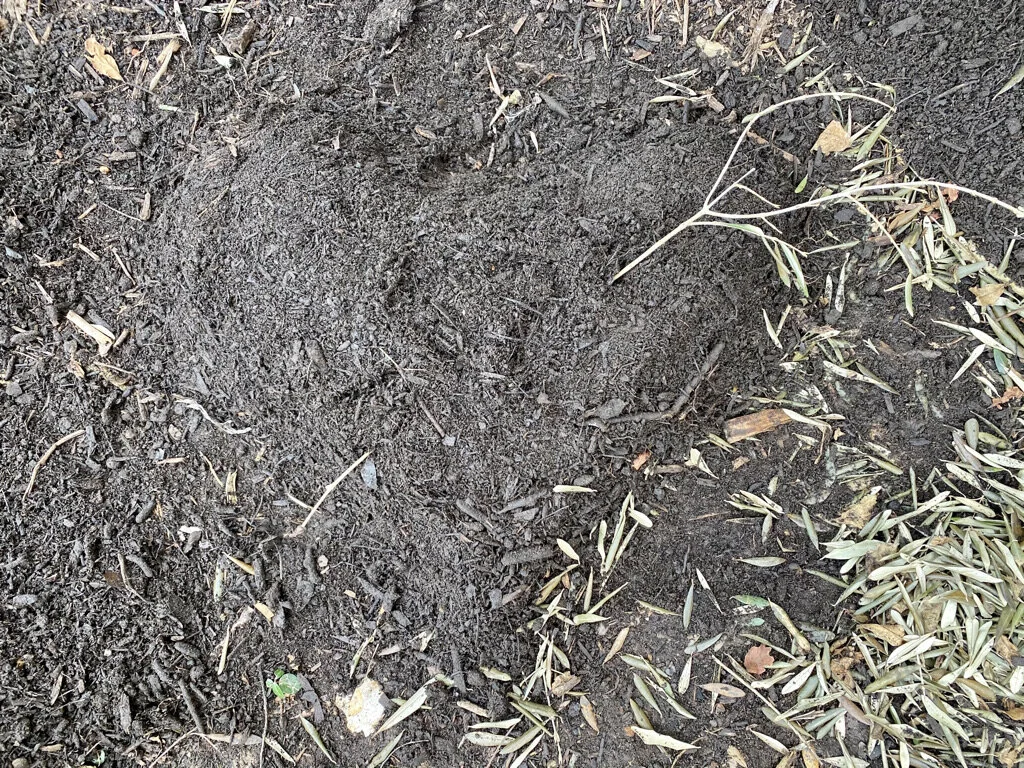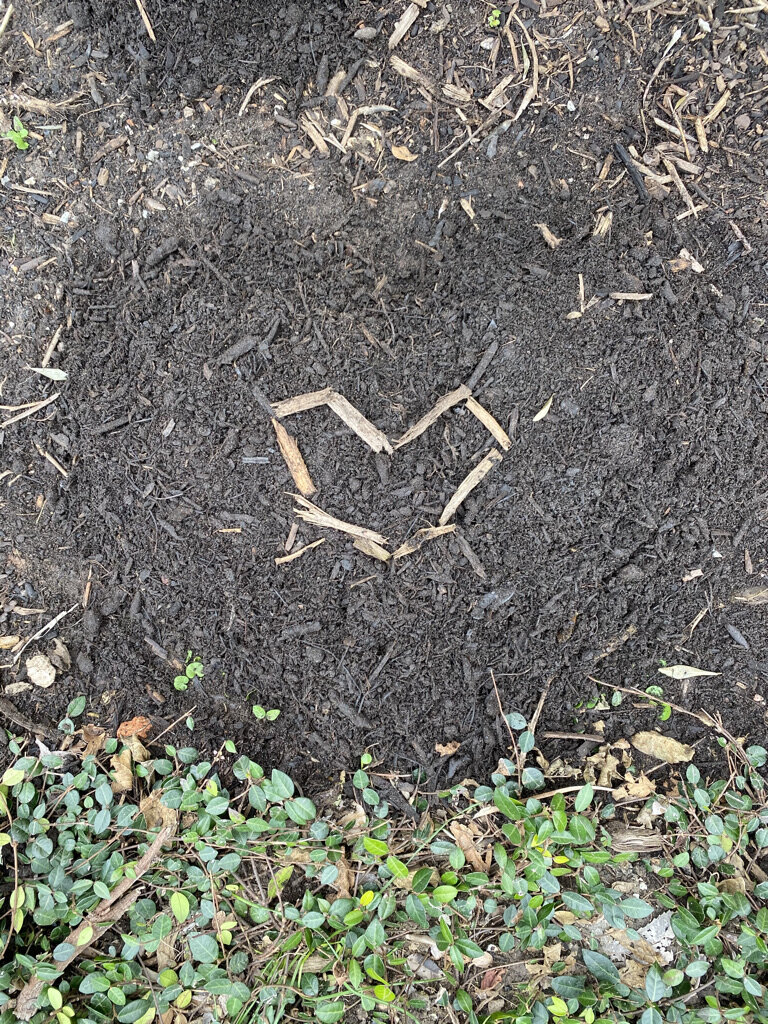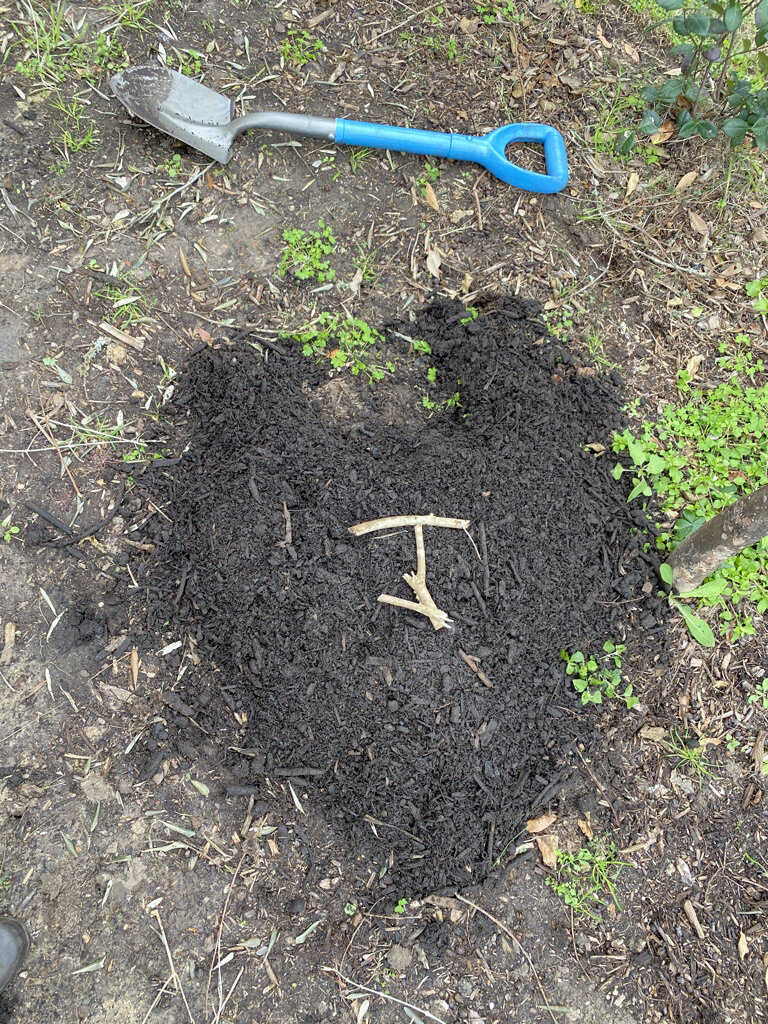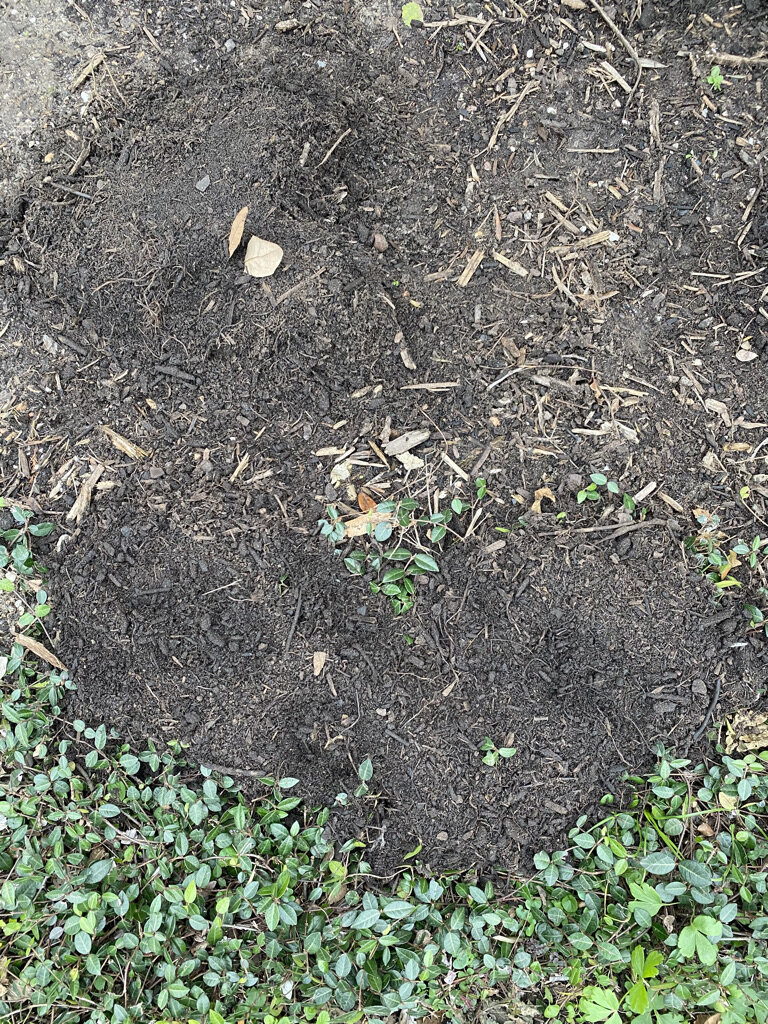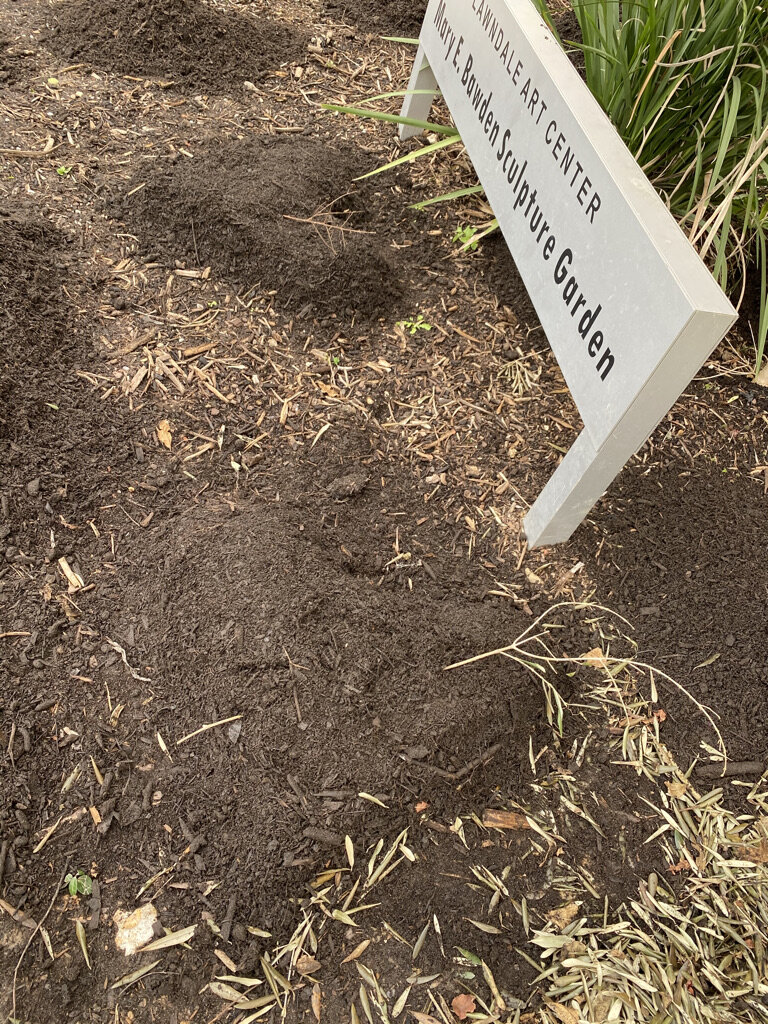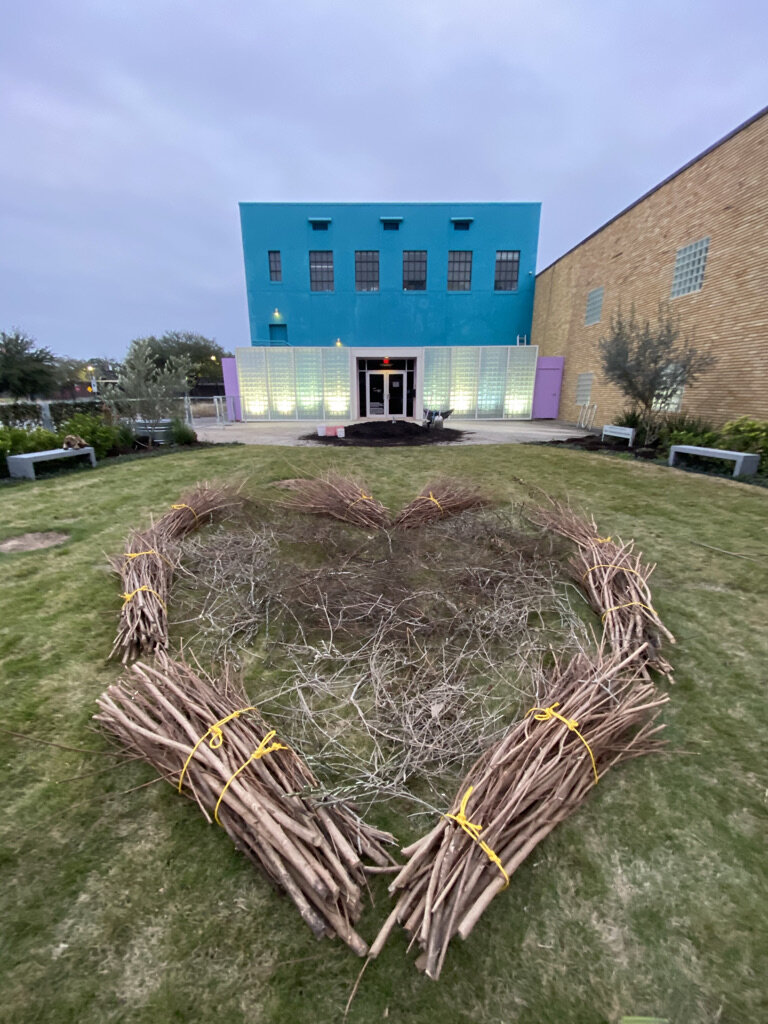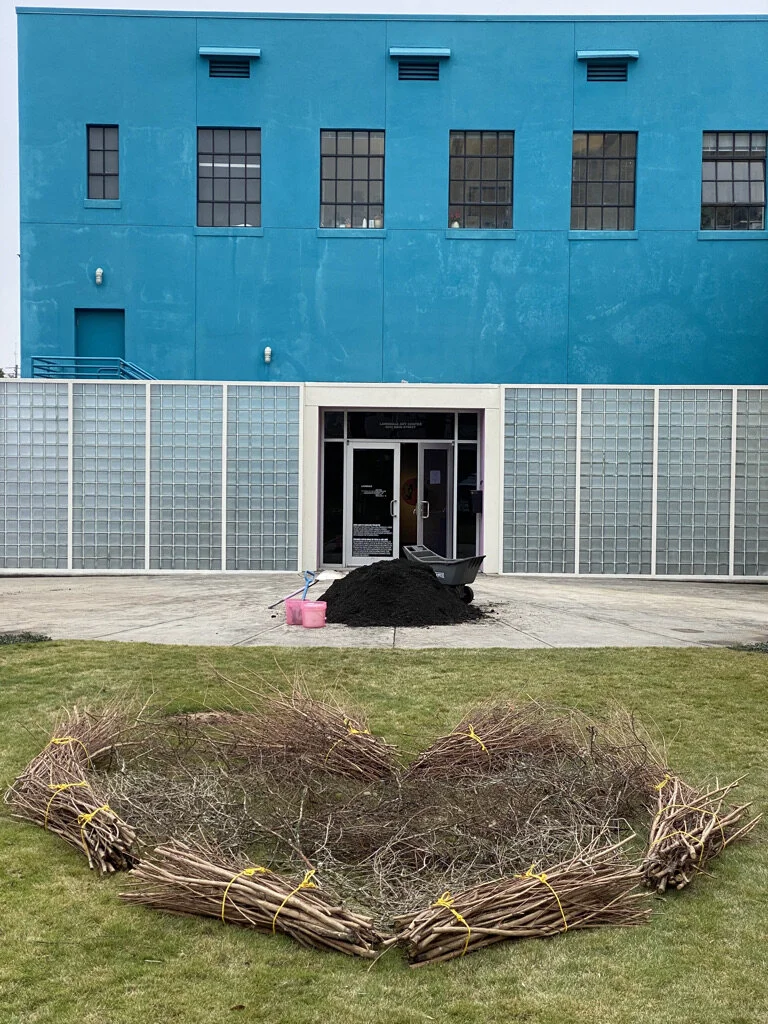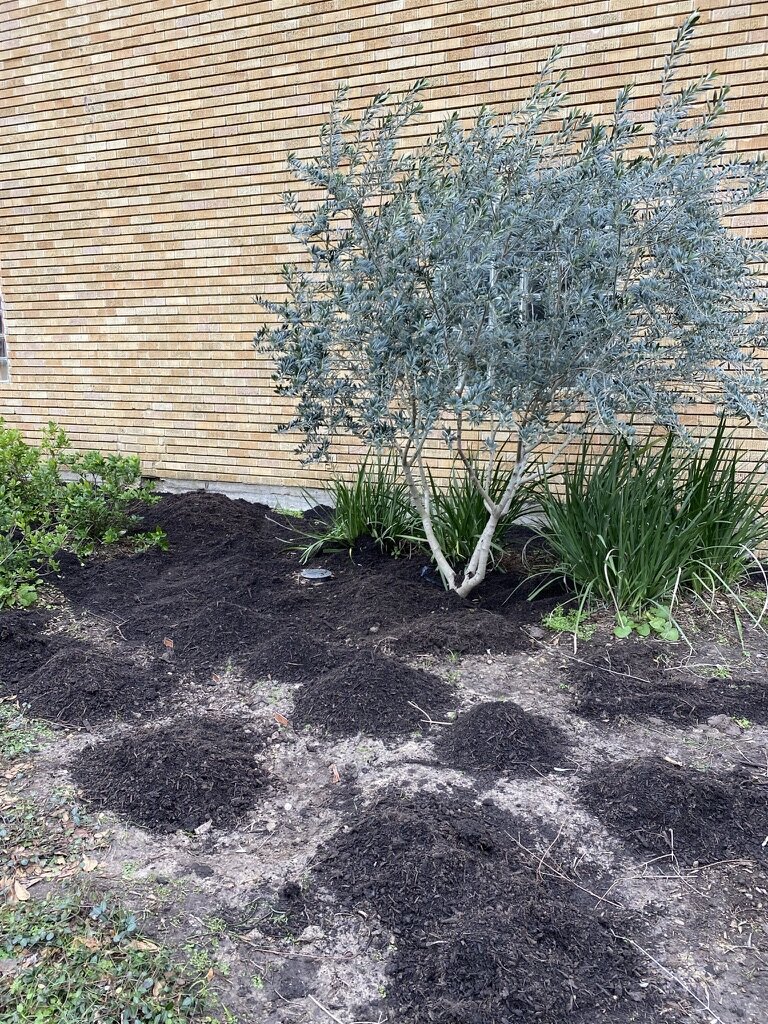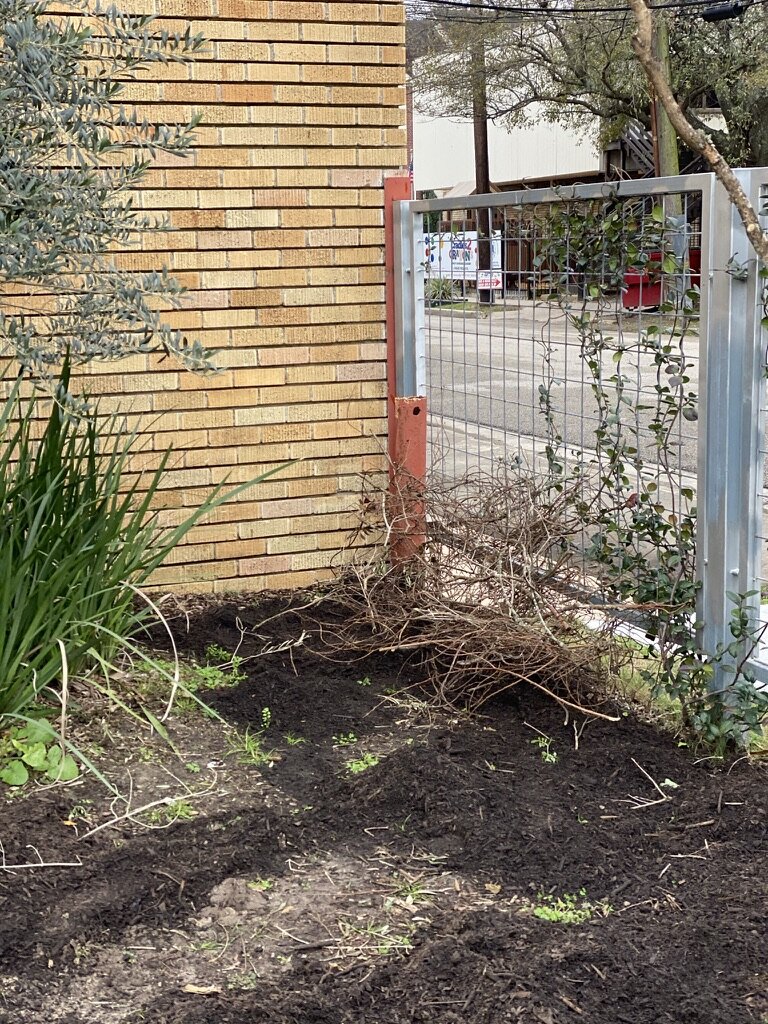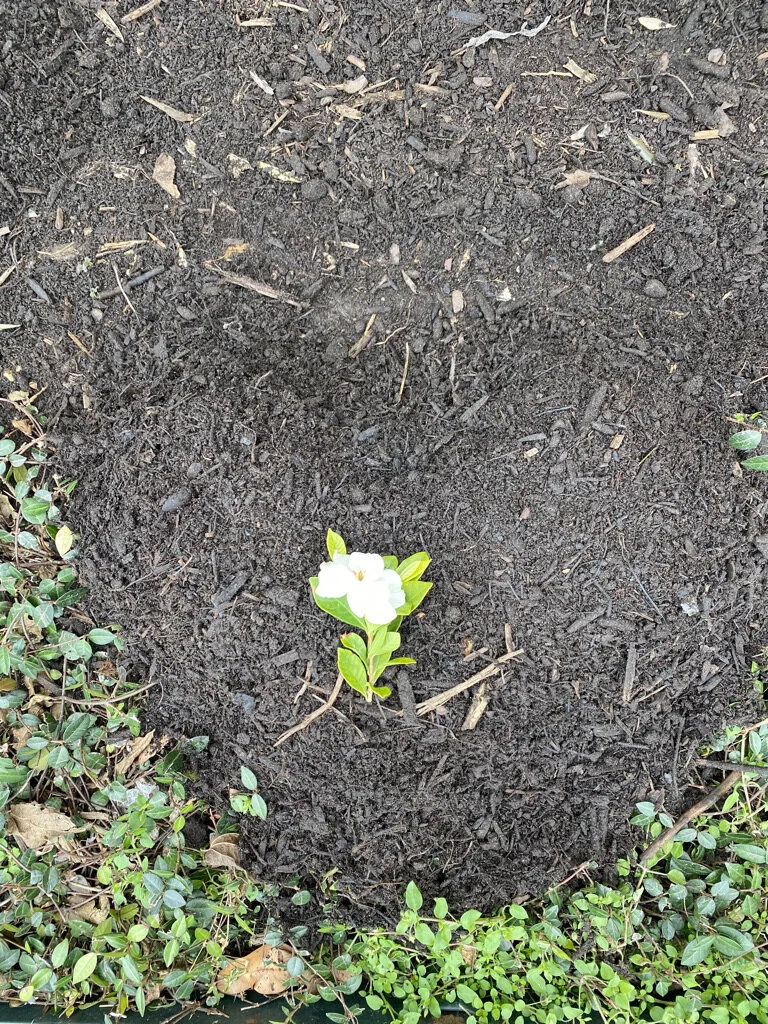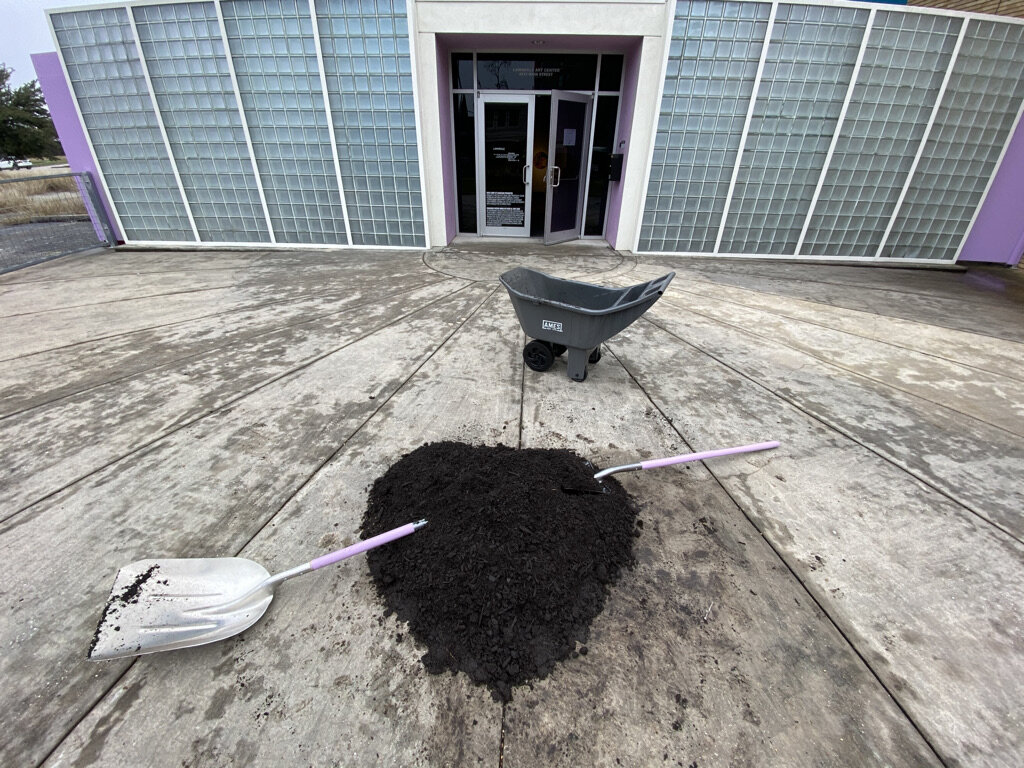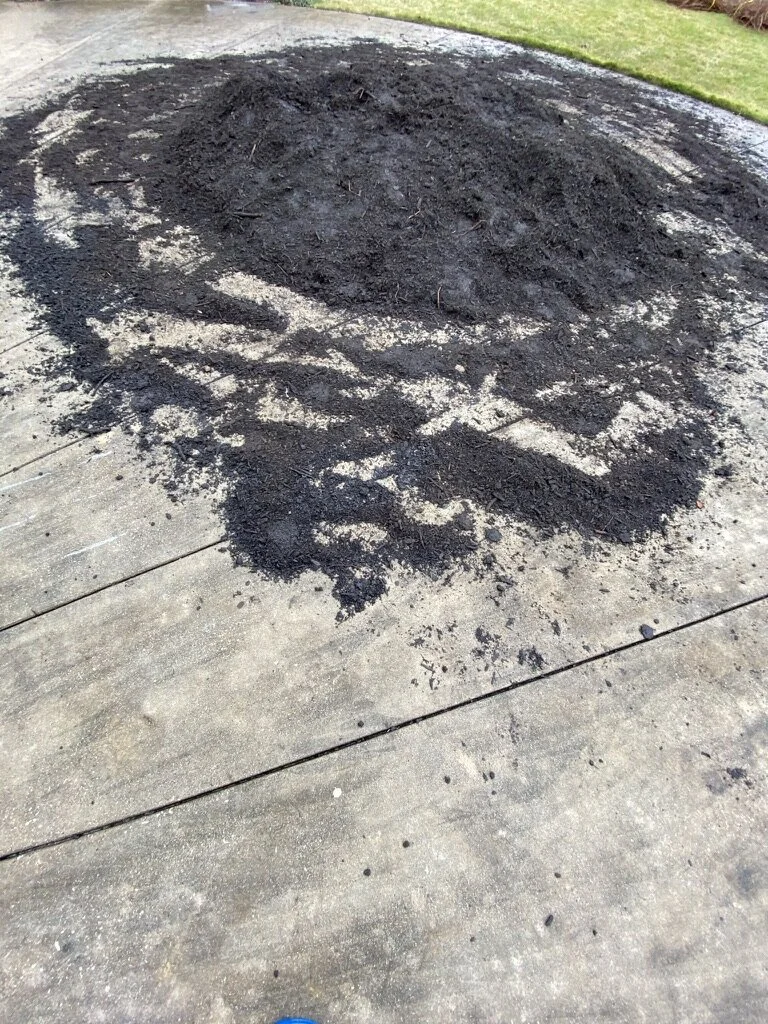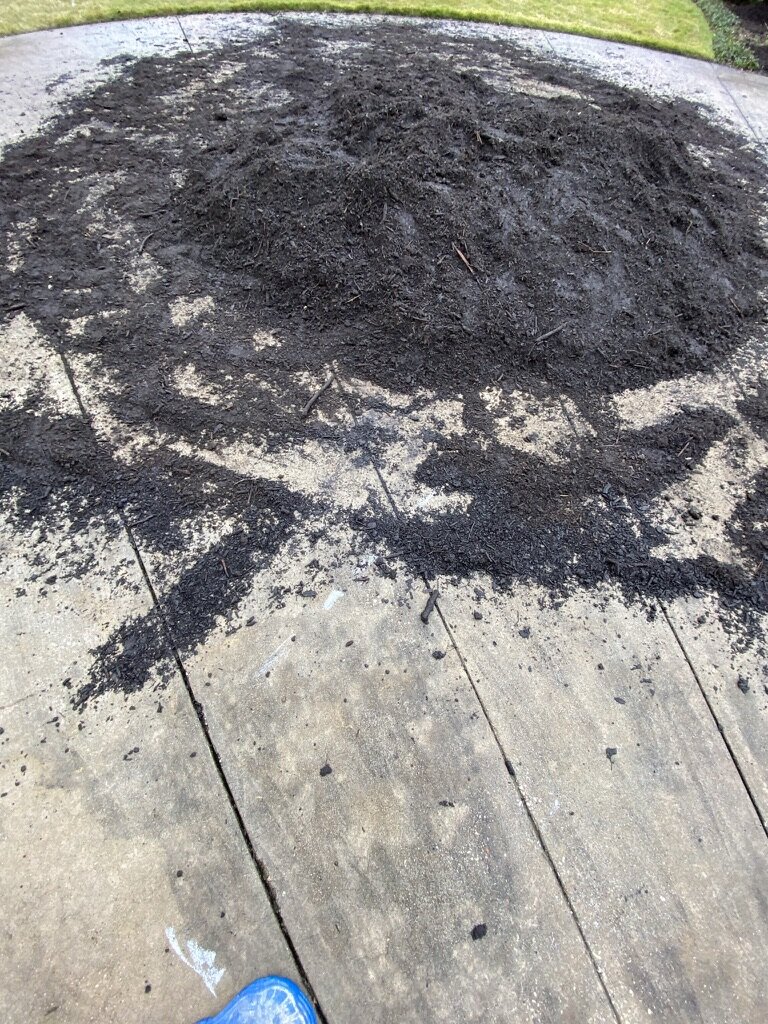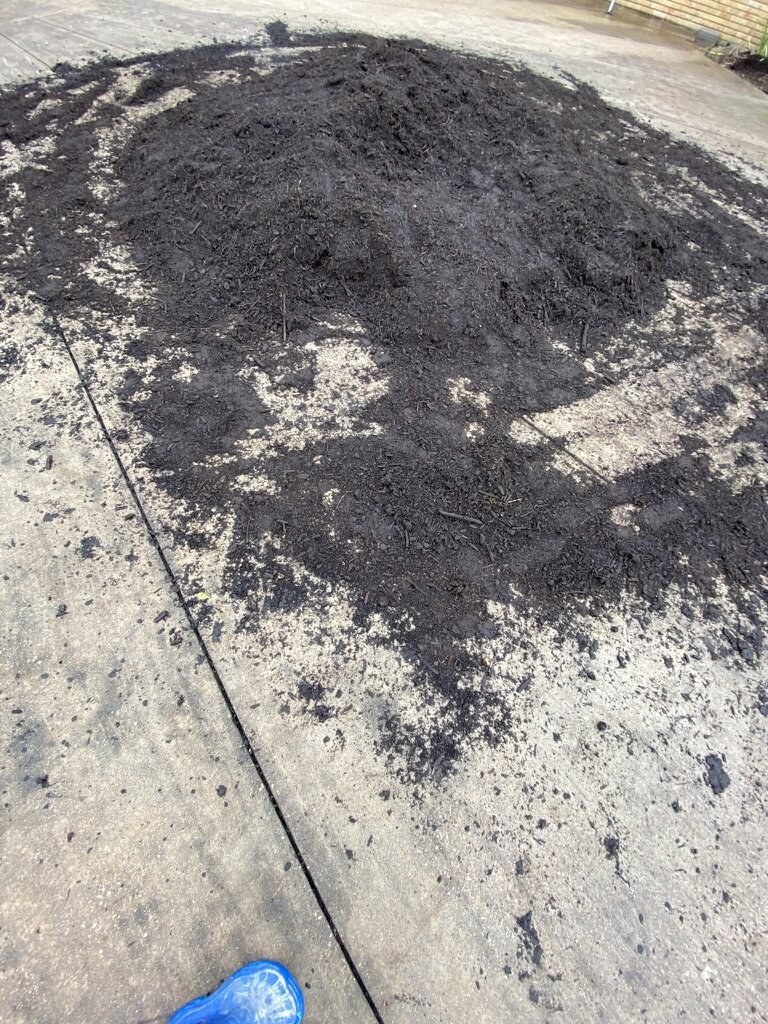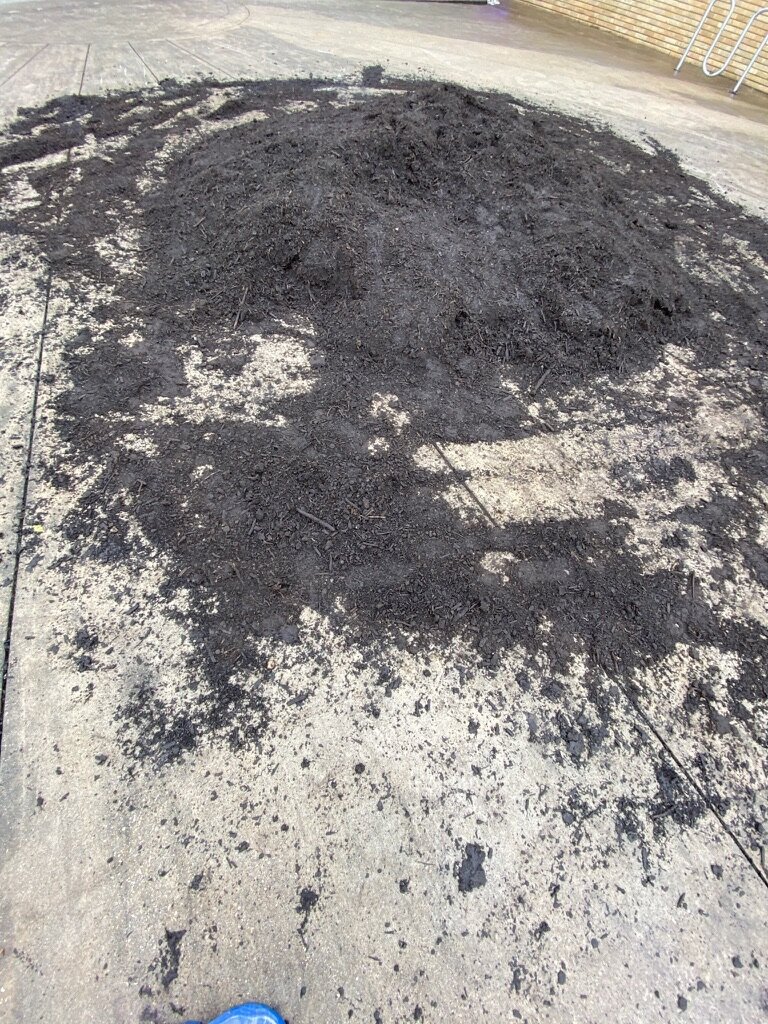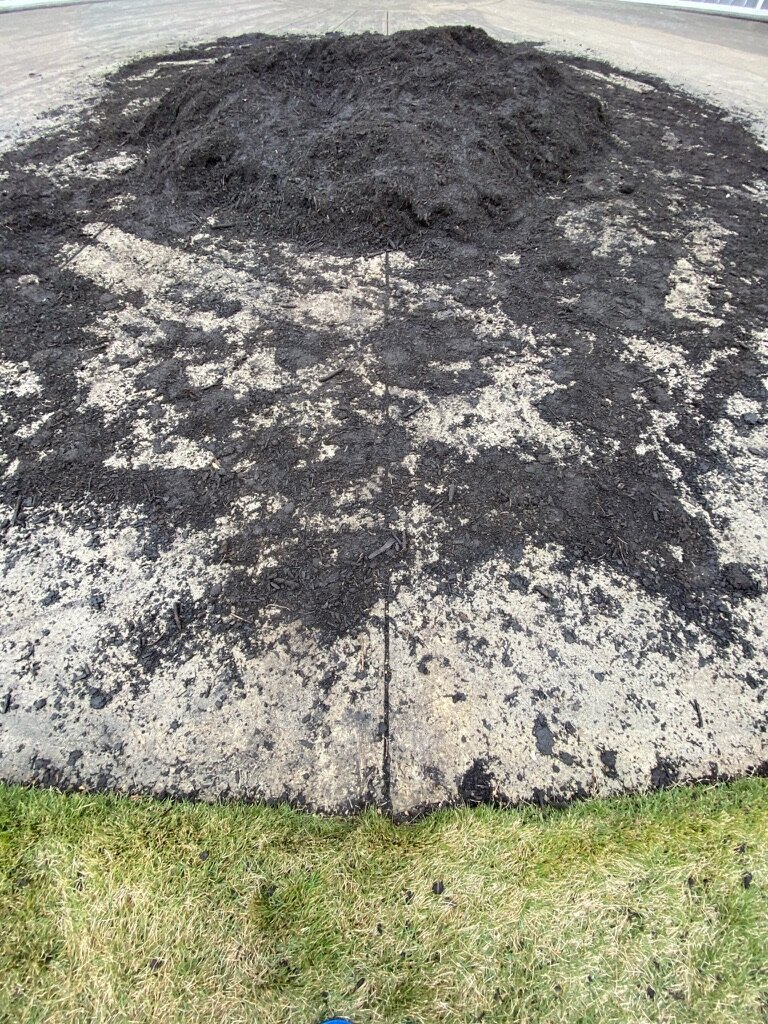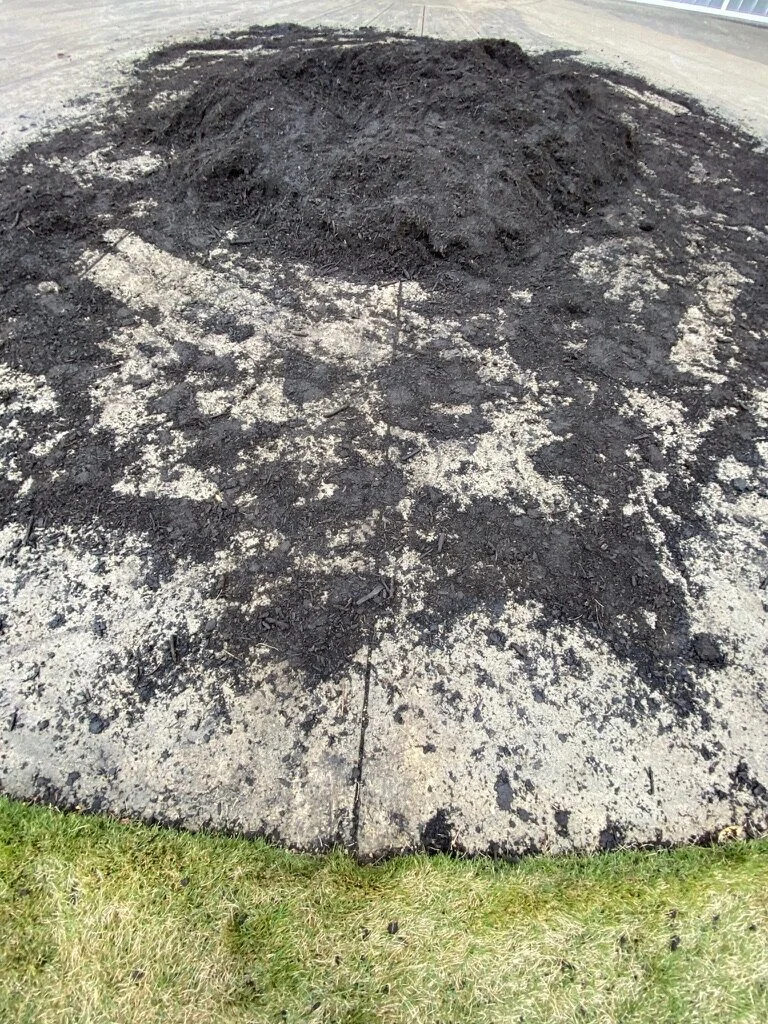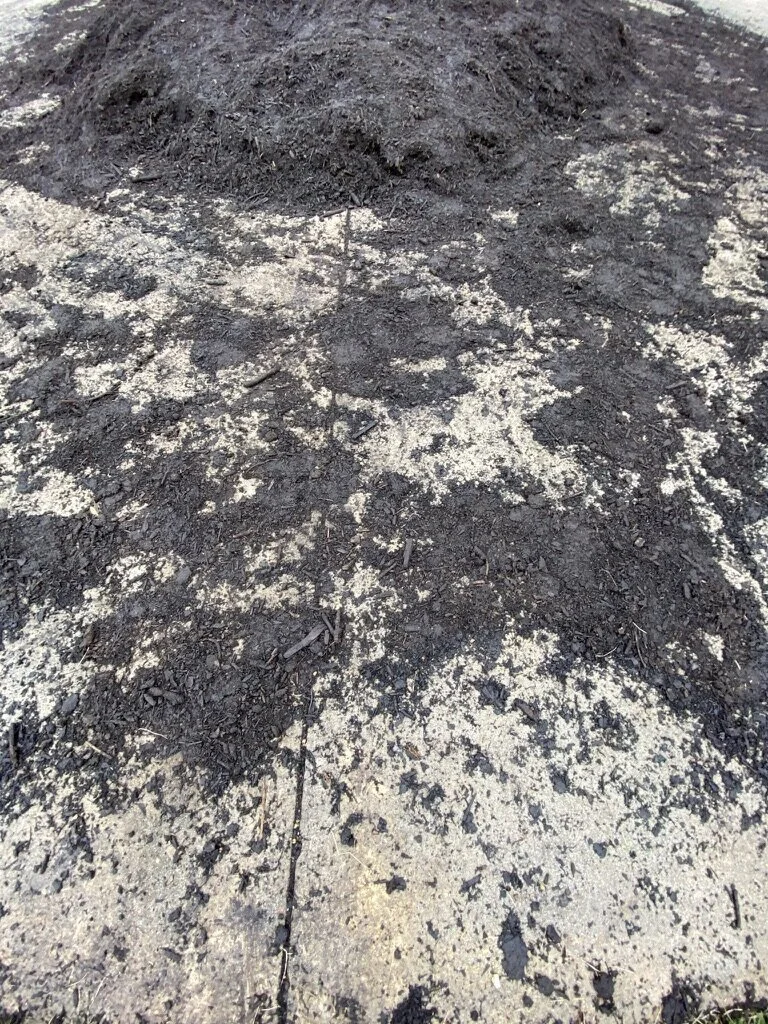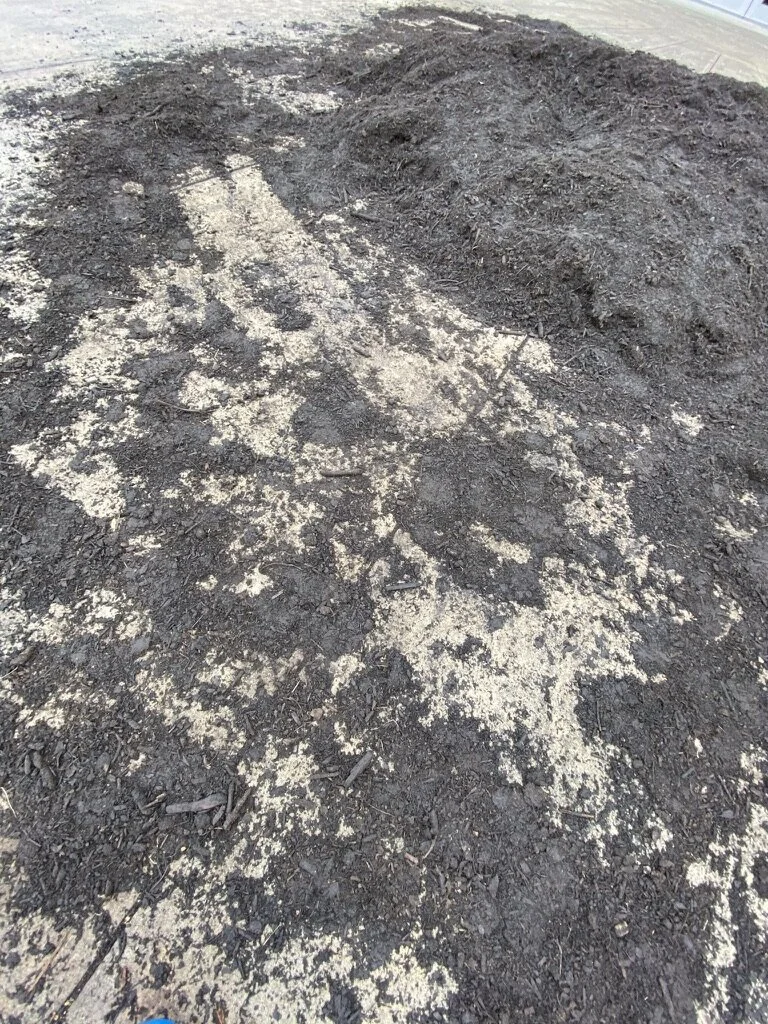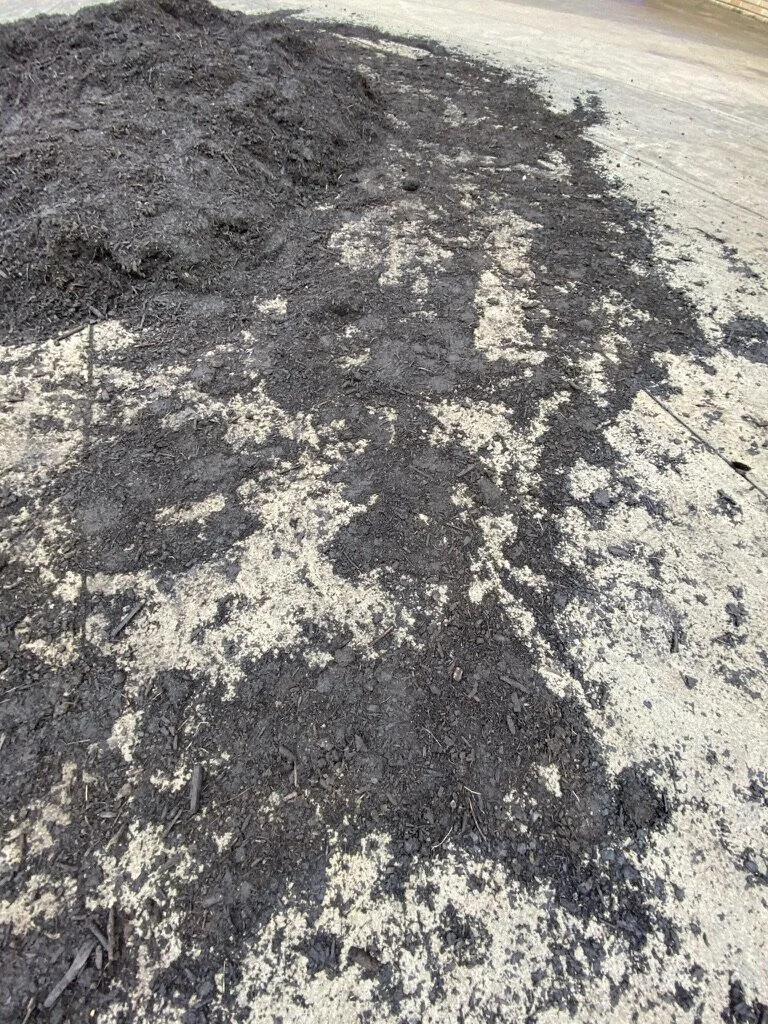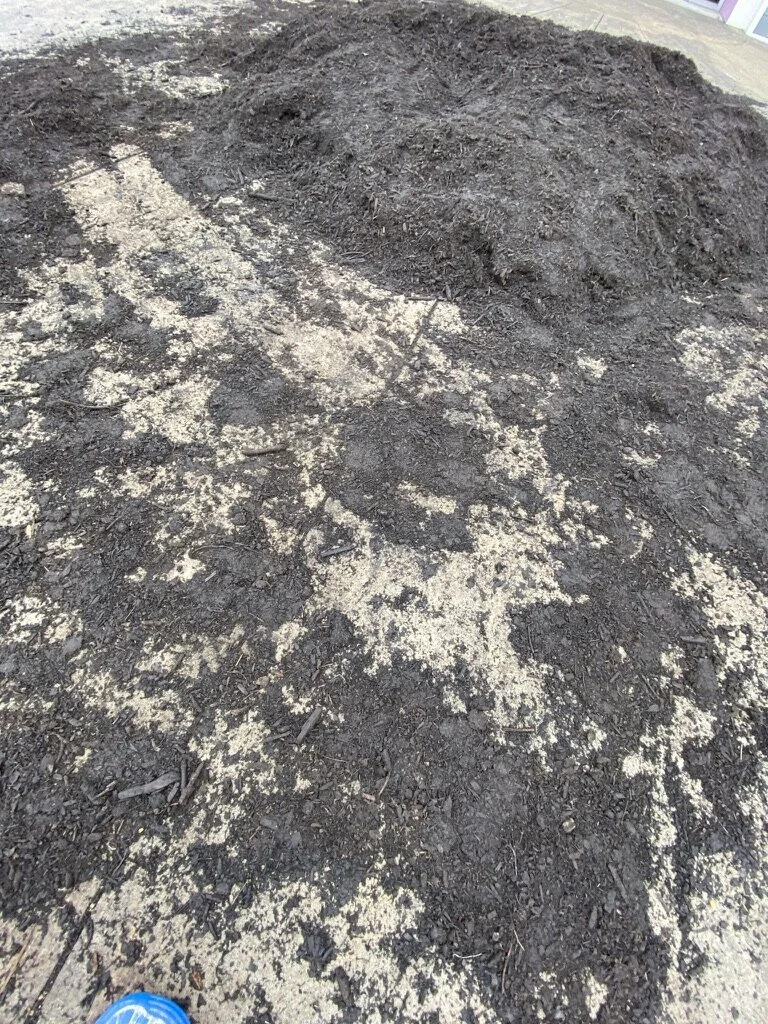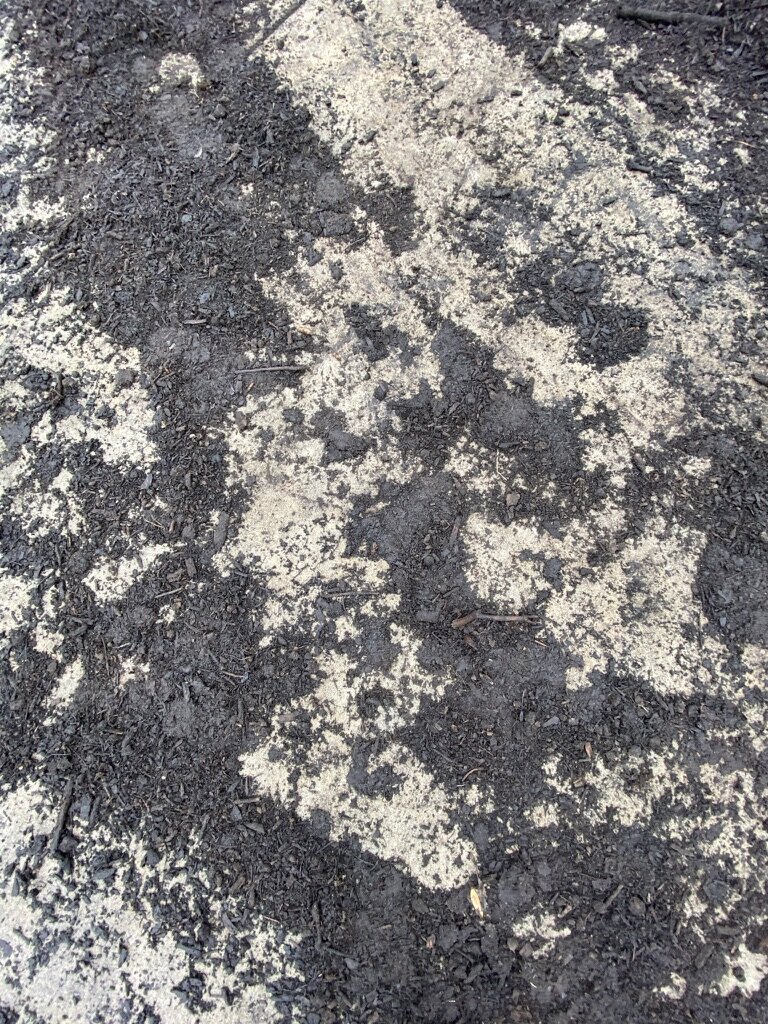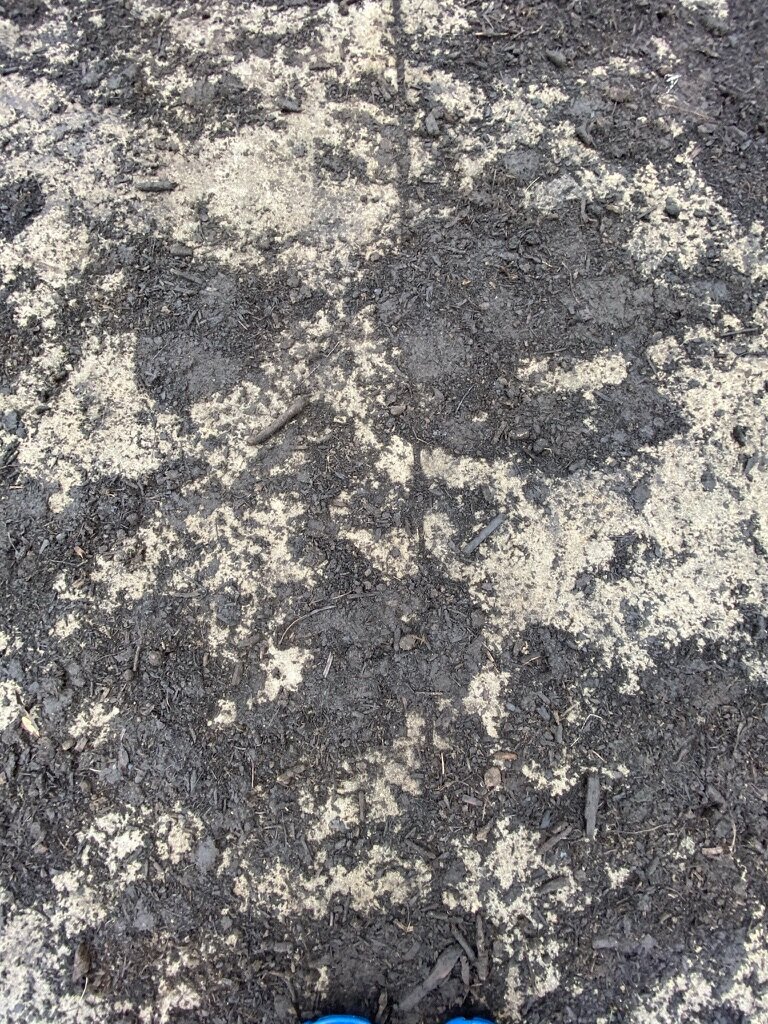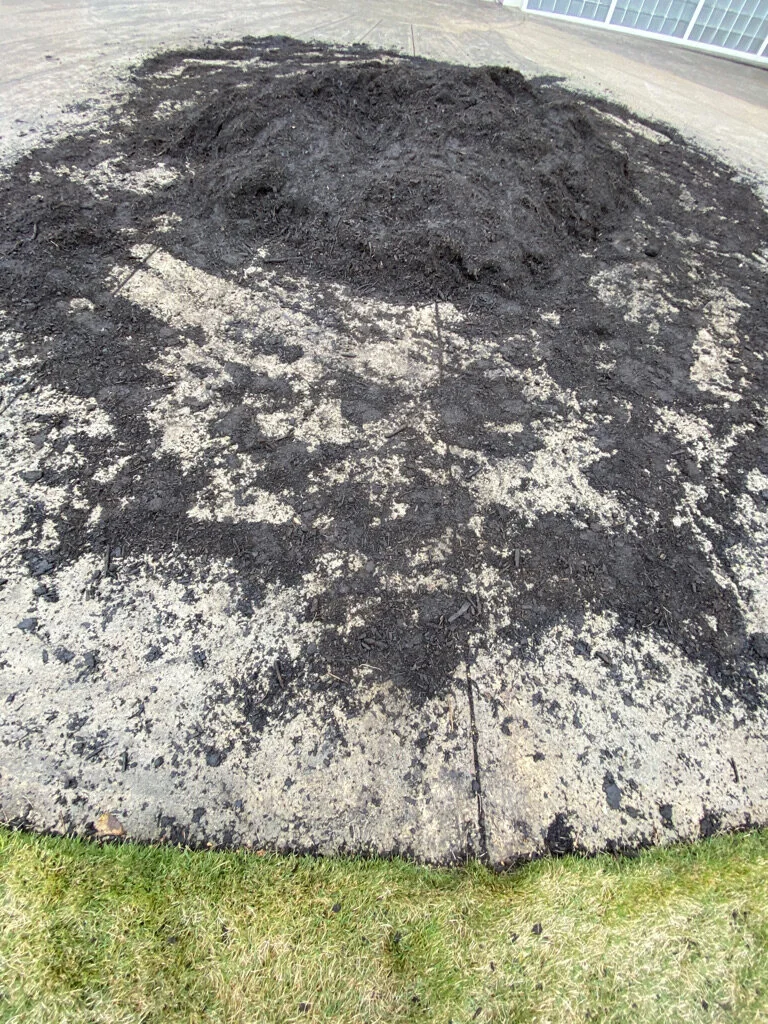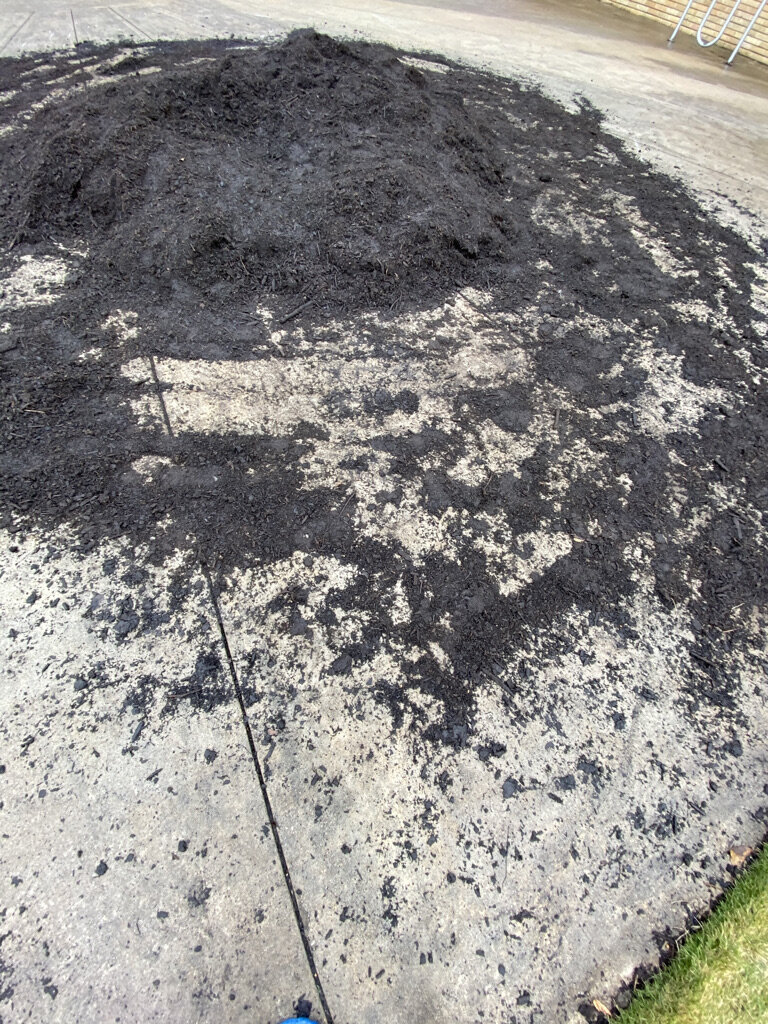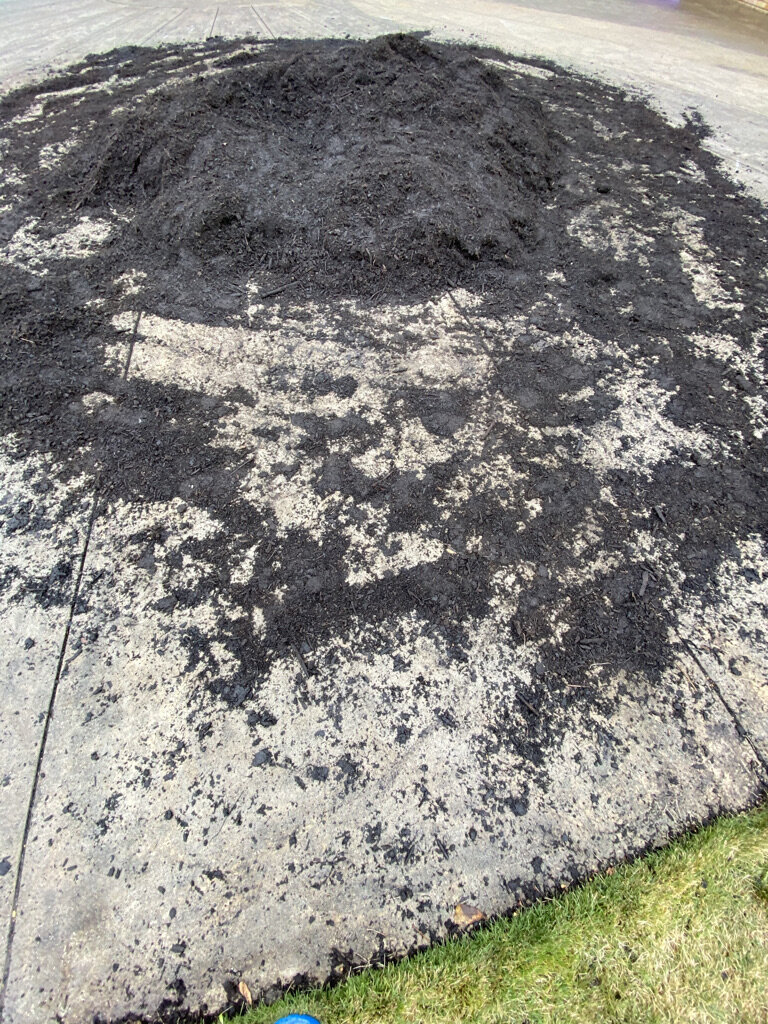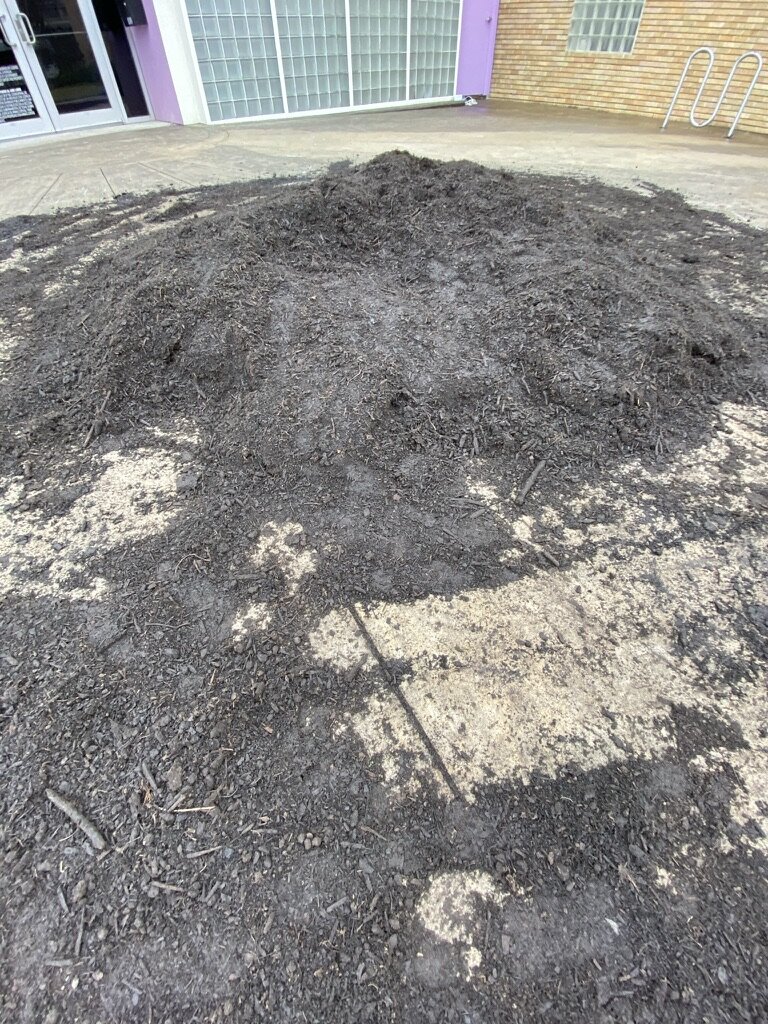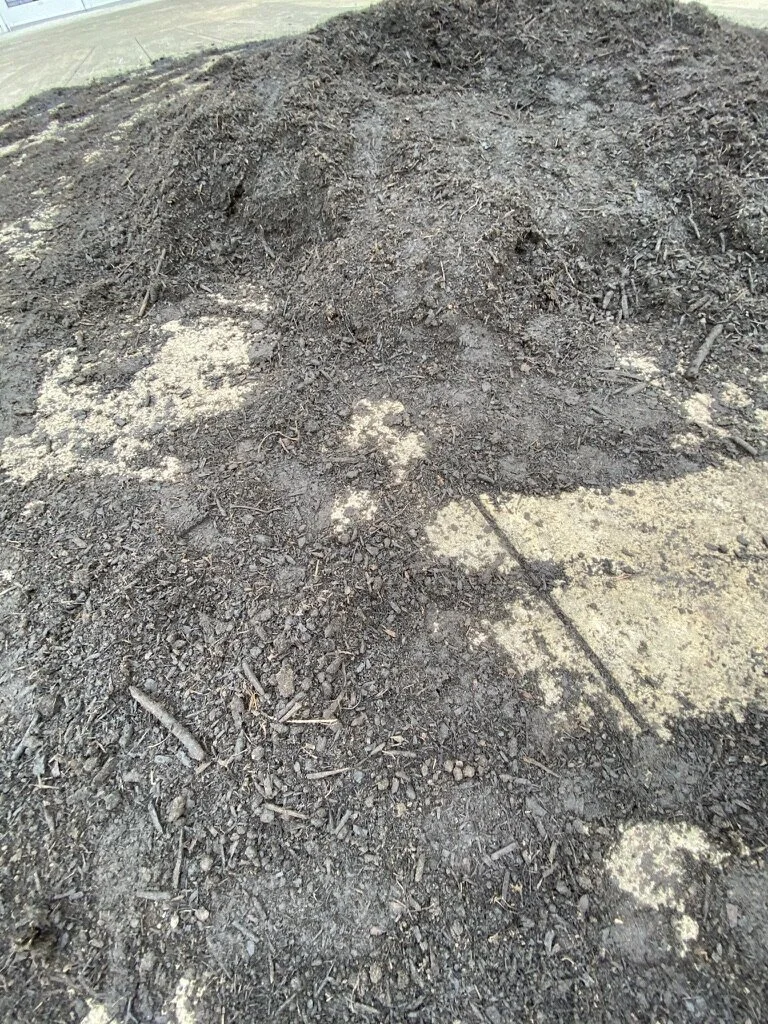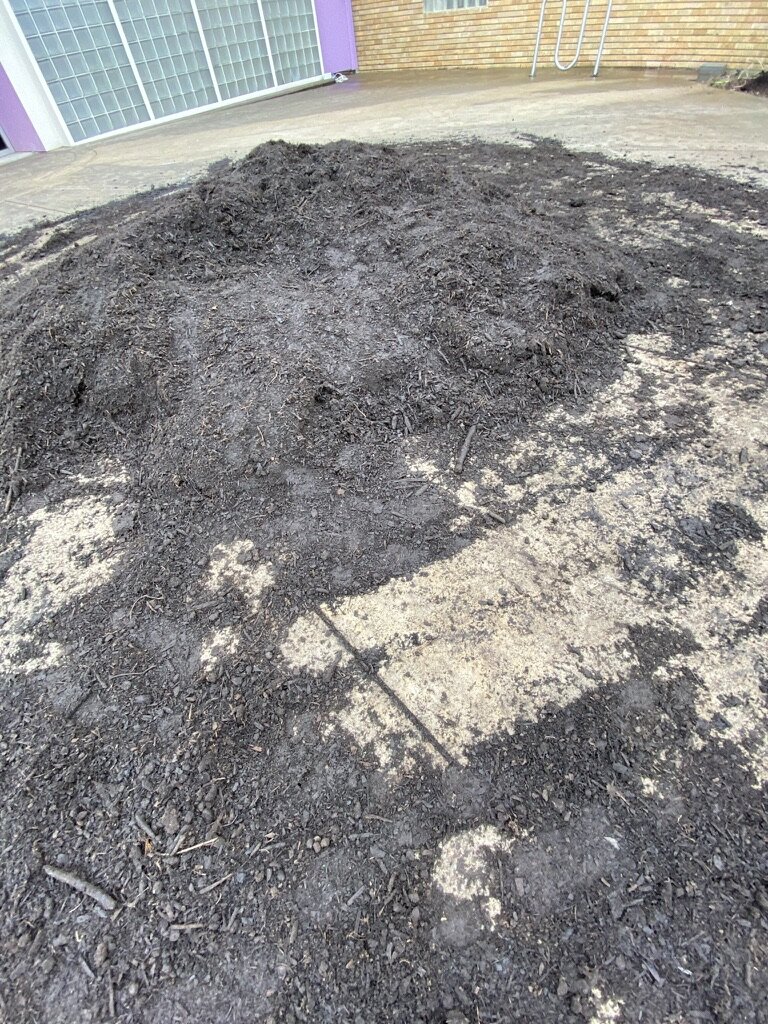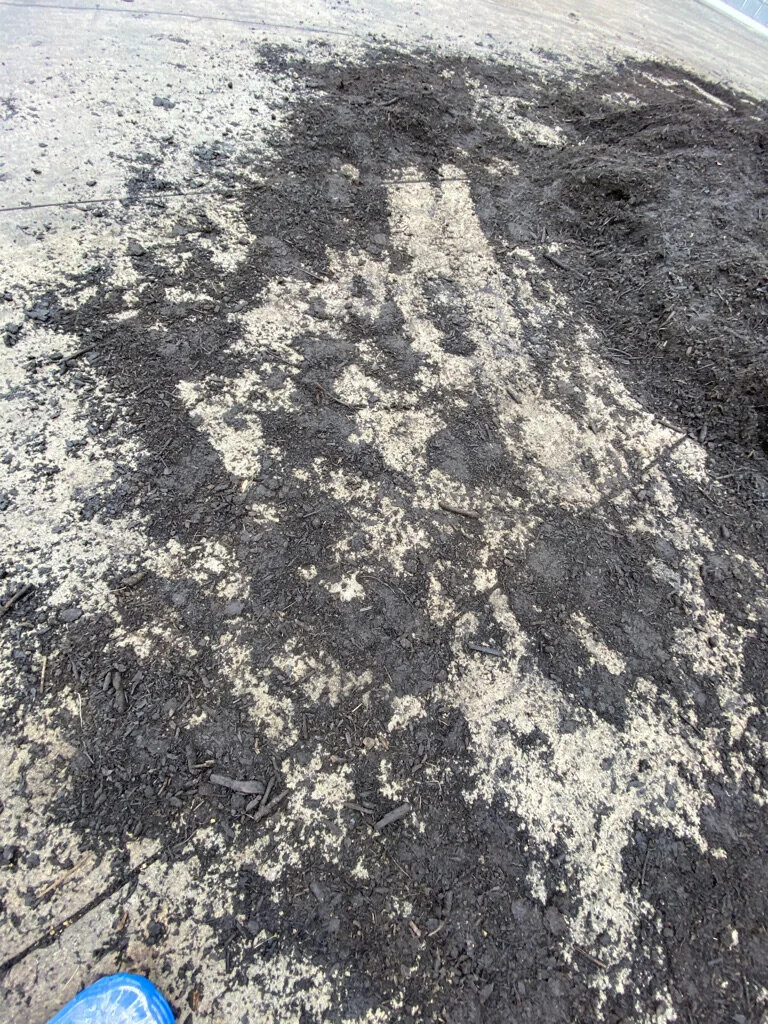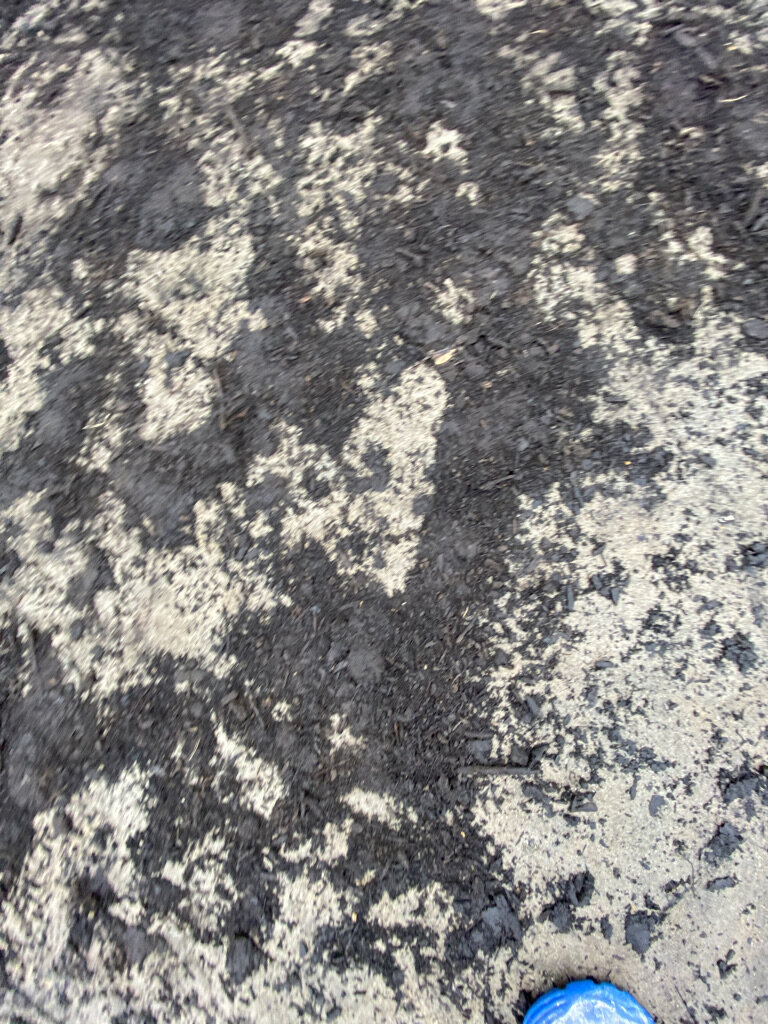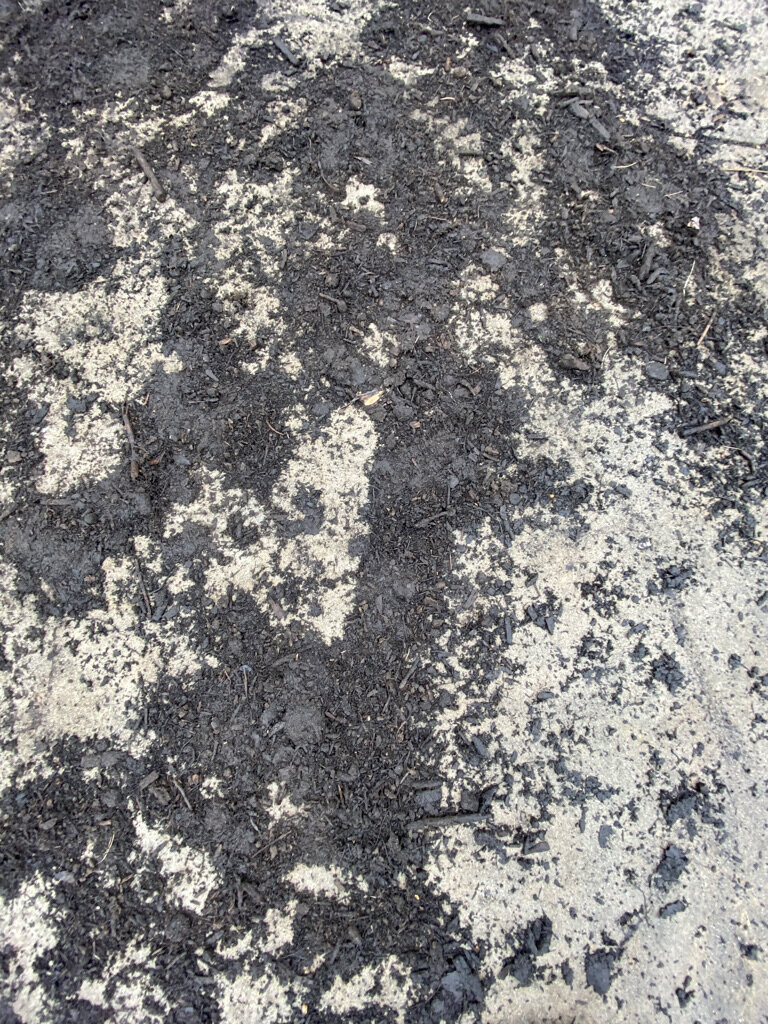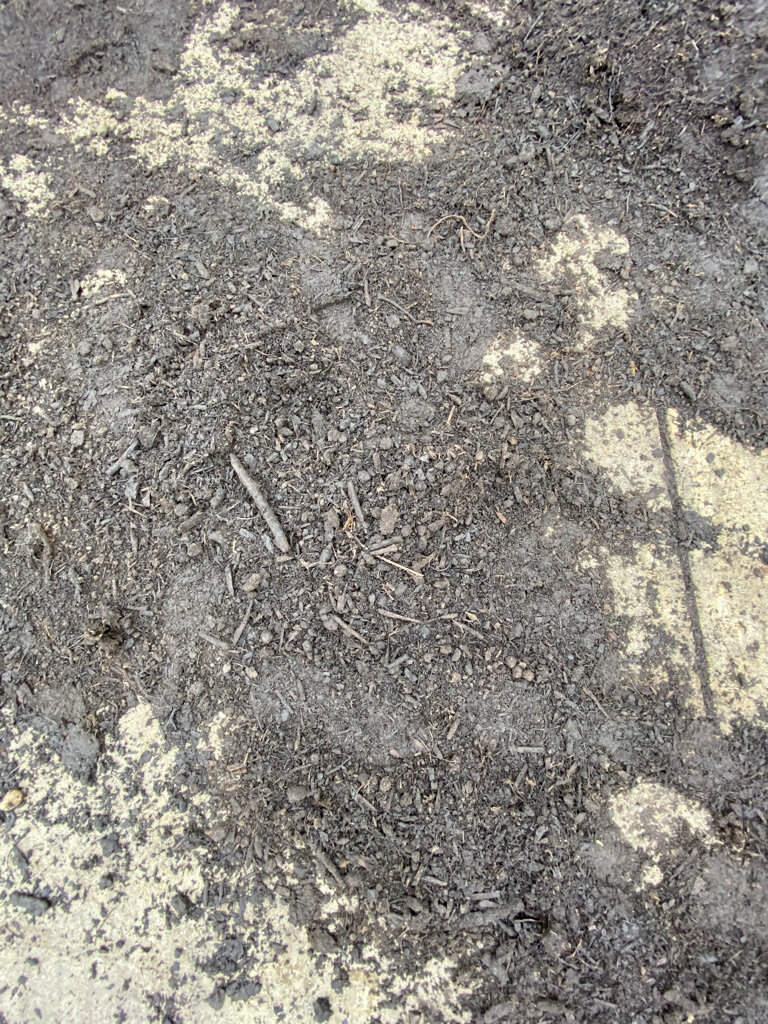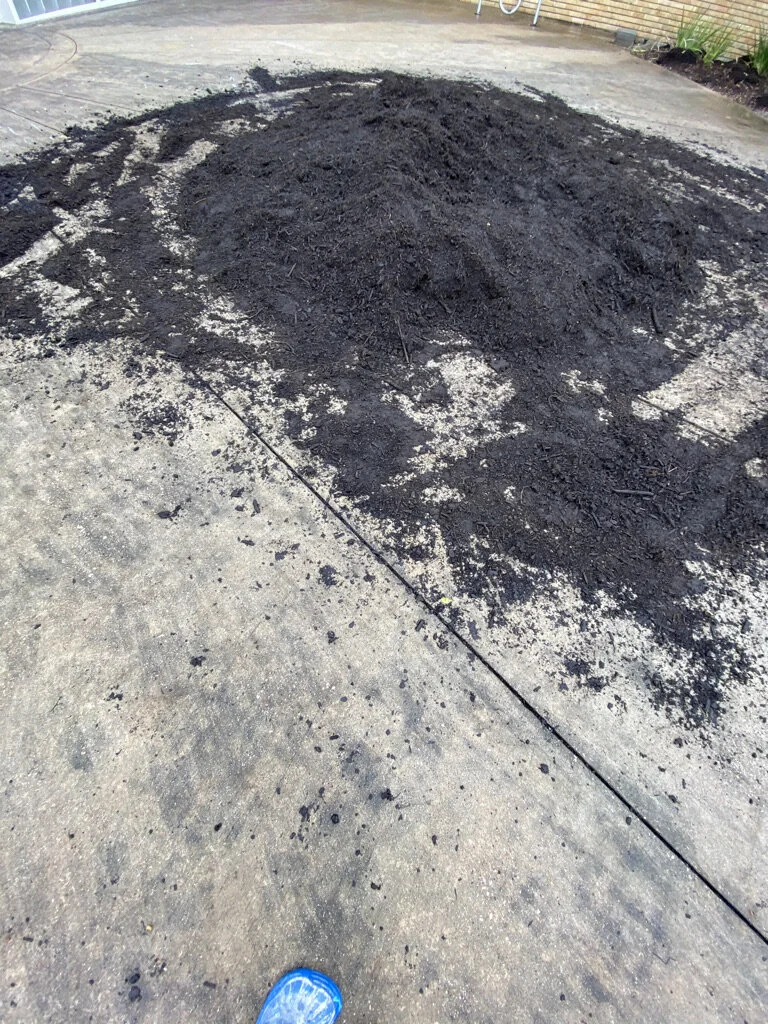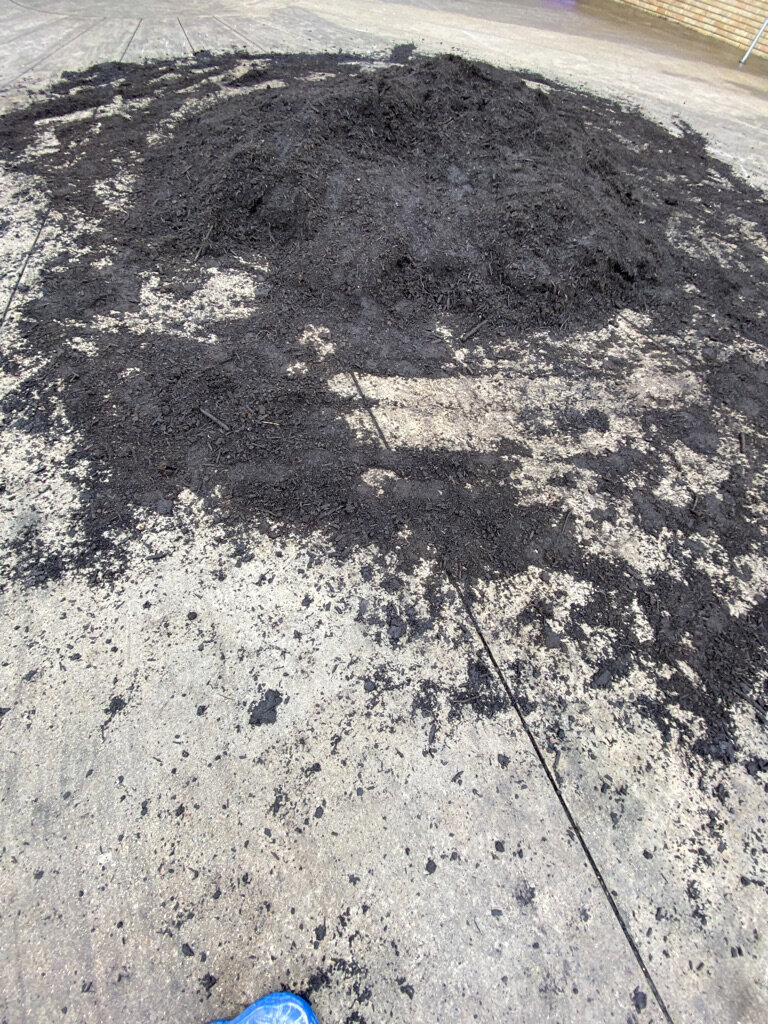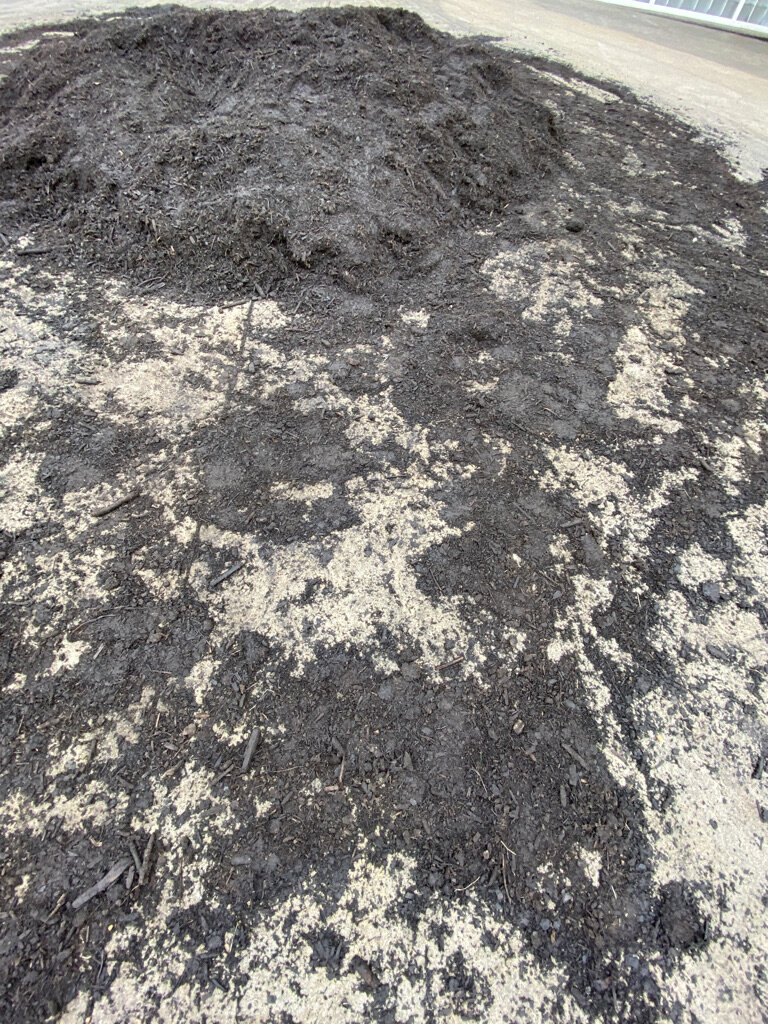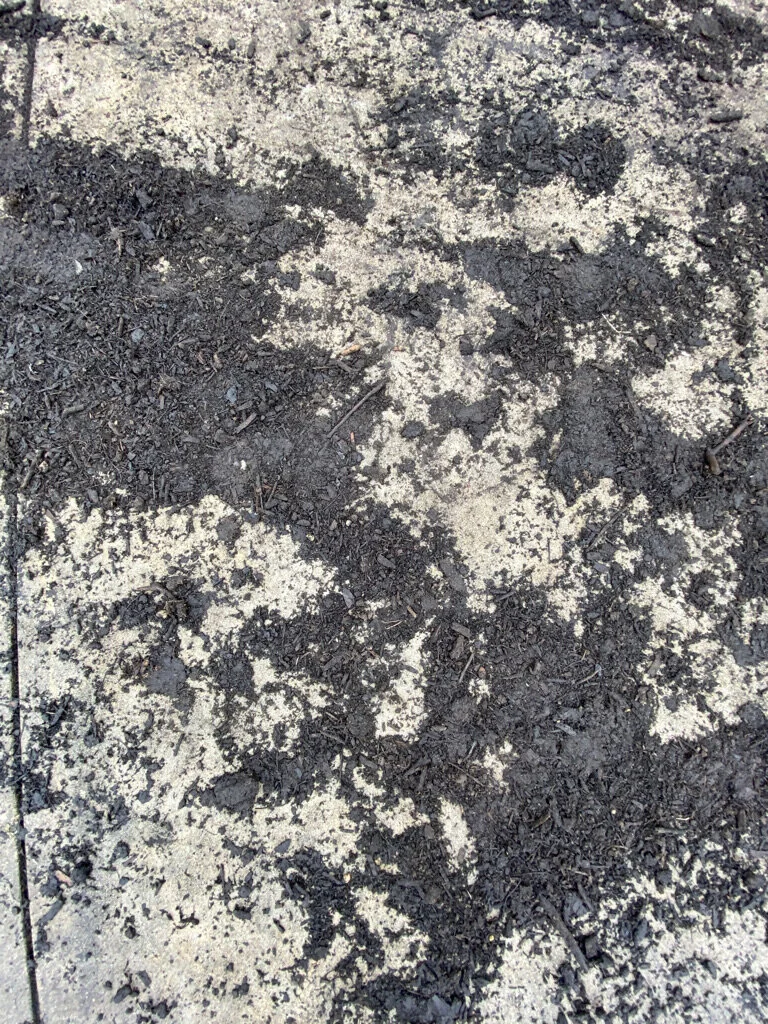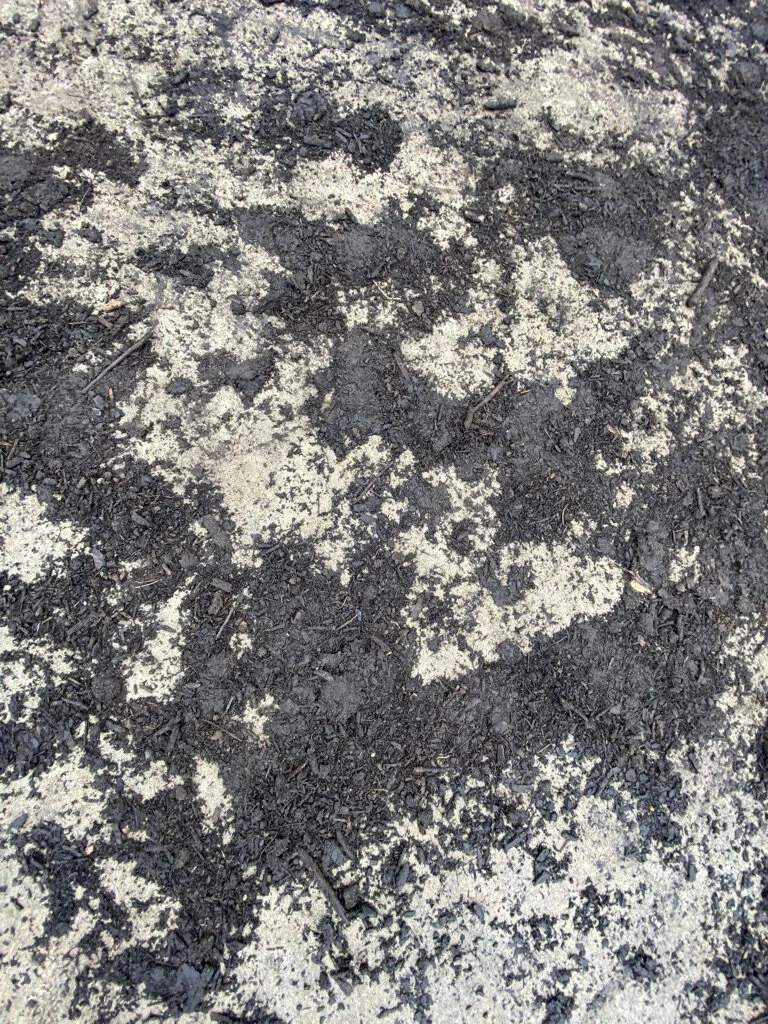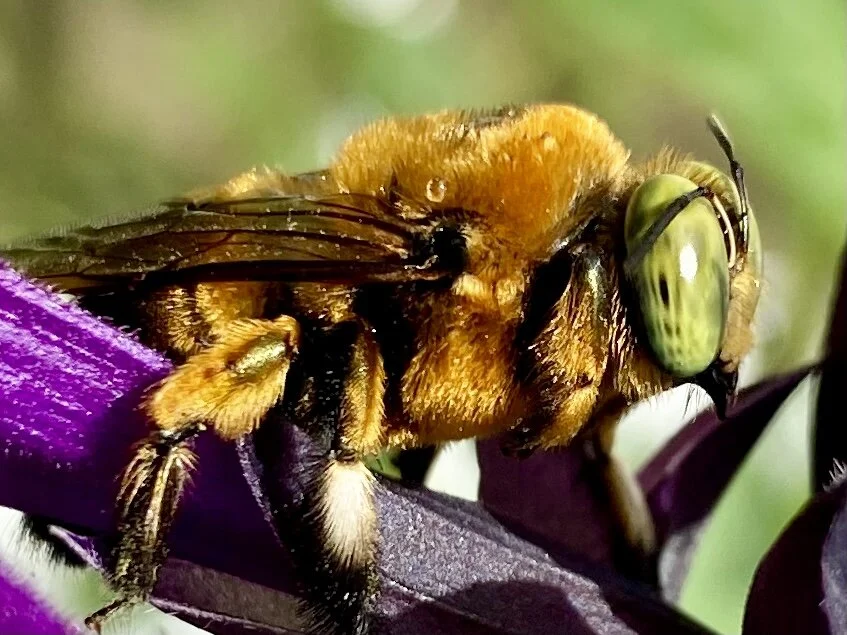GroundWork
How does love grow? In her book BRAIDING SWEETGRASS, R. W. Kimmerer writes, "Breathing in the scent of Mother Earth stimulates the release of the hormone oxytocin, the same chemical that promotes bonding between mother and child, between lovers.”
The second physical element installed in Symbiosis — GroundWork is the base of the living sculpture and the first element of art activism and community involvement/performance art. It is a Valentine's Day activity, a symbolic act of love.
The GroundWork for building trusting relationships begins in the soil. The groundwork we put in place for a healthy relationship with the earth is the same groundwork we put in place for healthy interpersonal relationships: both are full of life, past lives and shared experiences, blended into a rich nourishing future.
Ground
4’ X 10’ X 10’
I contracted to purchase four and one-half cubic yards of native leaf mold compost, rich in beneficial microbes. The rich chocolate brown material was installed in a sculptural pile on Lawndale’s patio. I provided five architectural side elements, two shovels for adults and three sized for children with handles painted the turquoise and violet colors of the physical building and appealing to pollinators. The shovels are both, light-hearted and functional.
WORK
photo - documentation from the performance.
Nature is often the poetic metaphor of love, February 13th through Valentine's day Sunday from 12:00-5:00, with the perspective of love, relationships and ecology, The Lawndale Art community became performance artists, using the light-hearted shovels they spread love—one shovel of humus at a time—into the sculpture garden beds, building the GroundWork needed as the base for the living site-specific sculpture.
HE(ART)
15’ X 15’ X 15”
Through symbolism and performance, art GroundWORK demonstrated that the roots of love are nestled in living soil, changing how we think about our treatment of the earth — that treatment is connected to our loved ones' health. Distributing the compost participants sculpted poetic gestures forever embedded in the spirit of the garden.
Despite the oncoming extreme weather conditions of 2021 and the need to stop early due to rain, the event achieved its mission museum patrons and neighbors dug in. I had the opportunity to spread my knowledge about the Coastal Prairie’s important role in sequestering carbon, craft new ideas about urban landscapes and plant seeds for future generations. A neighbor of Lawndale’s enacted a crucial part of the performance. A father who lives in a nearby townhouse that I often see in the garden stopped by while I was setting up. He told me he would be back after he picked his wife up from her chemotherapy. That explained why he was always alone with his kids. He arrived mid-afternoon with his two young boys and dog sporting a cone on its head. Each boy, the oldest nine, picked a shovel and started filling buckets; entranced, they never squabbled or bickered. The father would grab two buckets at a time and proceeded to spread the rich soil mostly in silence. I gave them their space, kept the frisky puppy busy and observed as they worked and the Mother Earth treated their hearts. The groundWORK was heartwarming.
The day Texas began to thaw, I eagerly went to Lawndale to inspect GrounWork, Symbiosis and create a new piece with the found object bundles of branches. I planned on addressing the extreme weather that brought our state to its knees. Lifting the bundles exposed patches of spring green blades of grass. Hyper focused on creating the new environmental message, I didn't stand back and look. Luckily, Stephanie exiting the building running late for a meeting, yells out, "Are you taking a photo of the heart?" — I stopped what I was doing. I didn't think anyone else could see it. I moved the bundles again, climbed up the fence to get a birds-eye view. Clear as day, Mother Earth, too, had inscribed a message.
I went back that night to capture the piece in the glow of the building's lighting and sunset. The lights never came on. The power outage had disrupted the building's timer. Friday evening, the lighting was functioning; I climbed back up the fence and documented the last inscription in GroundWORK.
The artist- Mother Earth.
E(ART)H
Mother Earth February 2021
15’ X 15’
What should we read into the green valentine? How beautiful and rich life will be when we work in tandem with natural processes.
The reliefs/inscriptions were installed in the garden during the event. Artist and friend Ellen Ray and her husband, Poet Andy Ray, installed the first heart together under the southwest Olive tree. Am I surprised an artist and a poet, married 36 years, with two children, found the most poetic place to install their Valentine’s Day tribute? A place under a tree that represents peace, hope, enduring love.
Planted immediately at the Olive trees’ base is Ellen and Andy’s, big heart. — pure poetry. The ephemeral inscription is already embedded in the garden's history, not distinguishable by the eye. Any time I look at this tree, I will always see the heart of two artists.
Leaving early on St. Valentine’s Day due to rain, the Texas Freeze of 2021 and the energy grid system collapse I took time to document the gorgeous marks left on the concrete. Abstract mark-making draws me in regardless of the weather.
MARKS
20’ X 20’ ephemeral relief
compost of native leaves, mold, horse and chicken manure on concrete.
Sowed with poetry is a scientific component to GroundWork - Under construction


